 |
||
|
HOME
|
US Navy -
ships
|
US Navy - air
units
|
USMC - air
units
|
International
Navies
|
Weapon Systems
|
Special Reports |
||
|
US Navy - Guided Missile Destroyer DDG 97 - USS Halsey |
||
|
||
| 07/24 | ||
|
Type, class:
Guided Missile Destroyer - DDG; Arleigh Burke class, Flight IIA Builder: Ingalls Shipbuilding, Pascagoula, Mississippi, USA STATUS: Awarded: March 6, 1998 Laid down: January 13, 2002 Launched: January 9, 2004 Commissioned: July 30, 2005 IN SERVICE Homeport: Naval Base San Diego, California Namesake: Fleet Admiral William F. “Bull” Halsey (1882-1959) Ships Motto: HIT HARD - HIT FAST - HIT OFTEN Technical Data: see: INFO > Arleigh Burke class Guided Missile Destroyer - DDG |
||
| images | ||
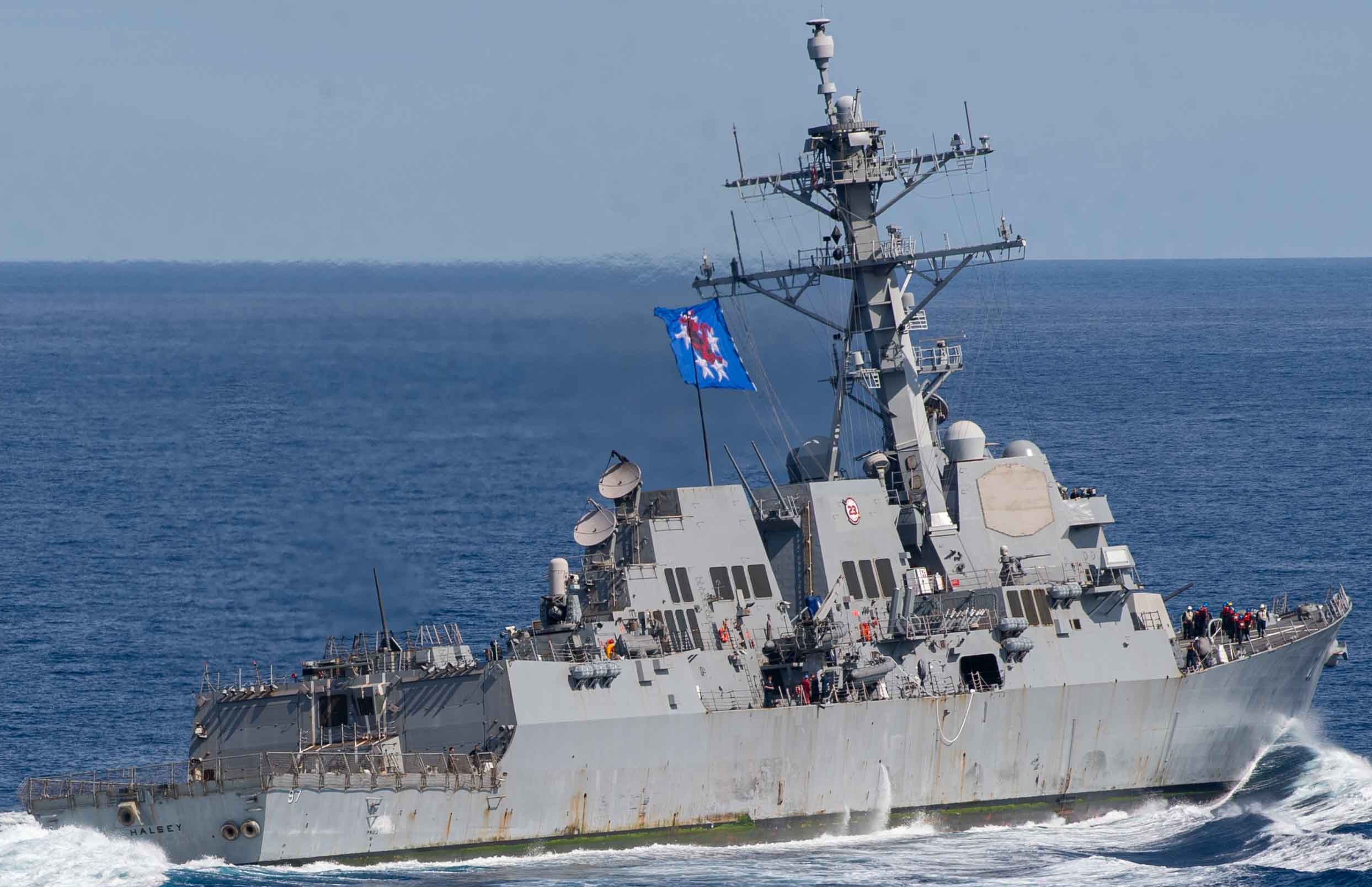 South China Sea - July 2024 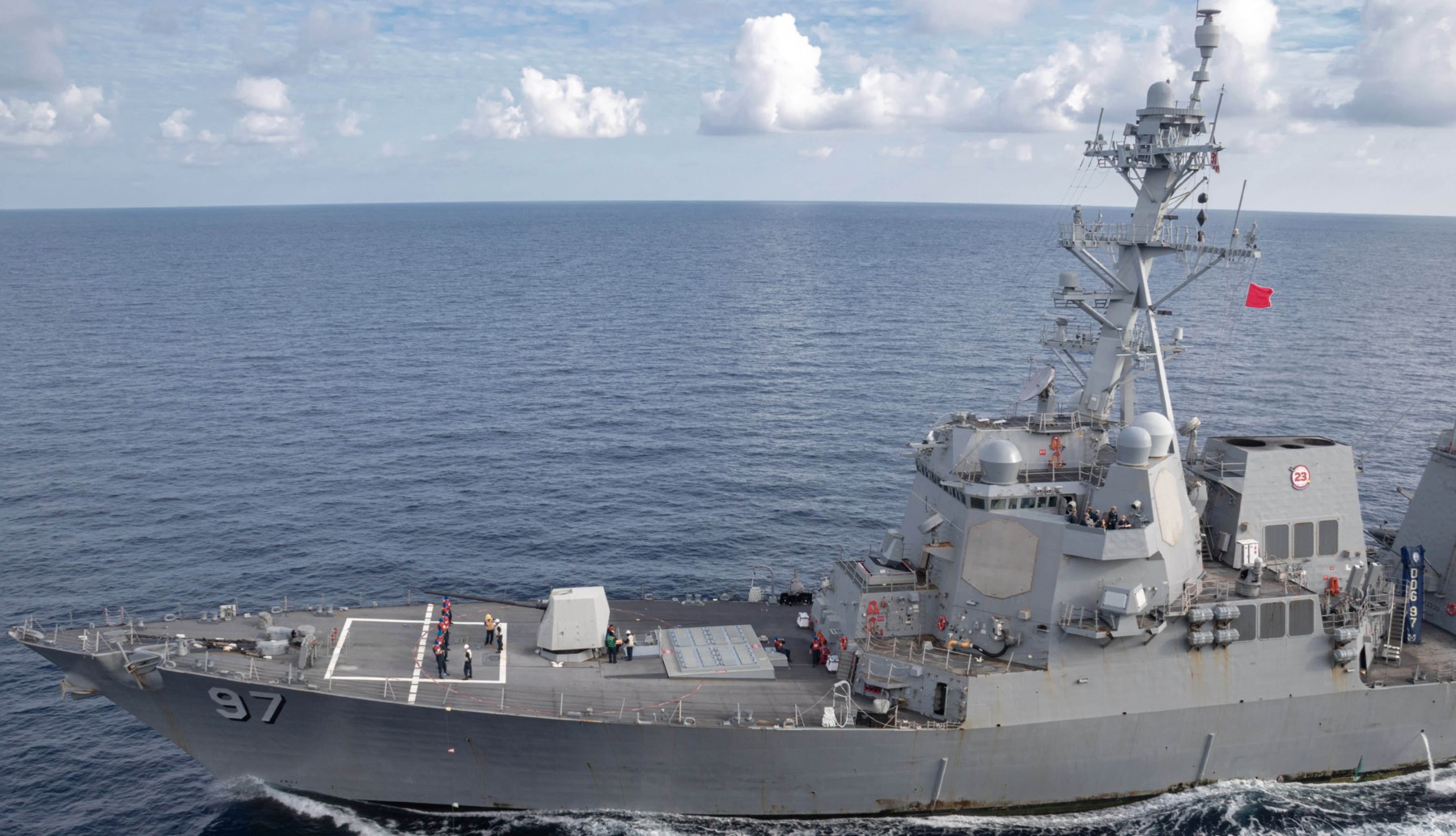 South China Sea - July 2024 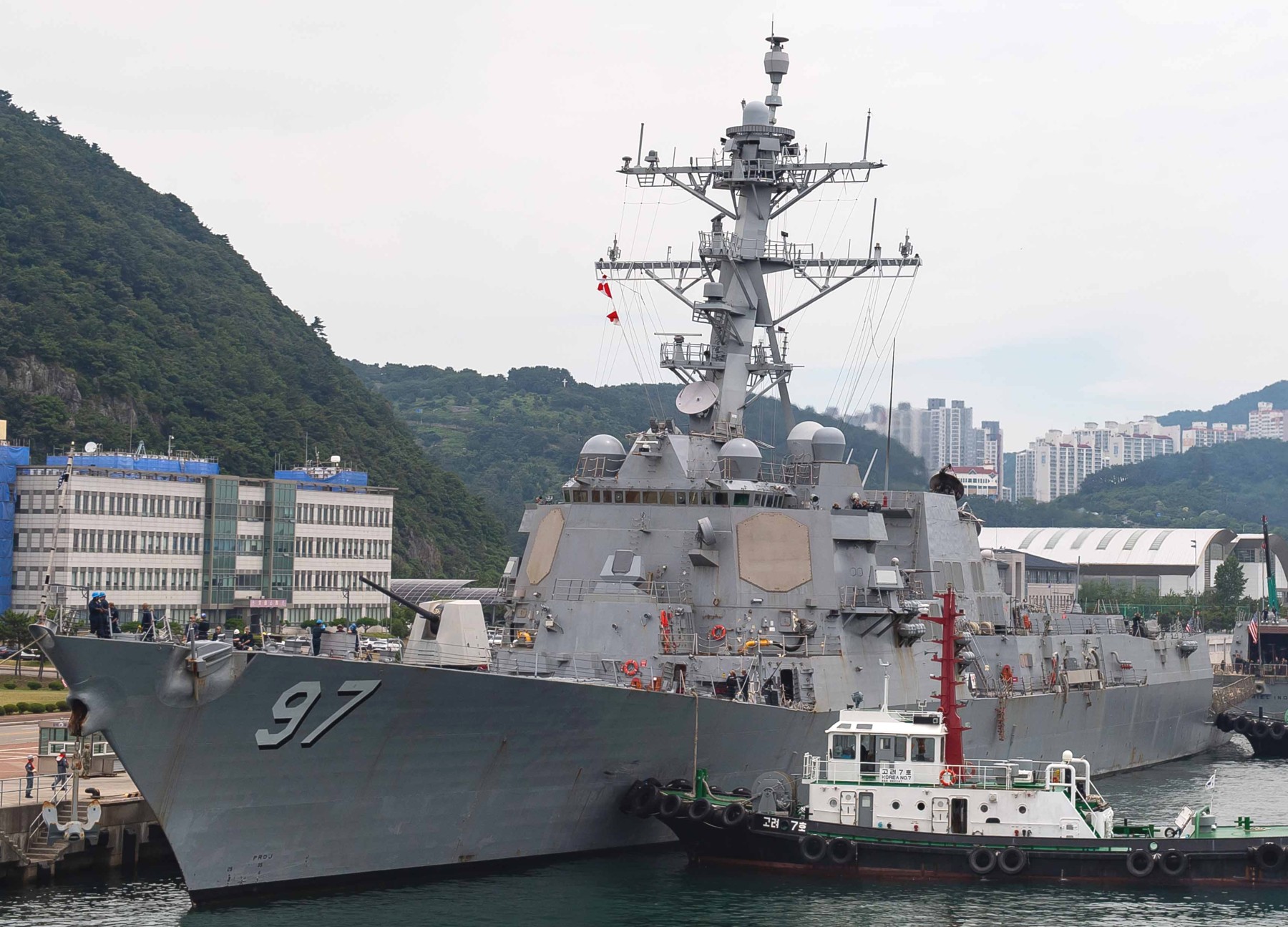 Busan, Republic of Korea - June 2024 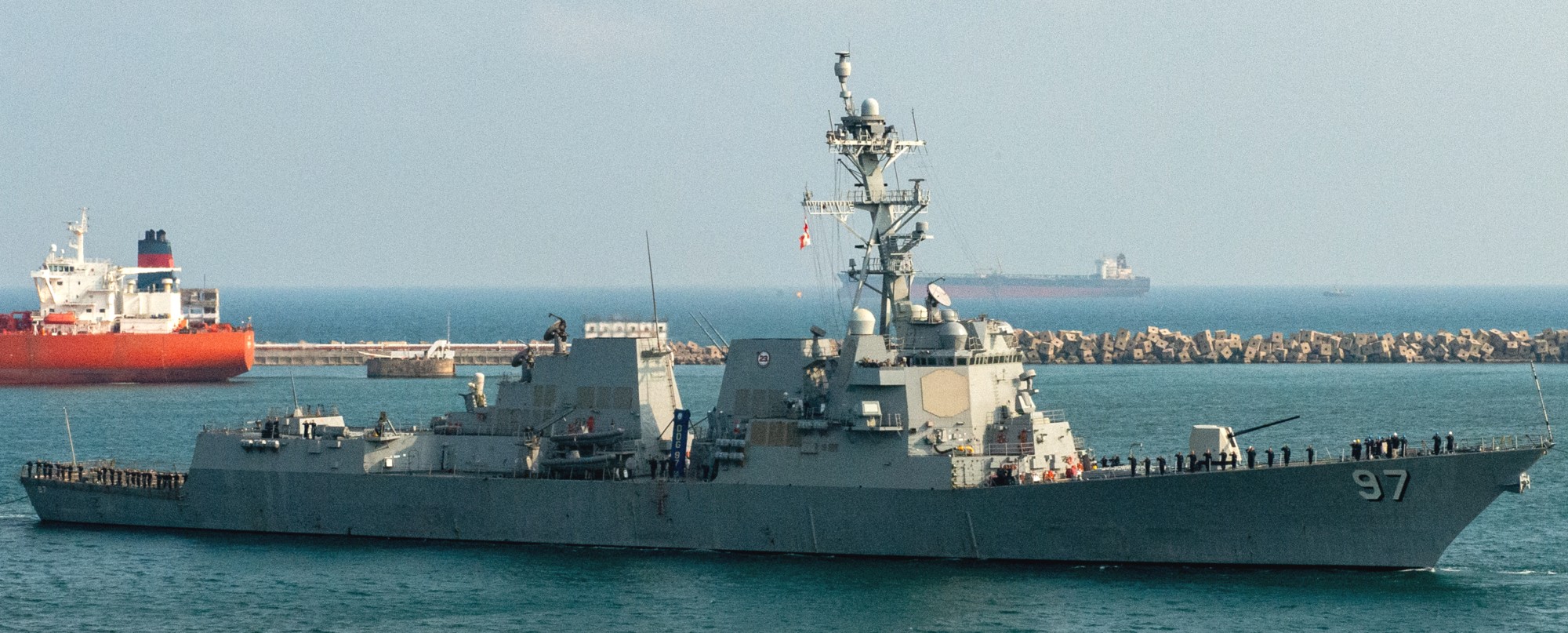 Visakhapatnam, India - March 2024  as part of Carrier Strike Group Nine (CSG-9) - Pacific Ocean - November 2023 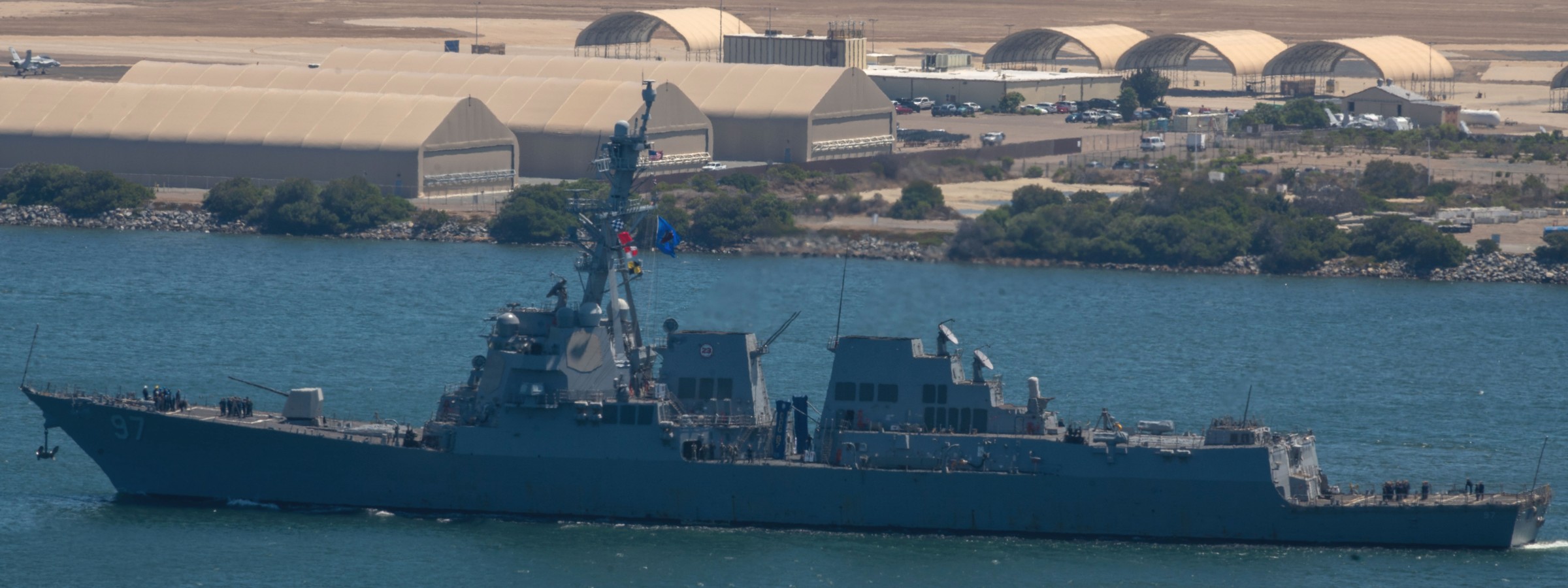 returning to Naval Base San Diego from sortie condition alpha - August 22, 2023 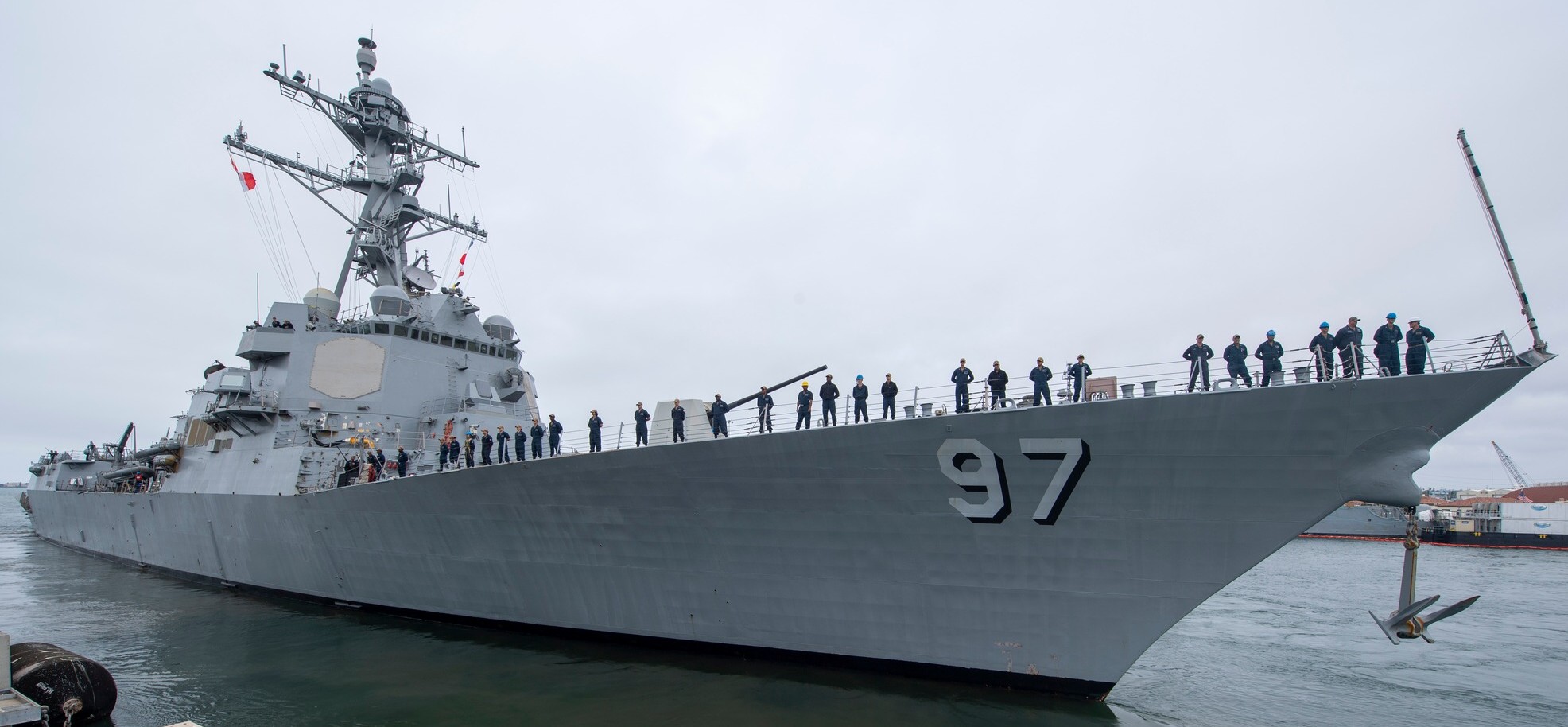 departing Naval Base San Diego in response to Tropical Storm Hilary - August 19, 2023 February 2022 - October 2022: Selected Restricted Availability (SRA) at Continental Maritime of San Diego 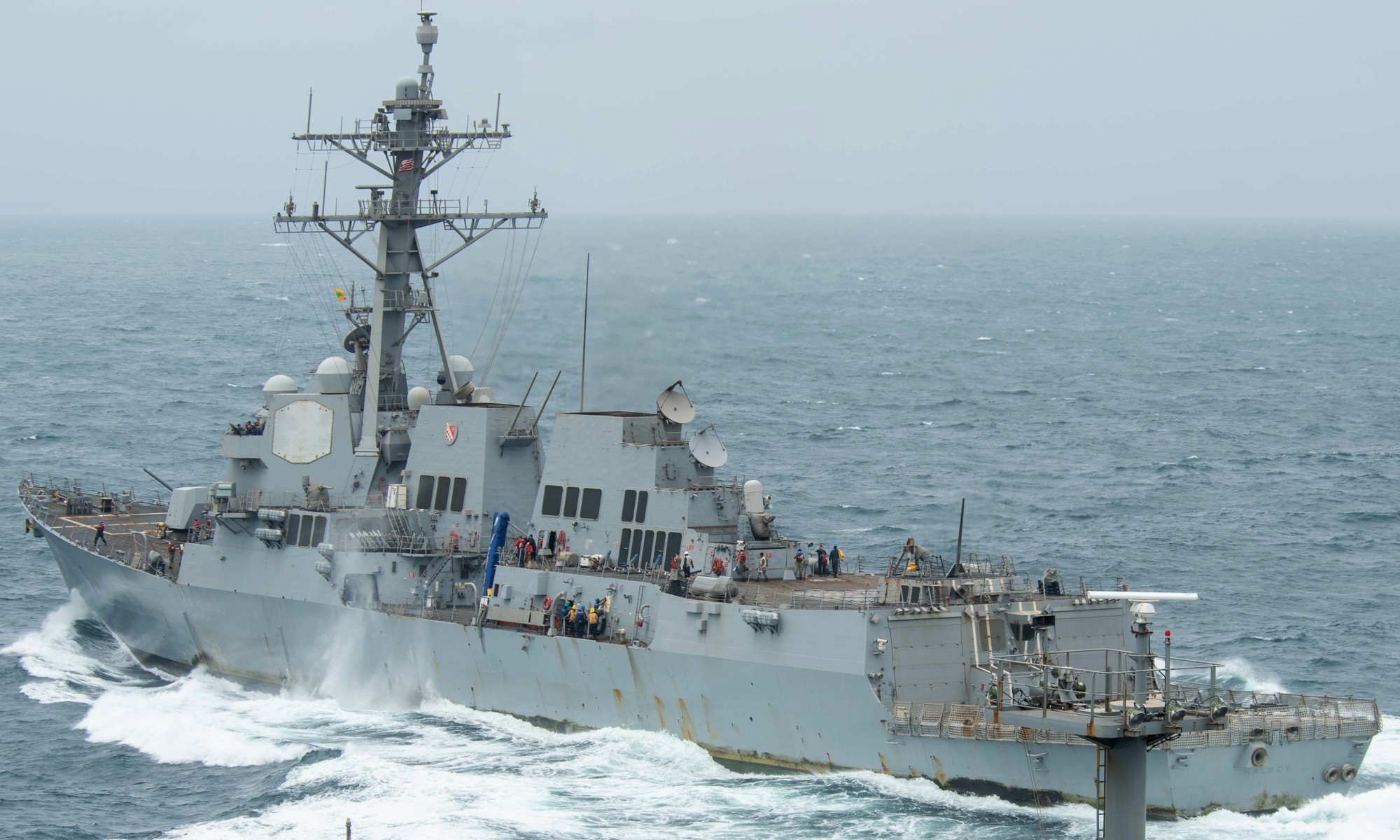 Arabian Sea - September 2021  Gulf of Aden - July 2021 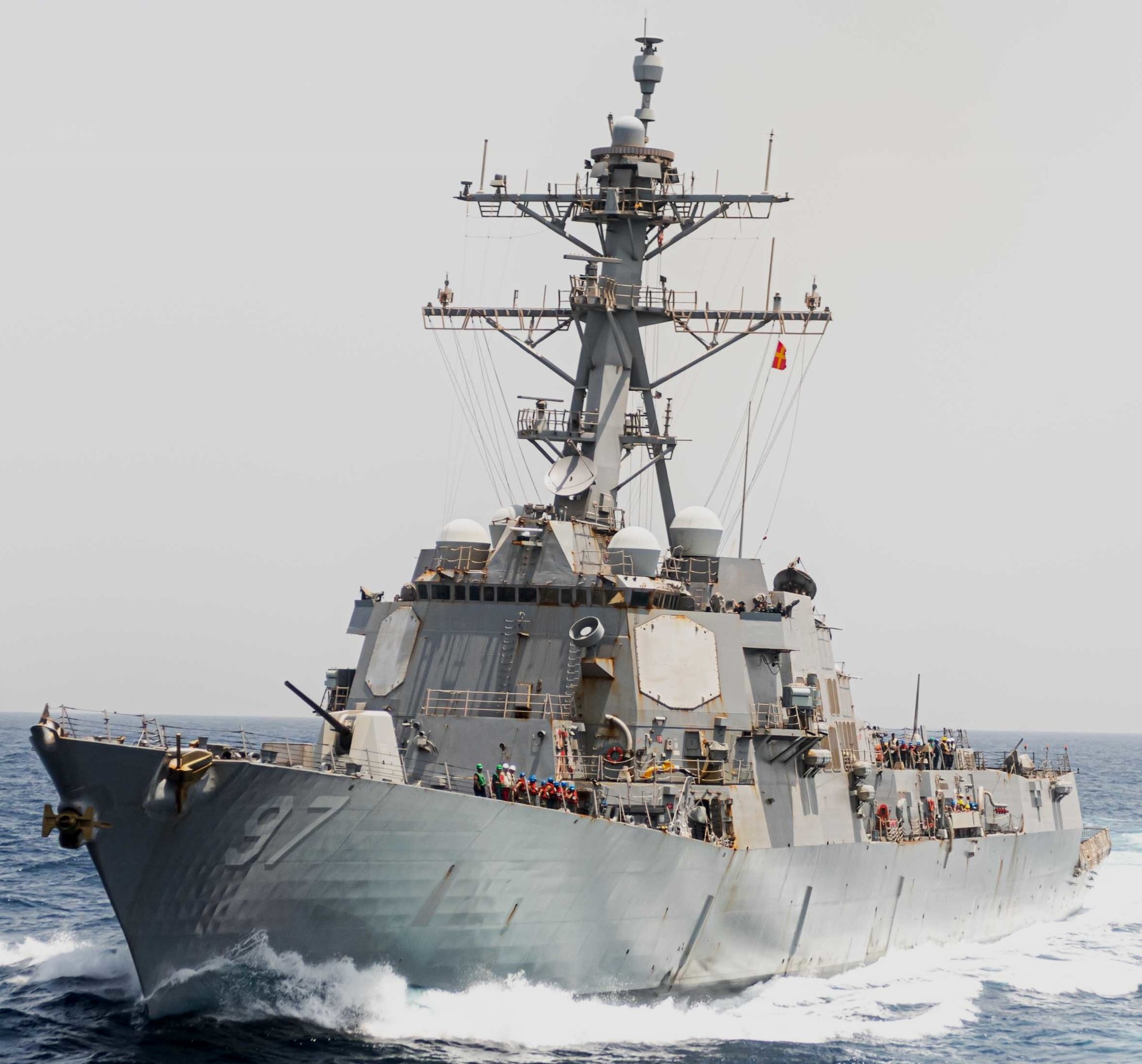 Gulf of Aden - July 2021 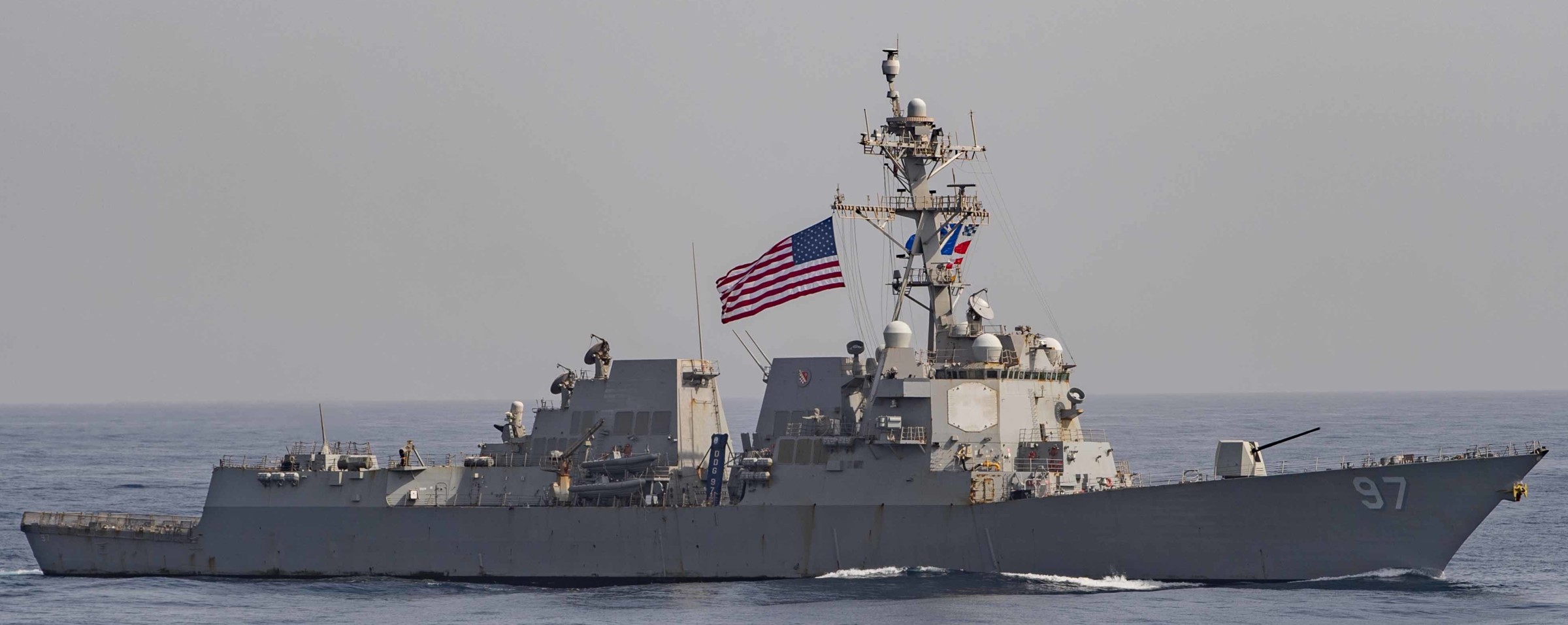 Gulf of Aden - July 2021 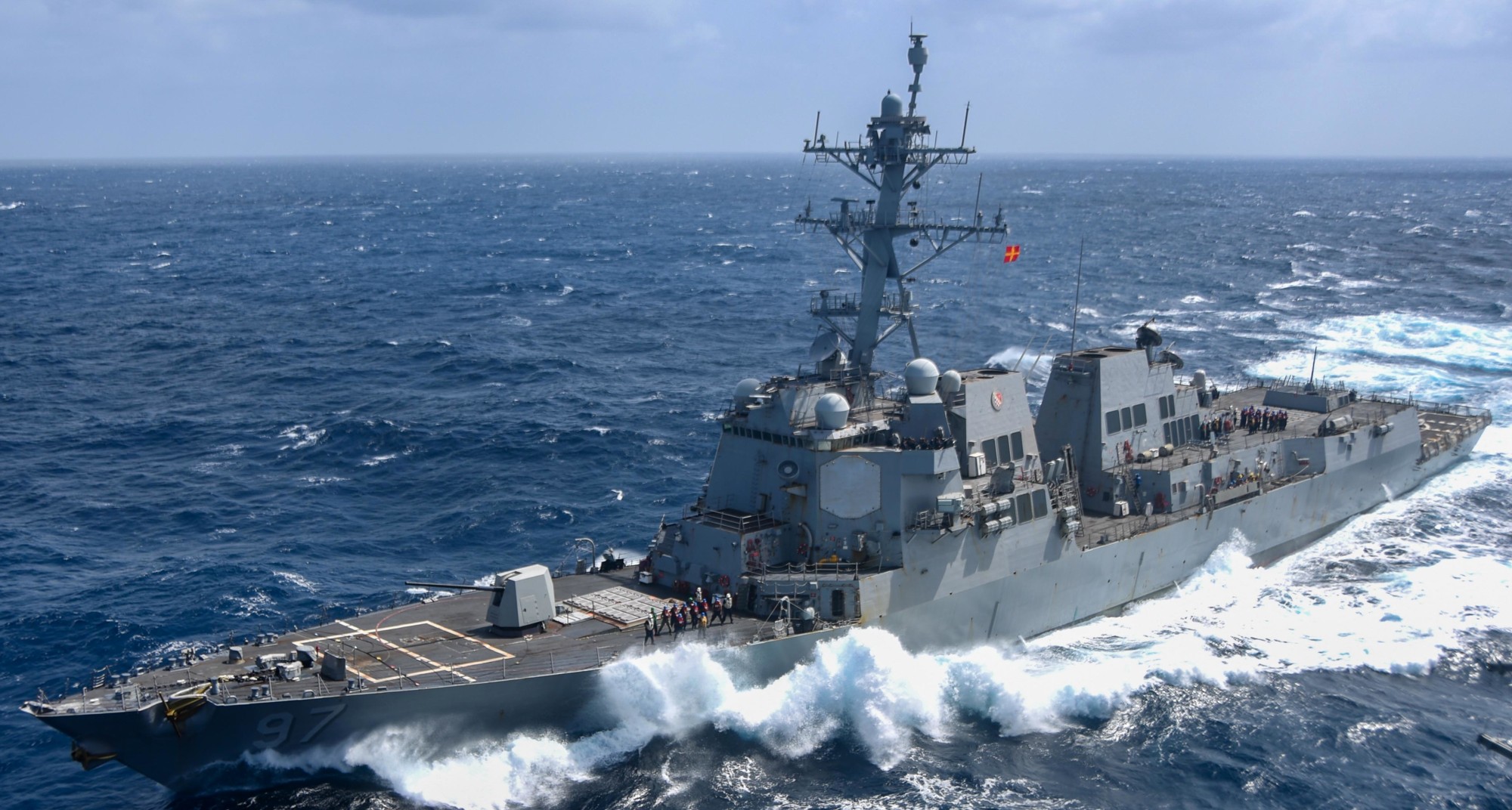 Arabian Sea - June 2021 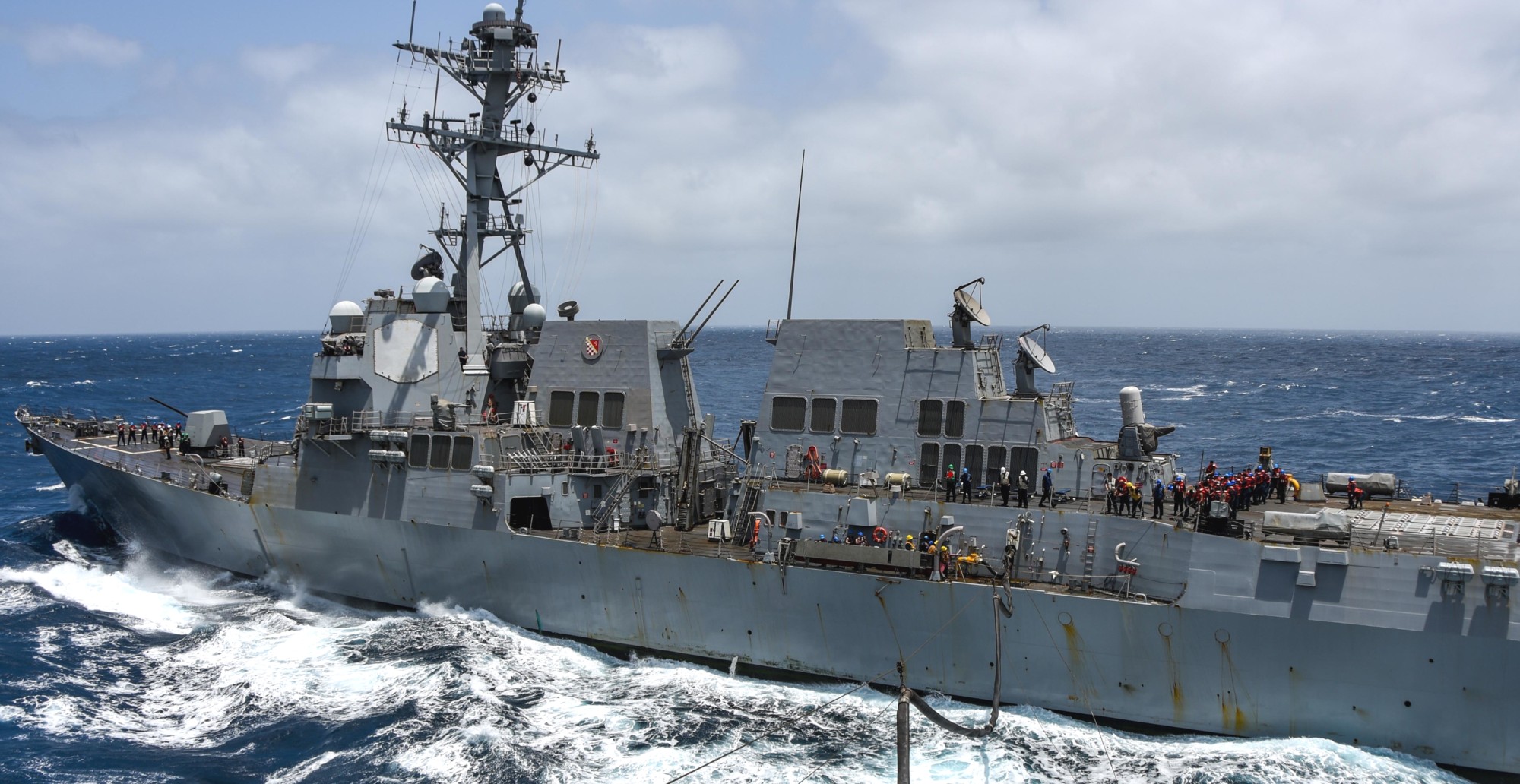 Arabian Sea - June 2021 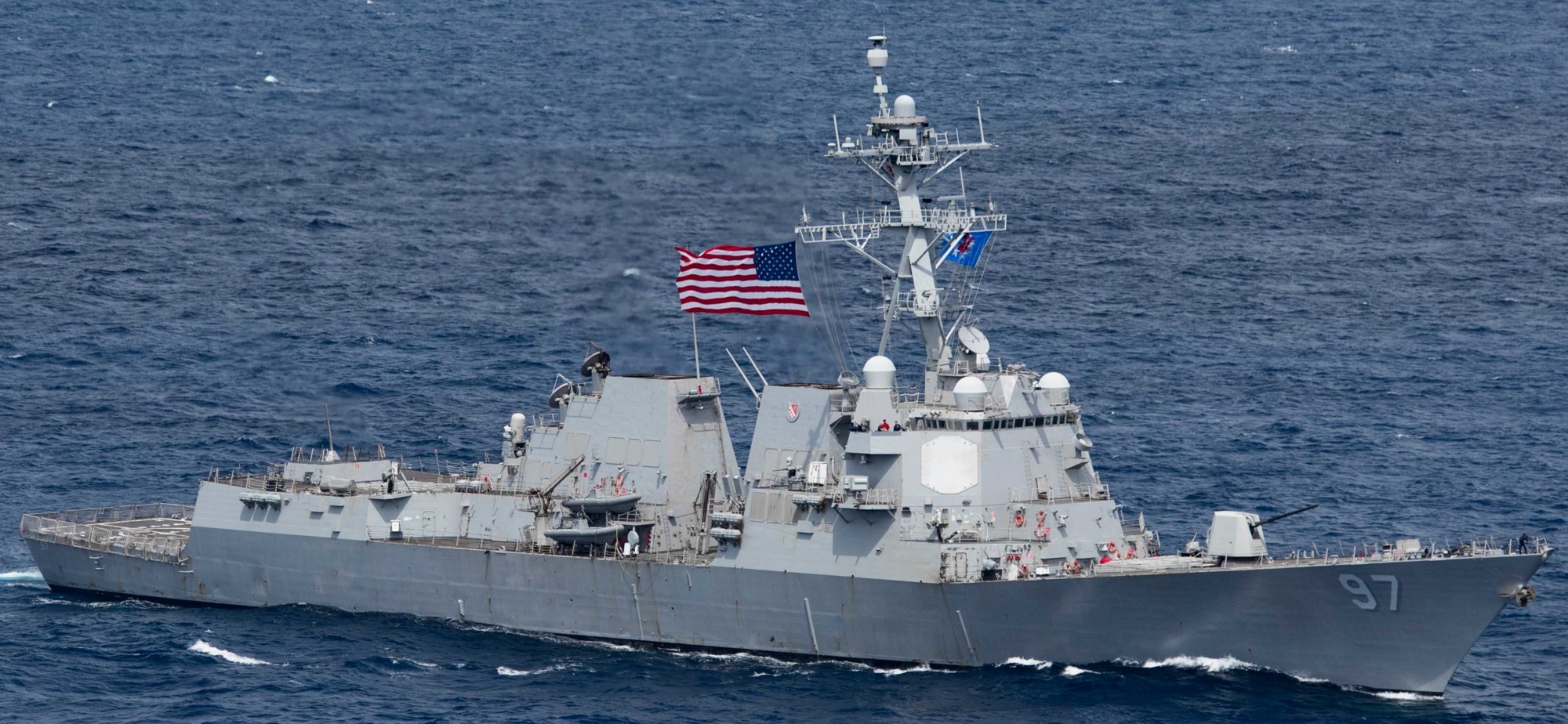 Indian Ocean - June 2021 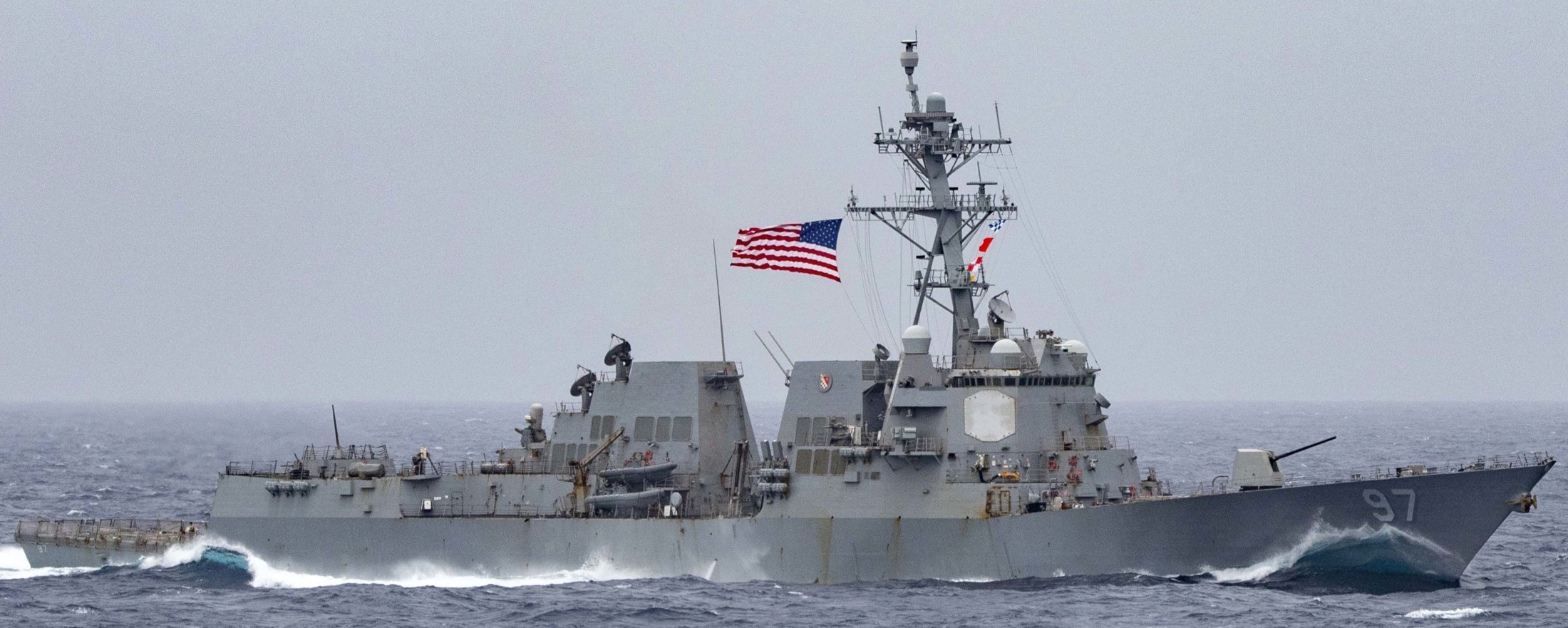 Indian Ocean - June 2021 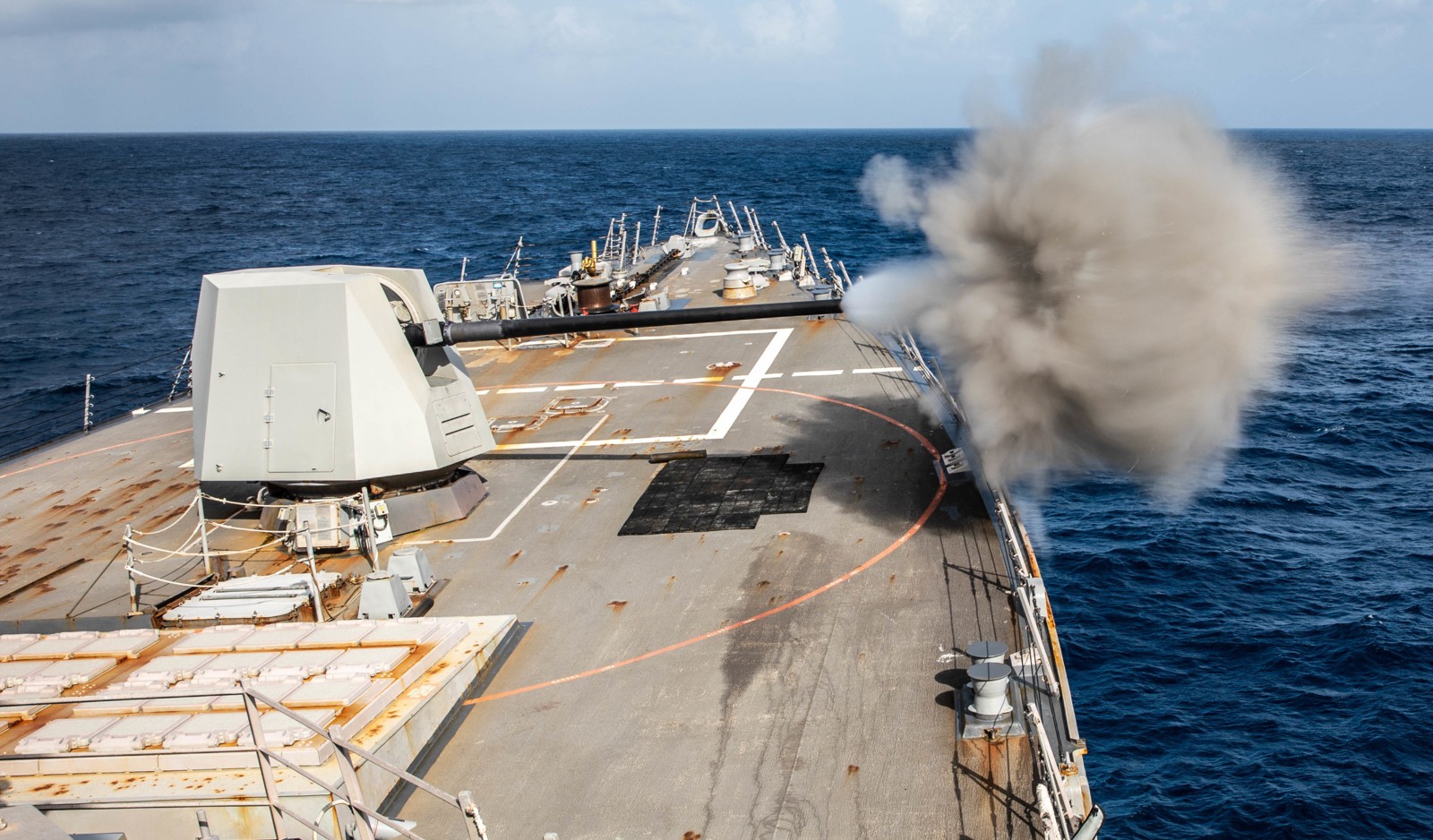 Mk.45 Mod.4 gun fire - Indian Ocean - June 2021 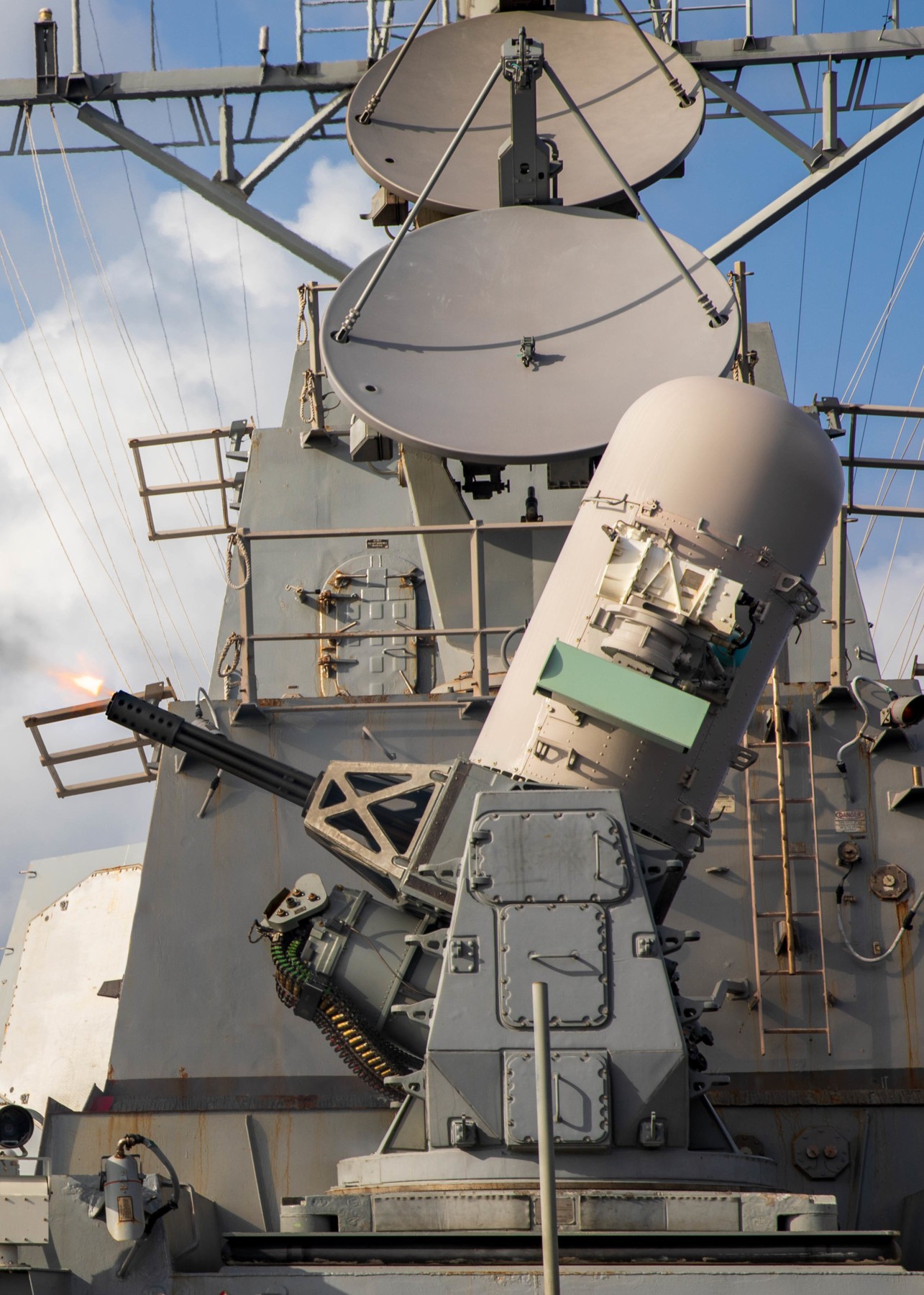 Mk.15 Phalanx CIWS fire exercise - Indian Ocean - June 2021 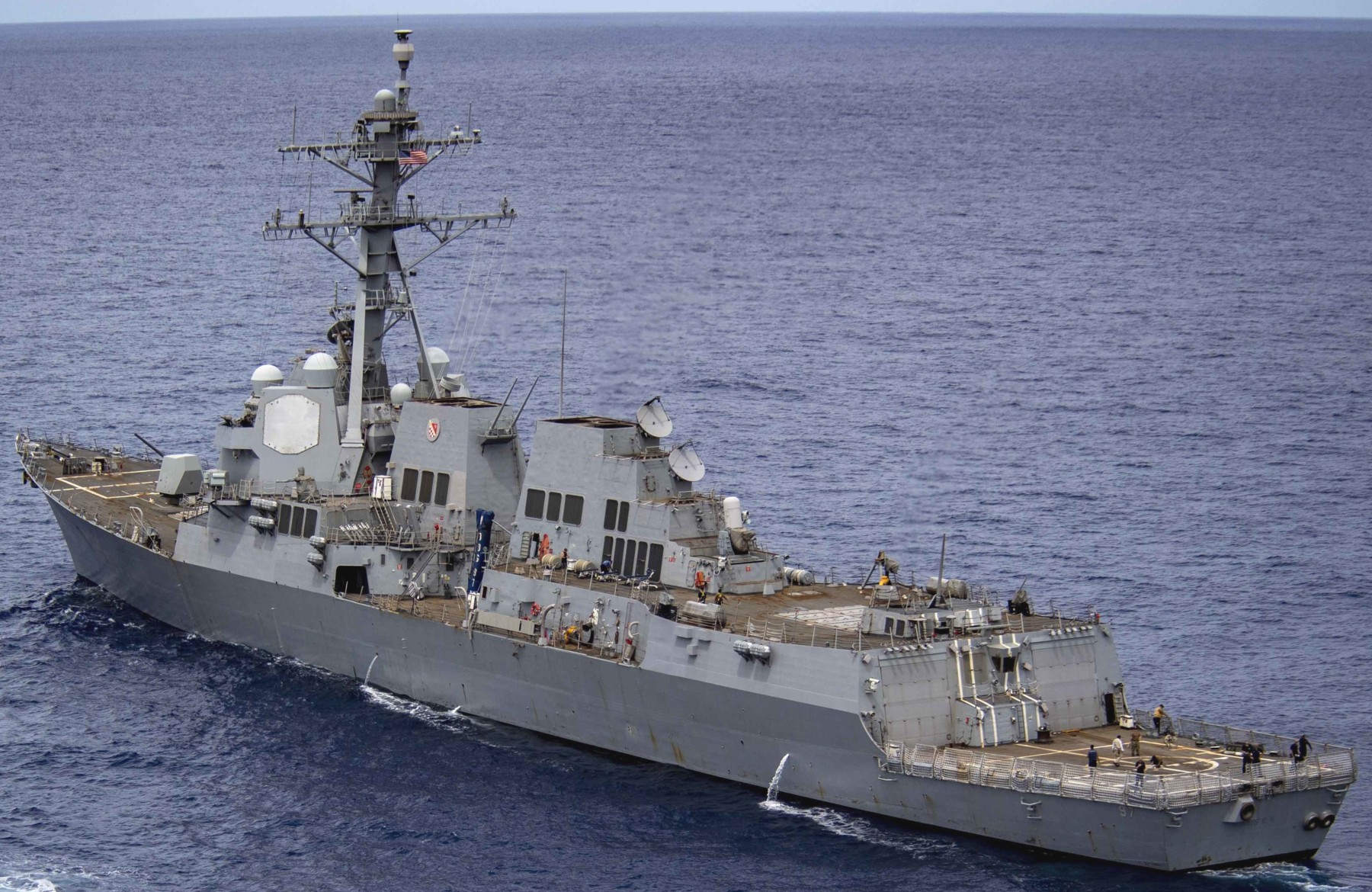 Philippine Sea - June 2021 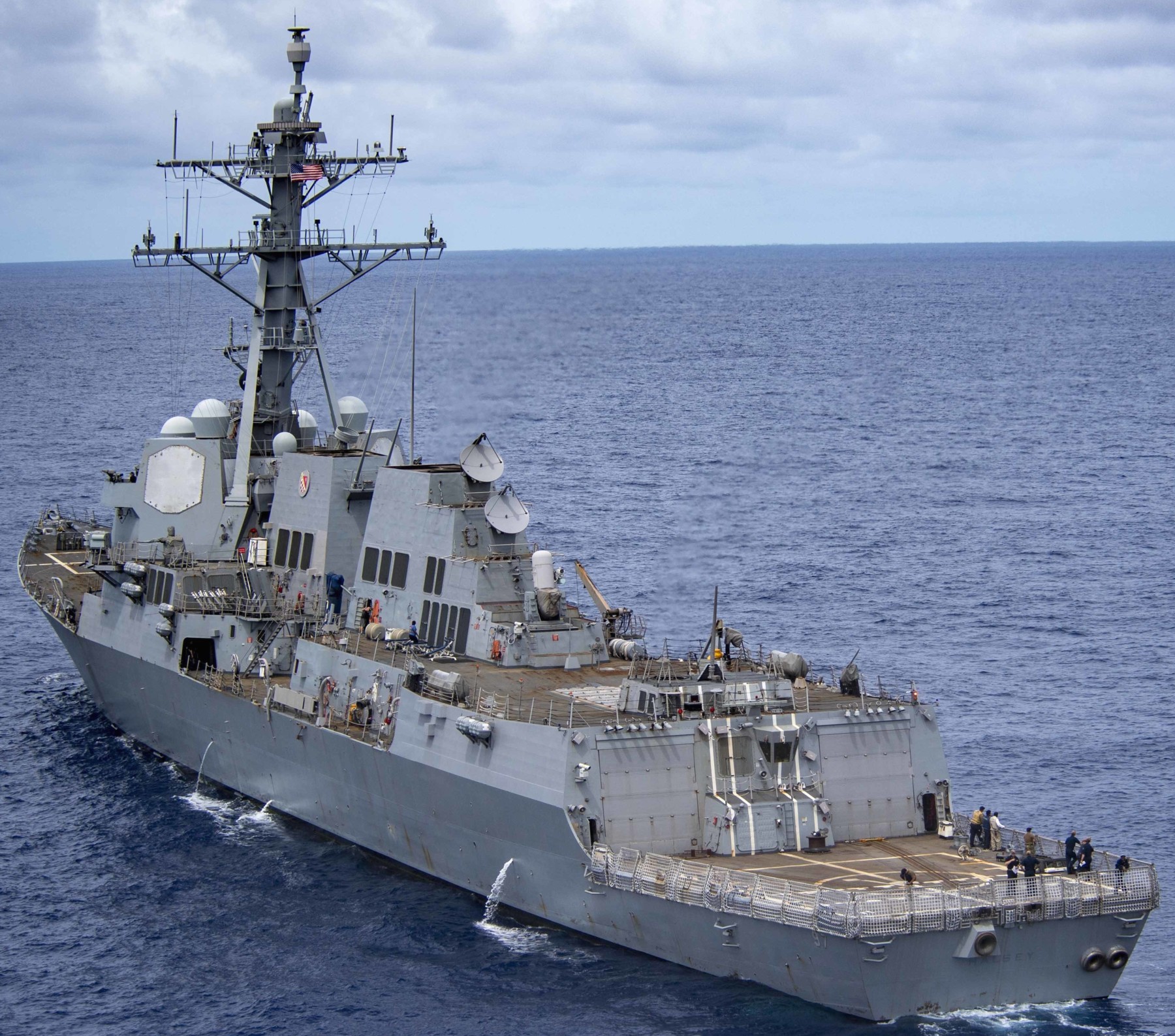 Philippine Sea - June 2021 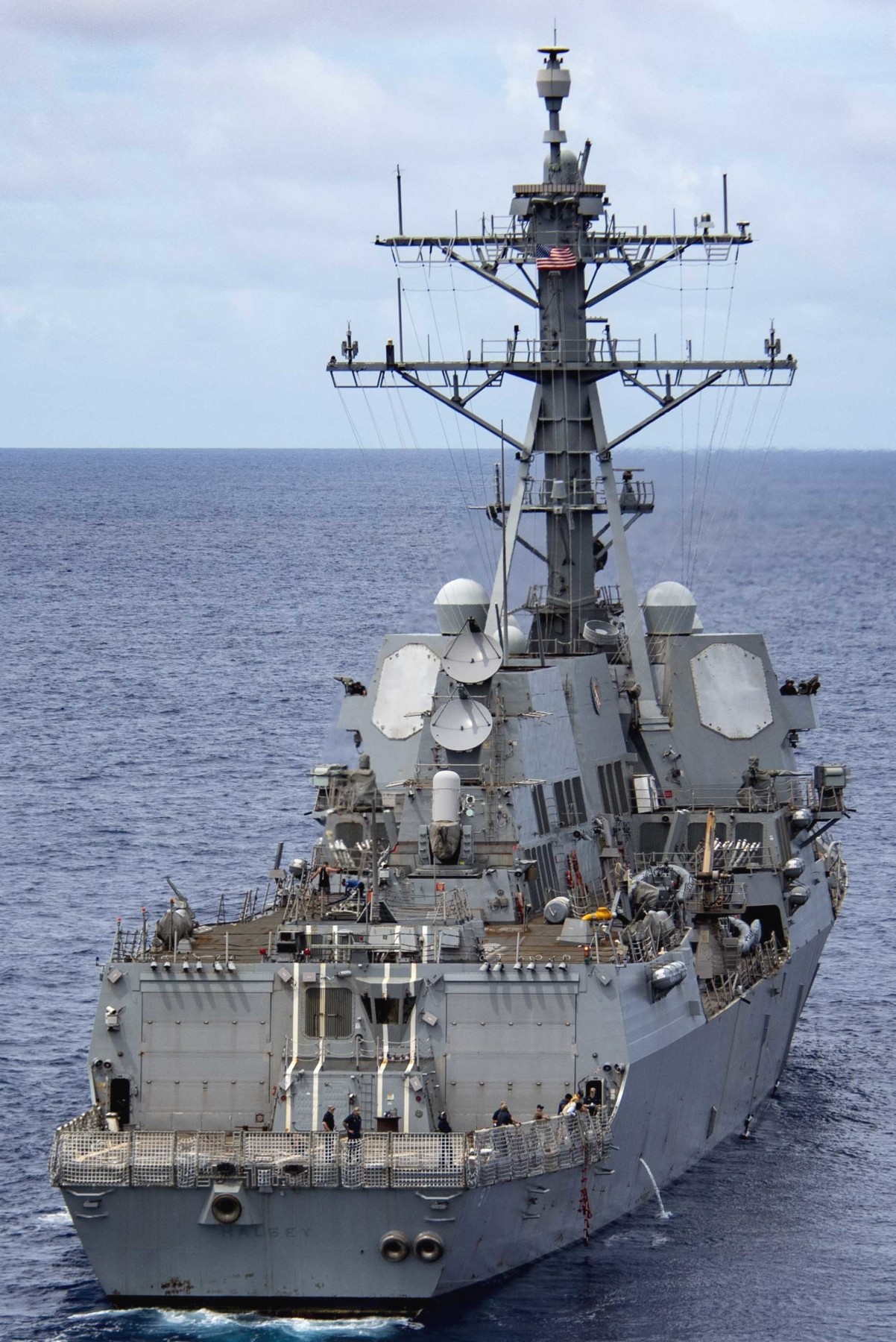 Philippine Sea - June 2021 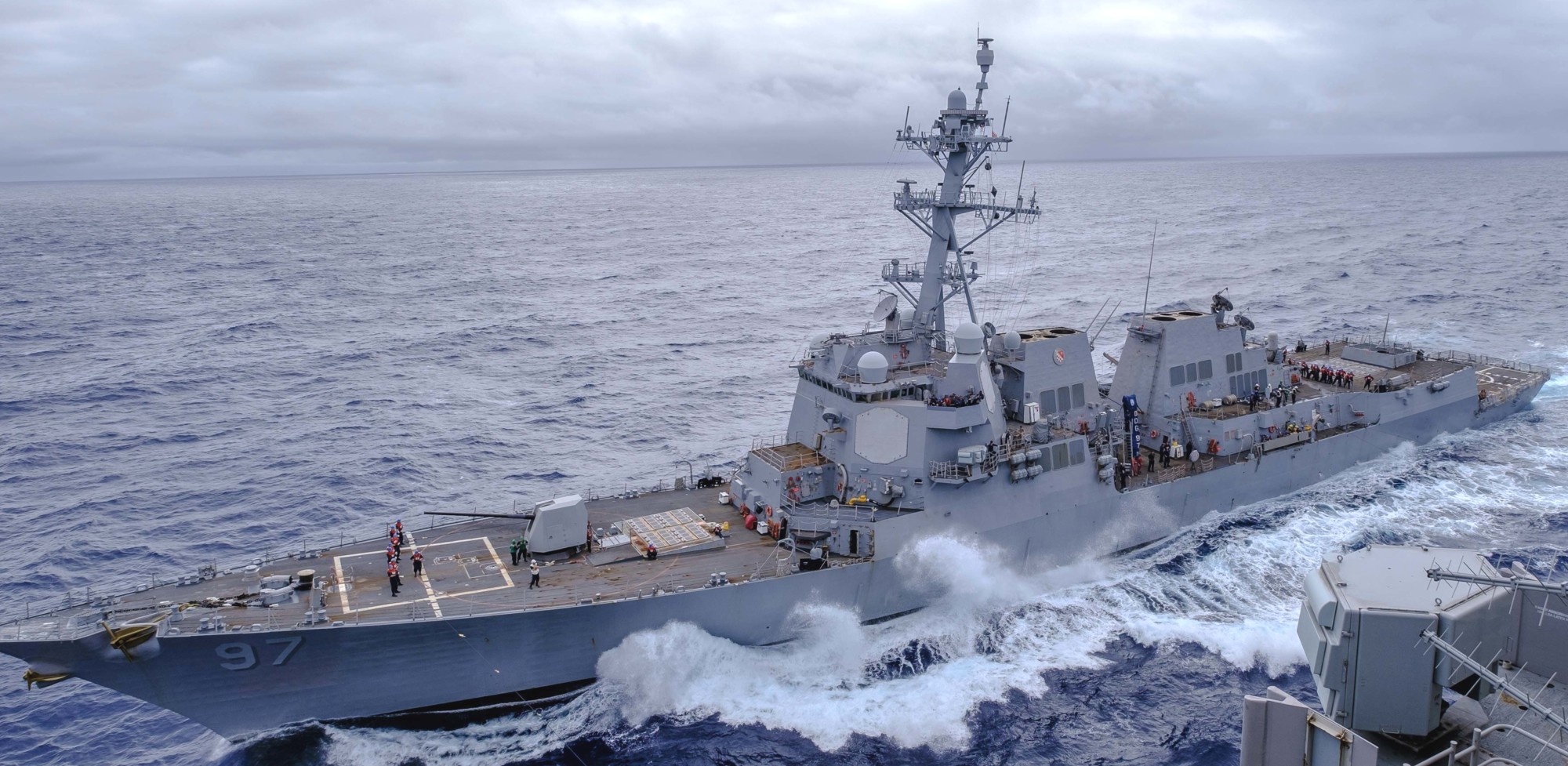 Philippine Sea - June 2021 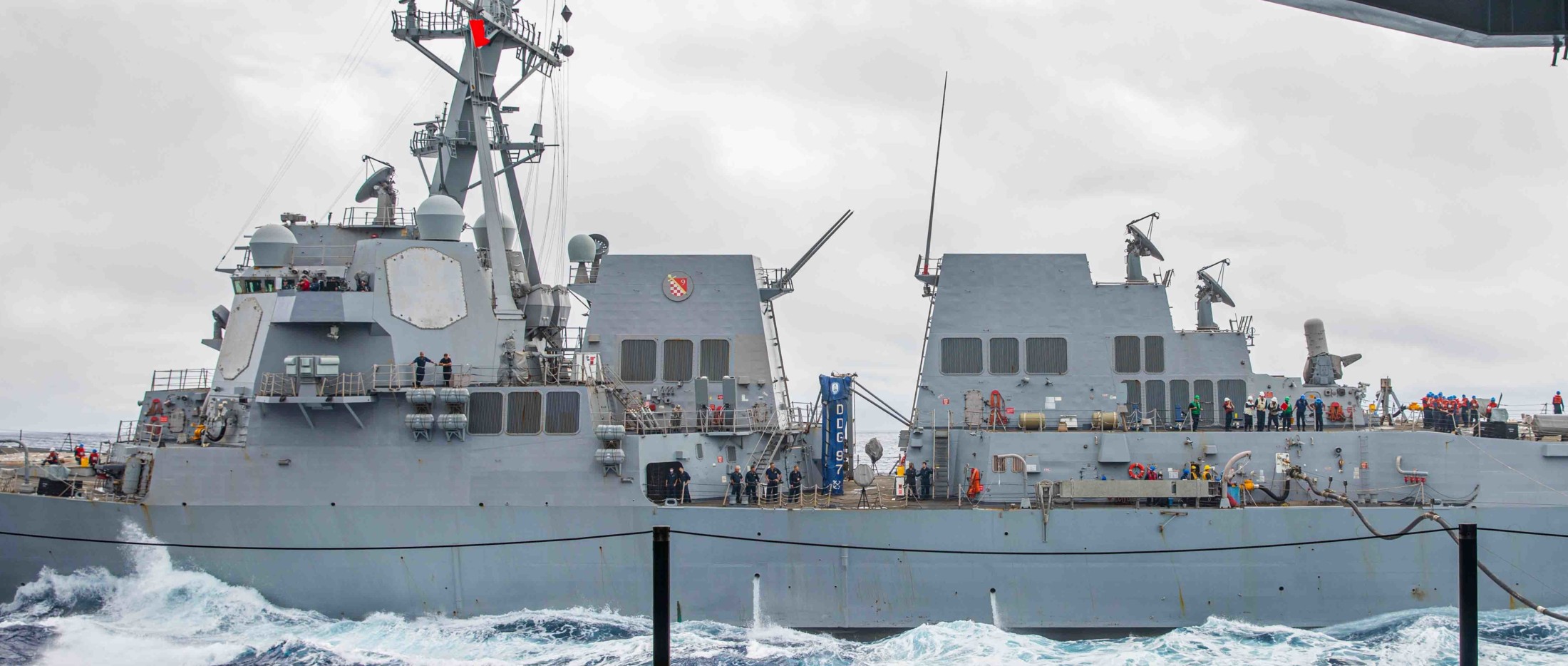 Philippine Sea - June 2021 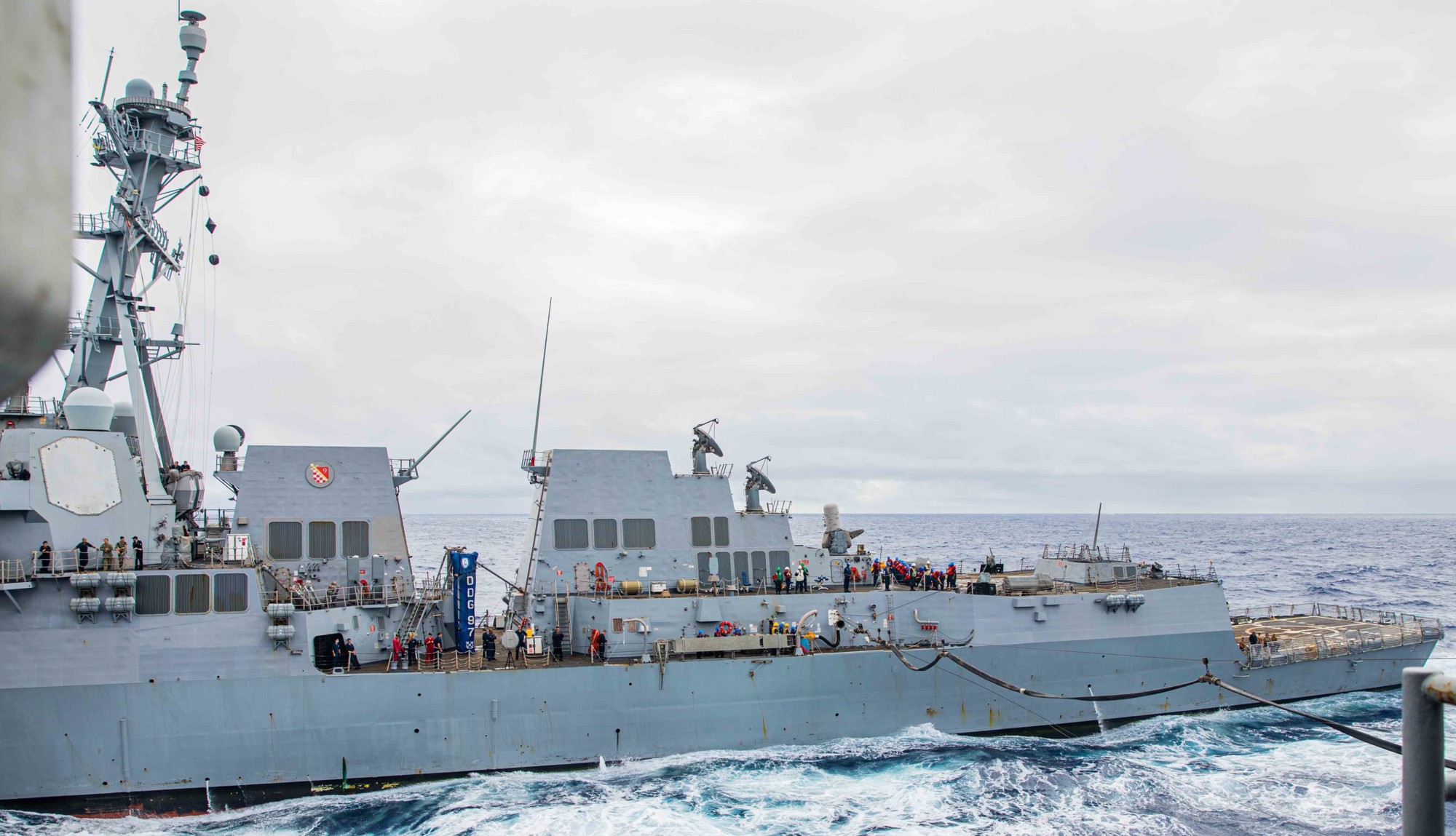 Philippine Sea - June 2021 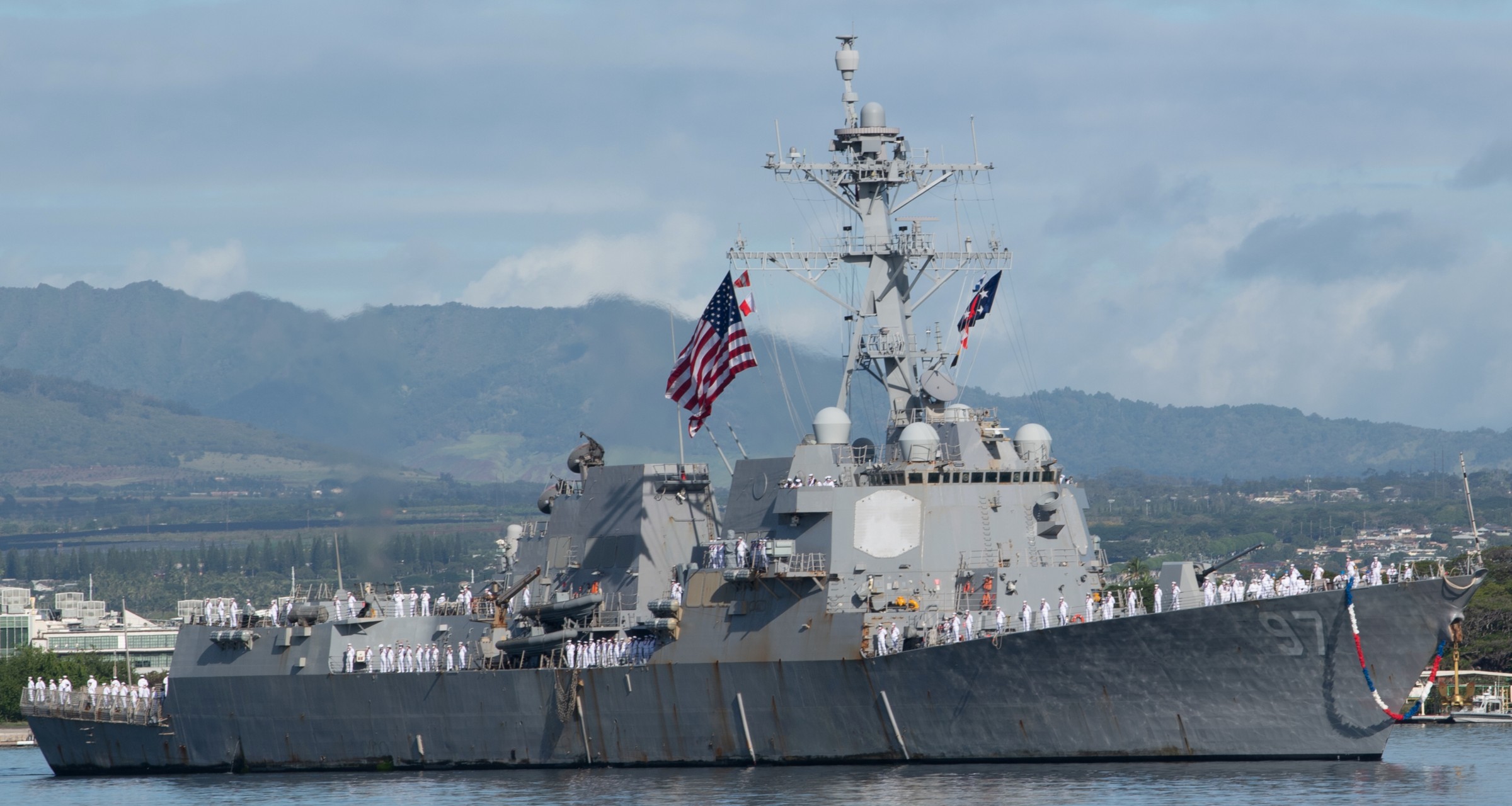 returning to Joint Base Pearl Harbor-Hickam, Hawaii - October 29, 2020  Philippine Sea - October 2020 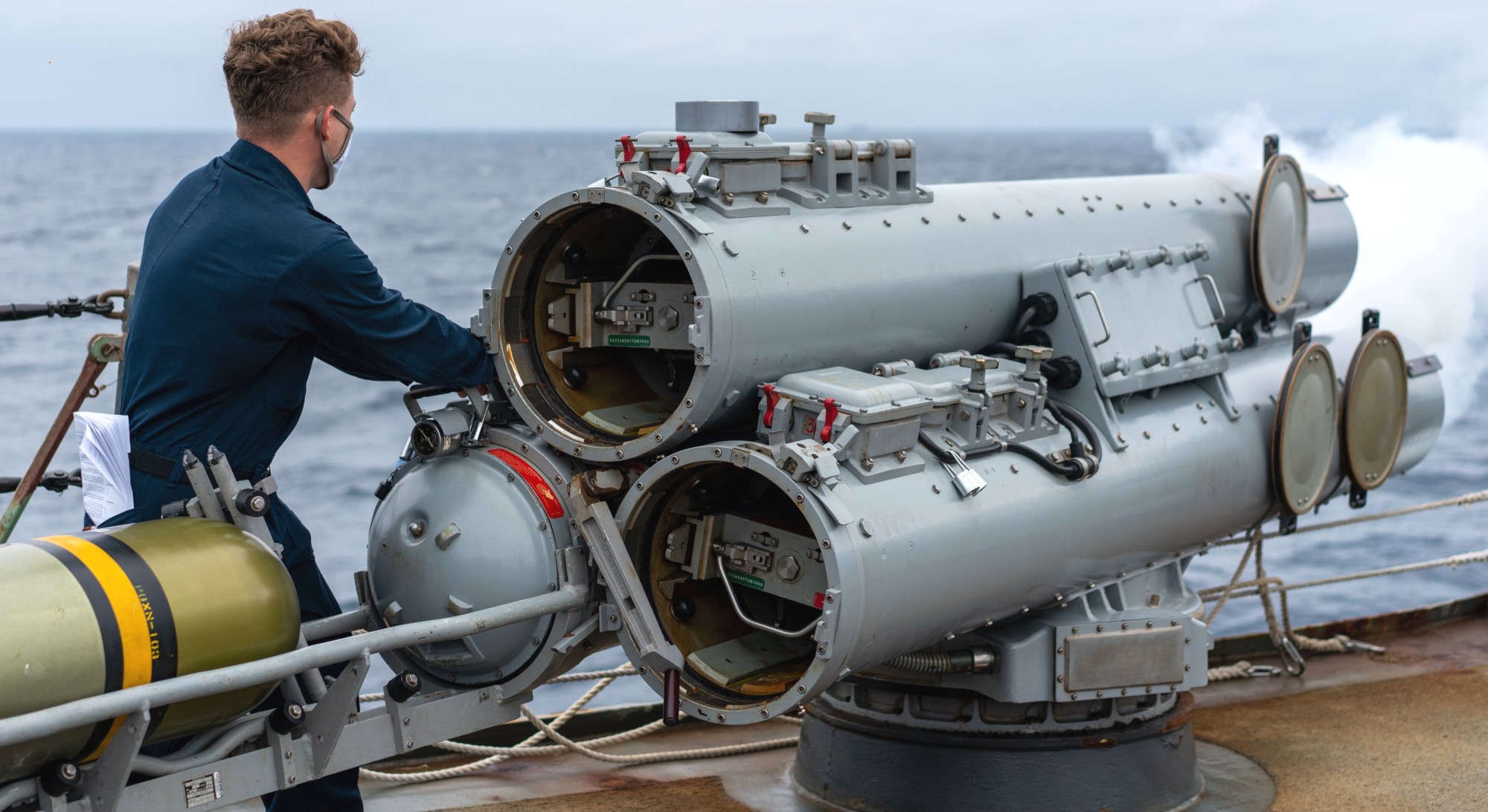 Mk.32 torpedo tubes exercise - East China Sea - September 2020 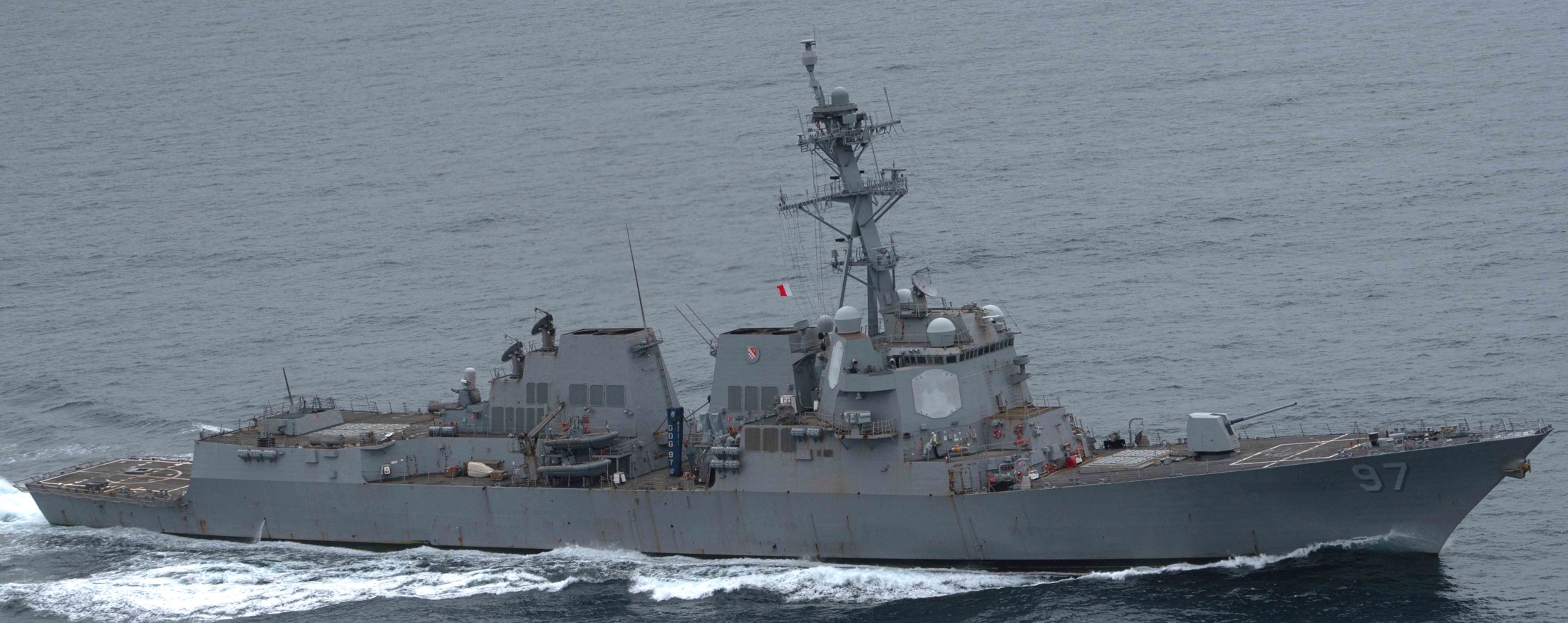 Pacific Ocean - July 2020 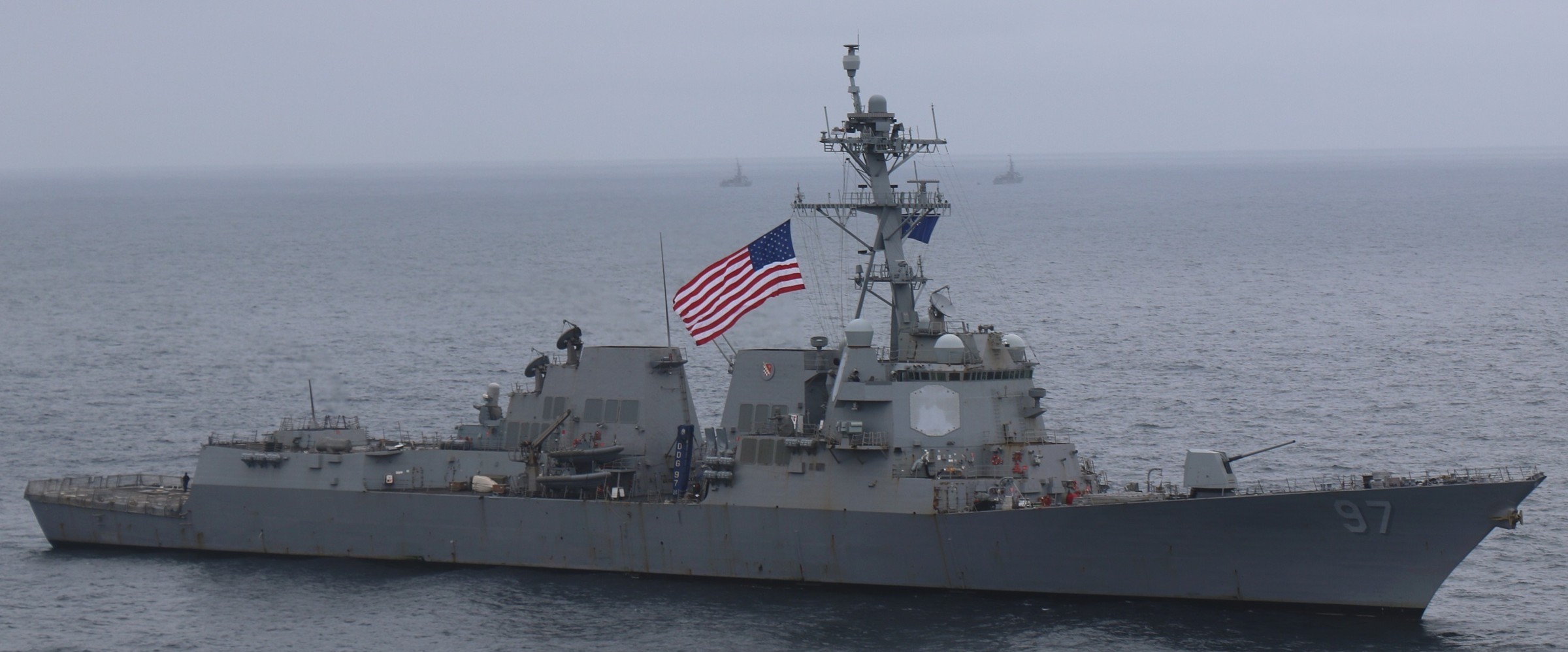 Pacific Ocean - July 2020  Pacific Ocean - June 2020 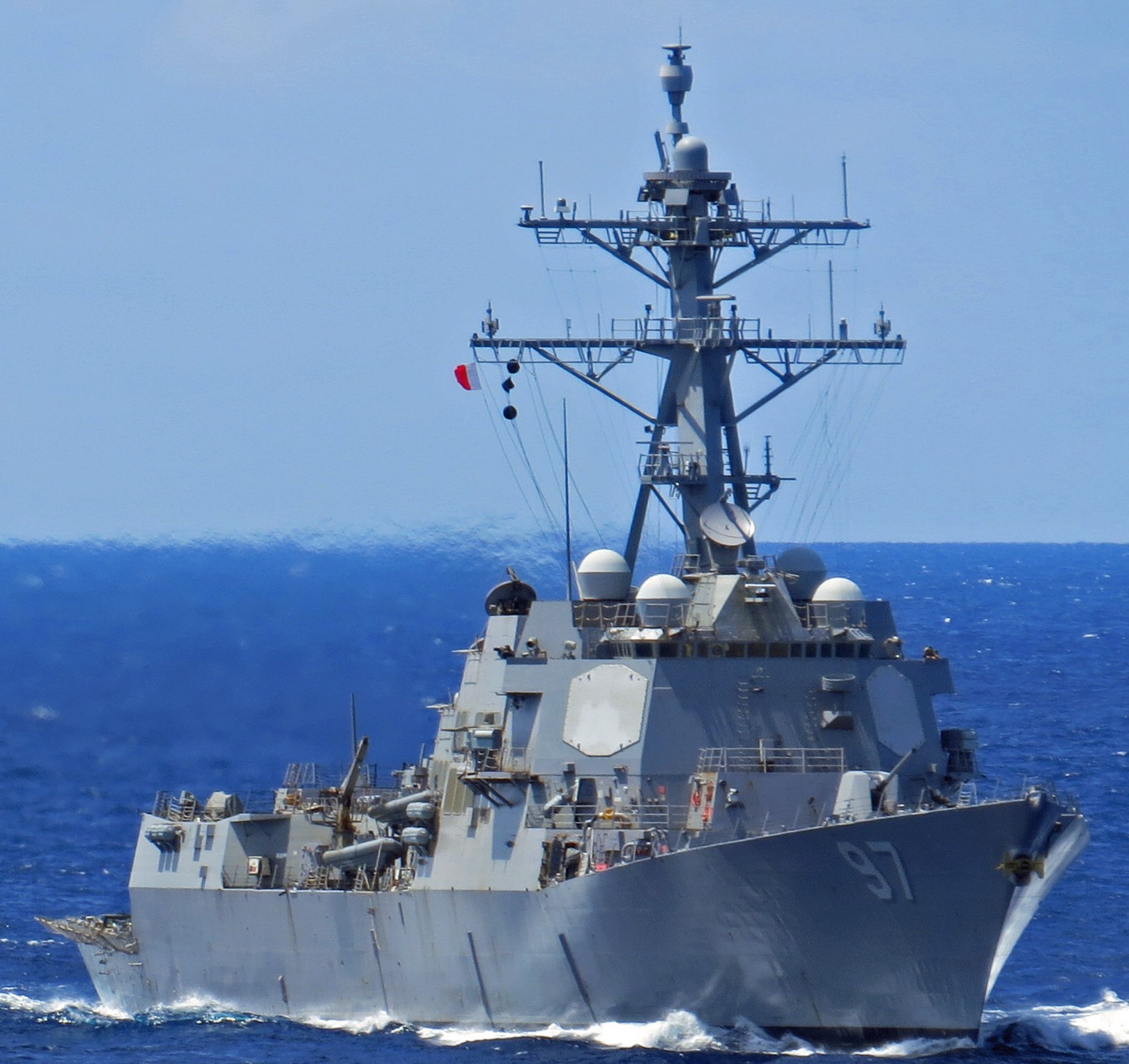 Pacific Ocean - June 2020 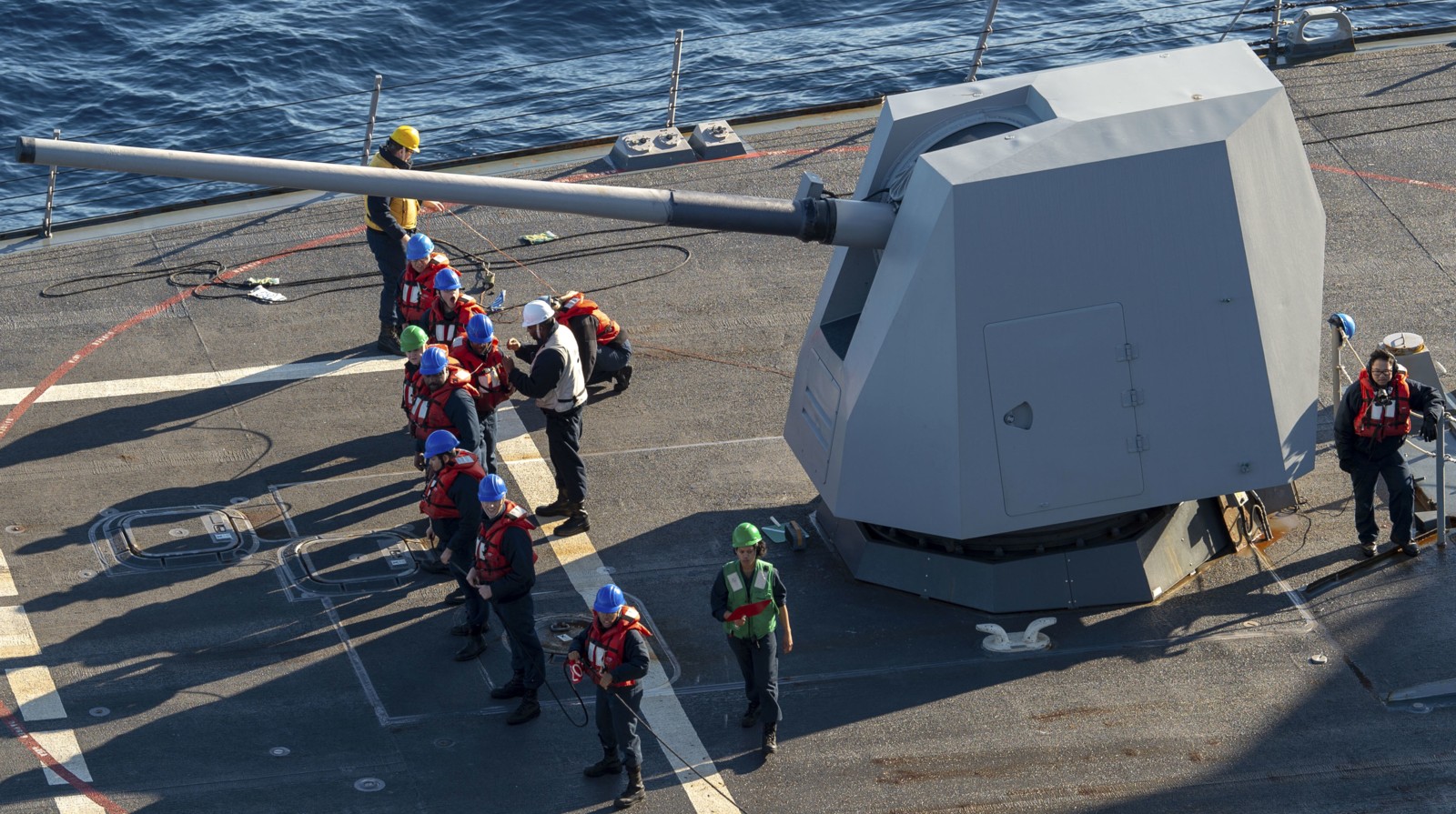 preparing for underway replenishment (UNREP) - Pacific Ocean - January 2020 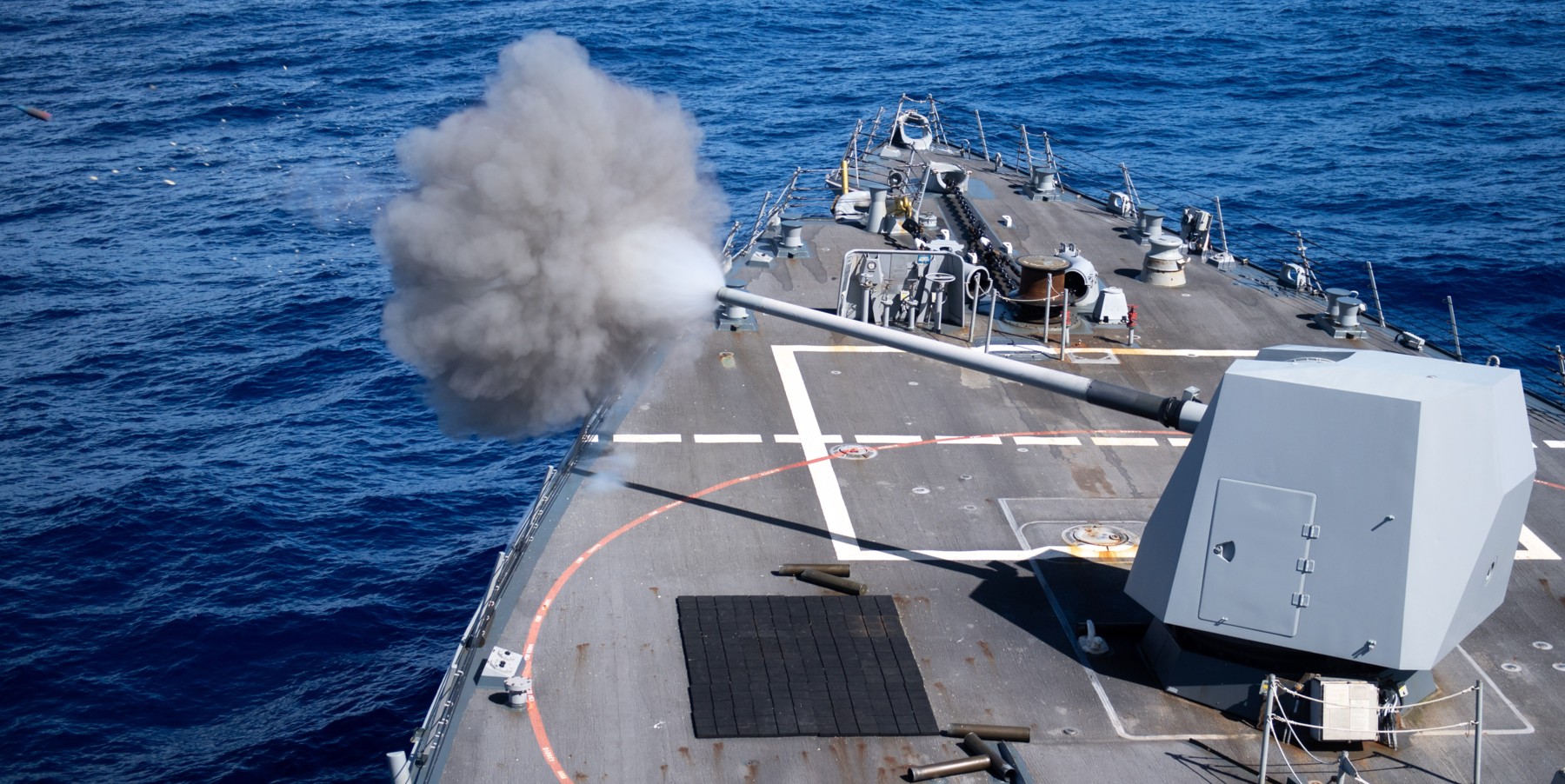 Mk.45 Mod.4 gun fire - Pacific Ocean - December 2019 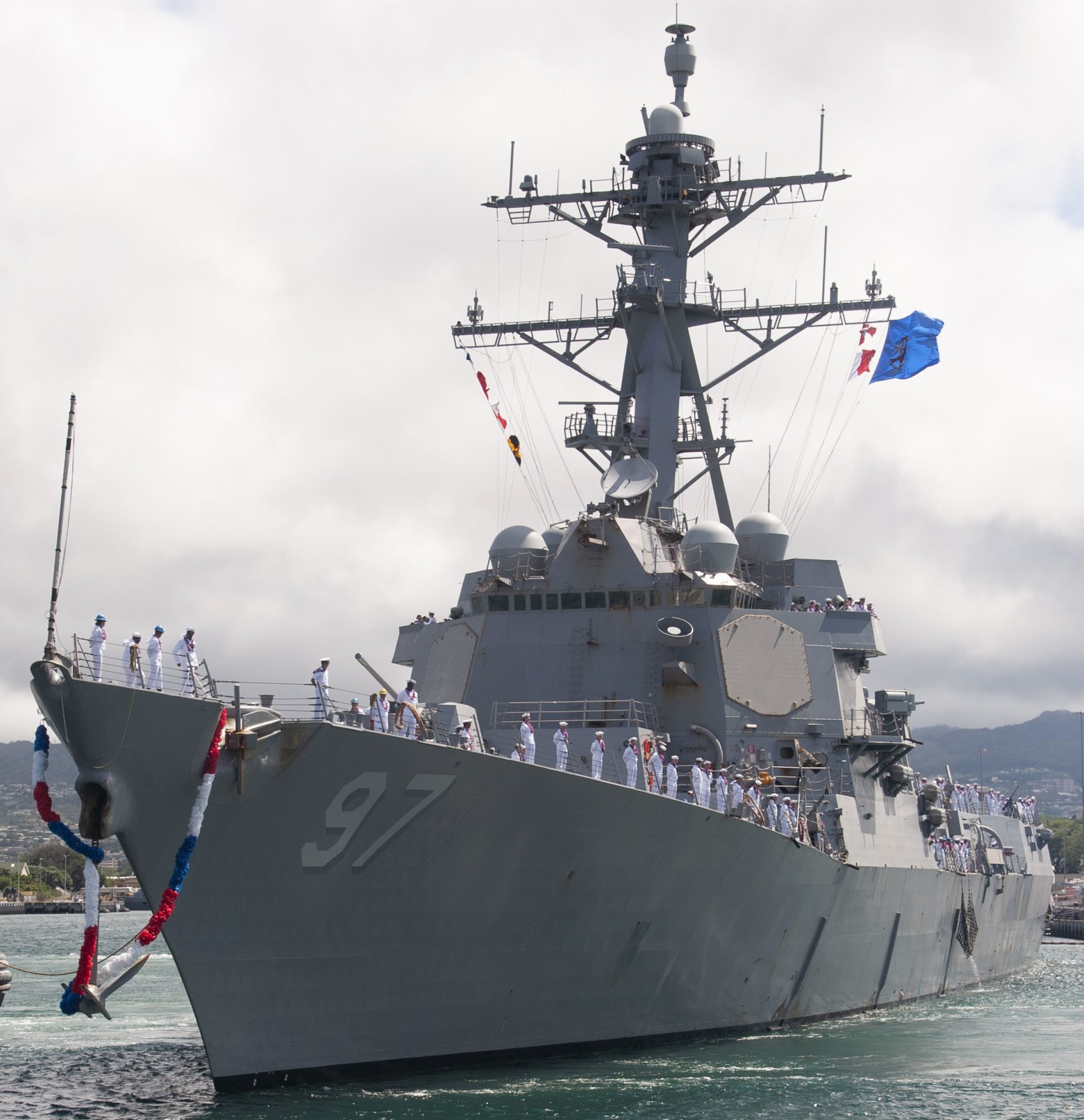 returning to Joint Base Pearl Harbor-Hickam, Hawaii - May 14, 2018 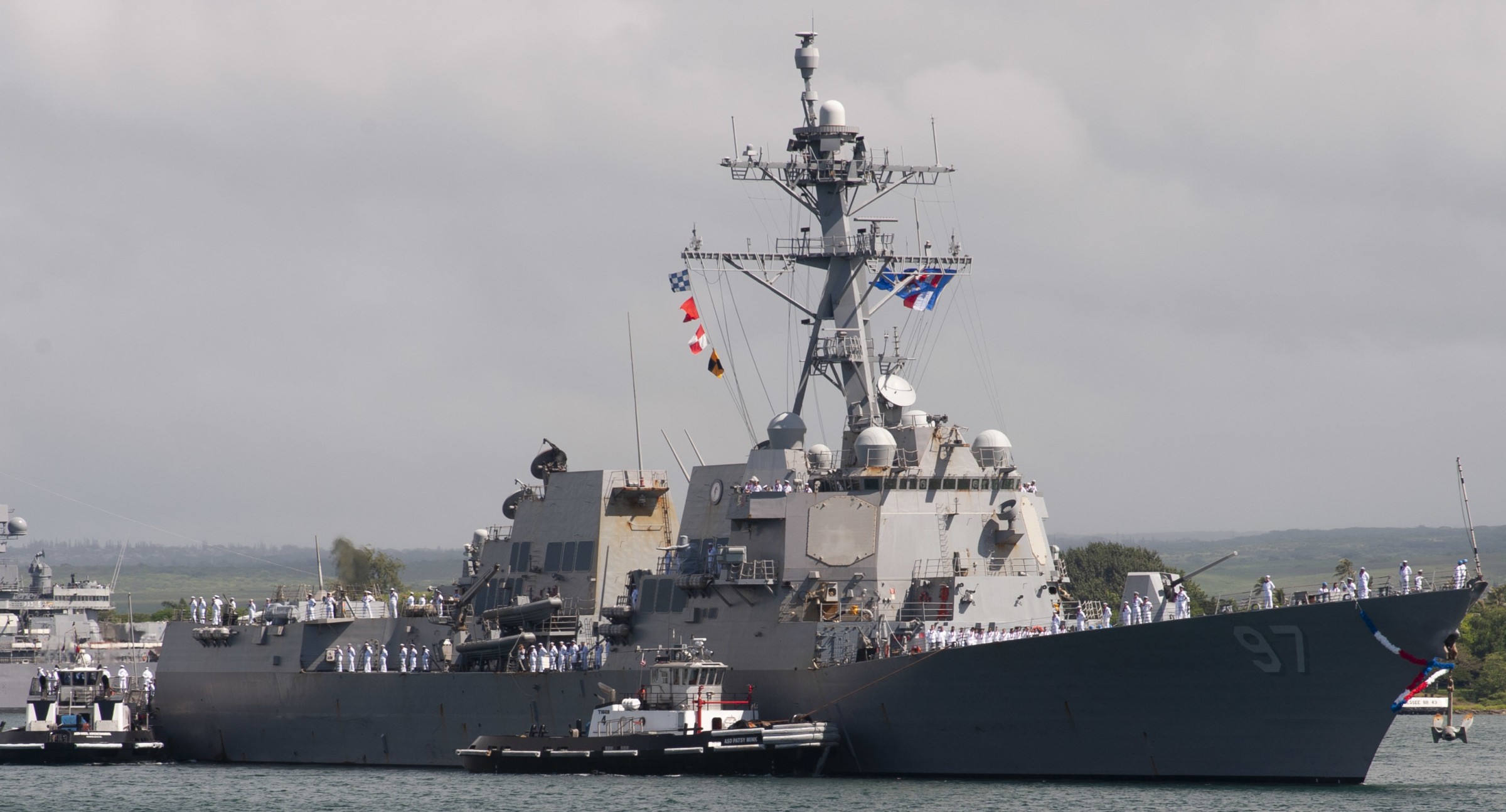 returning to Joint Base Pearl Harbor-Hickam, Hawaii - May 14, 2018 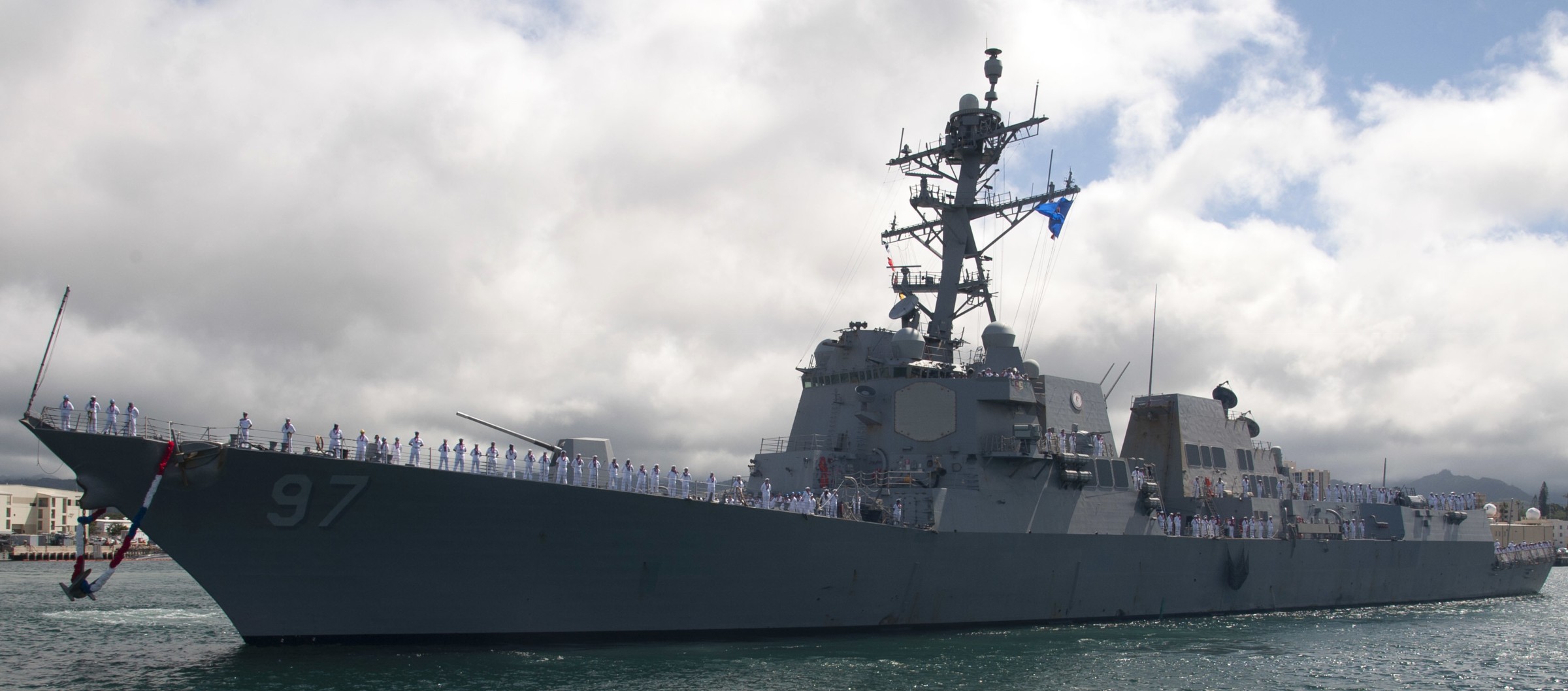 returning to Joint Base Pearl Harbor-Hickam, Hawaii - May 14, 2018 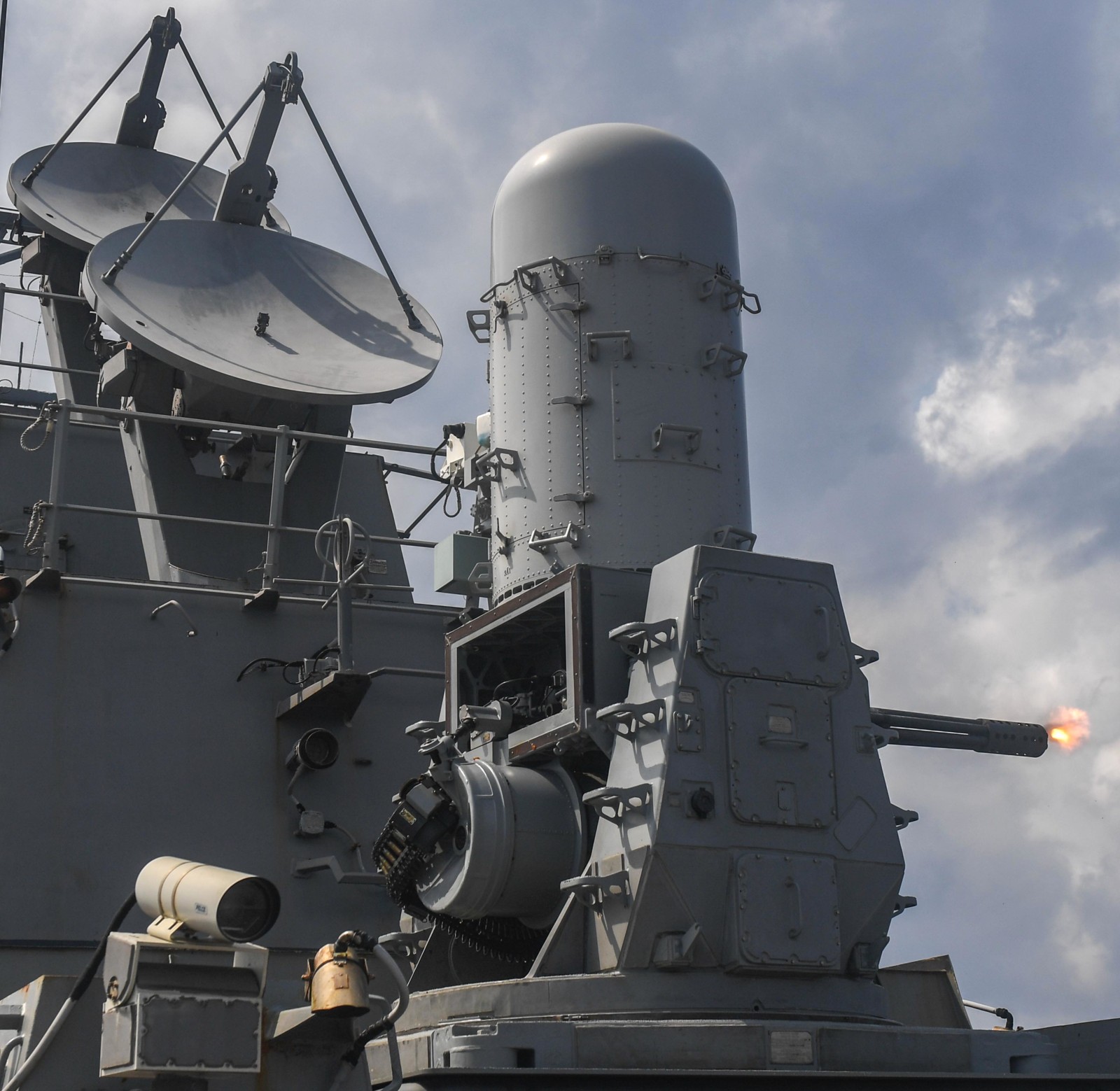 Mk.15 Phalanx CIWS fire exercise - South China Sea - April 2018 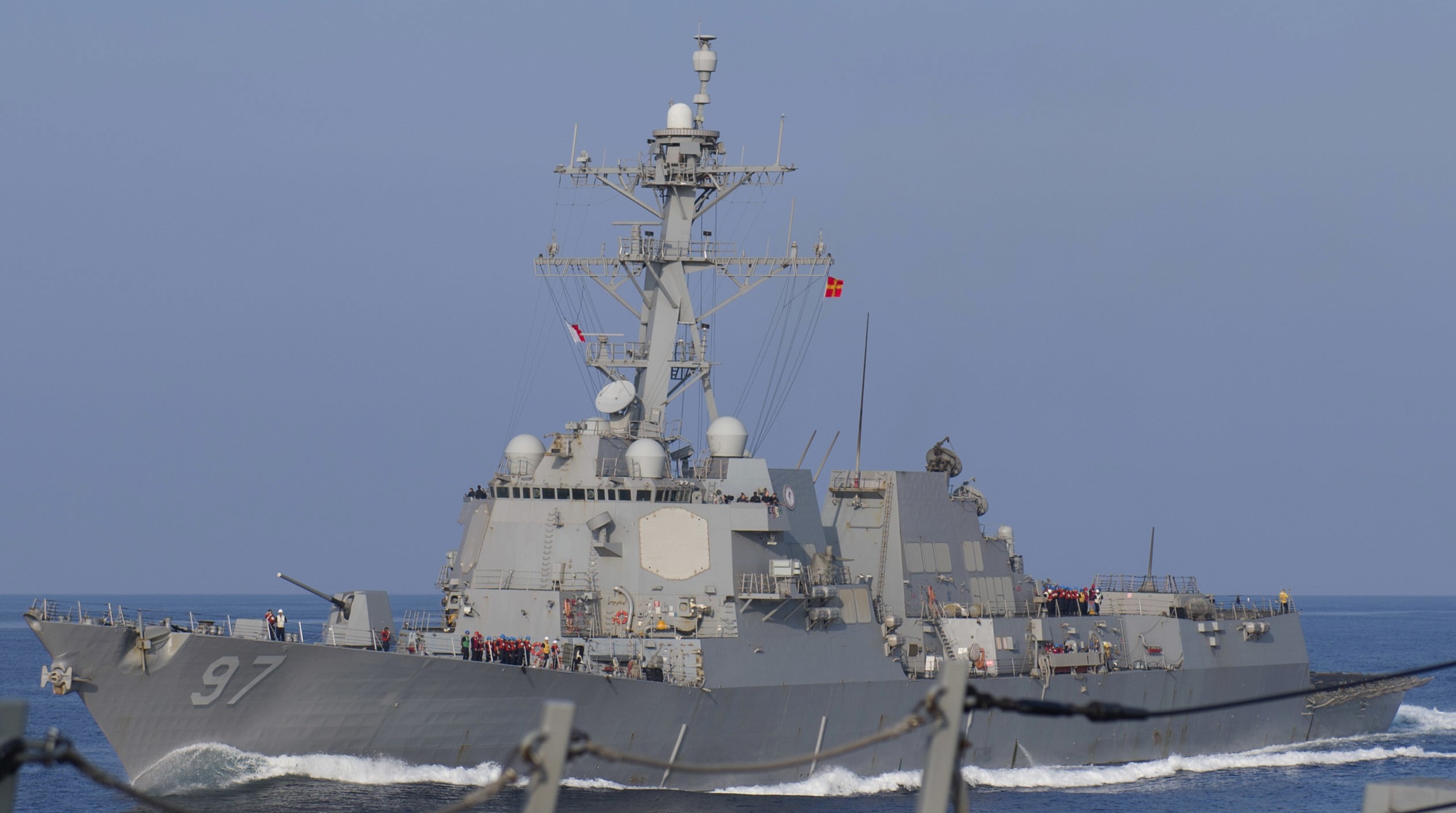 Indian Ocean - March 2018 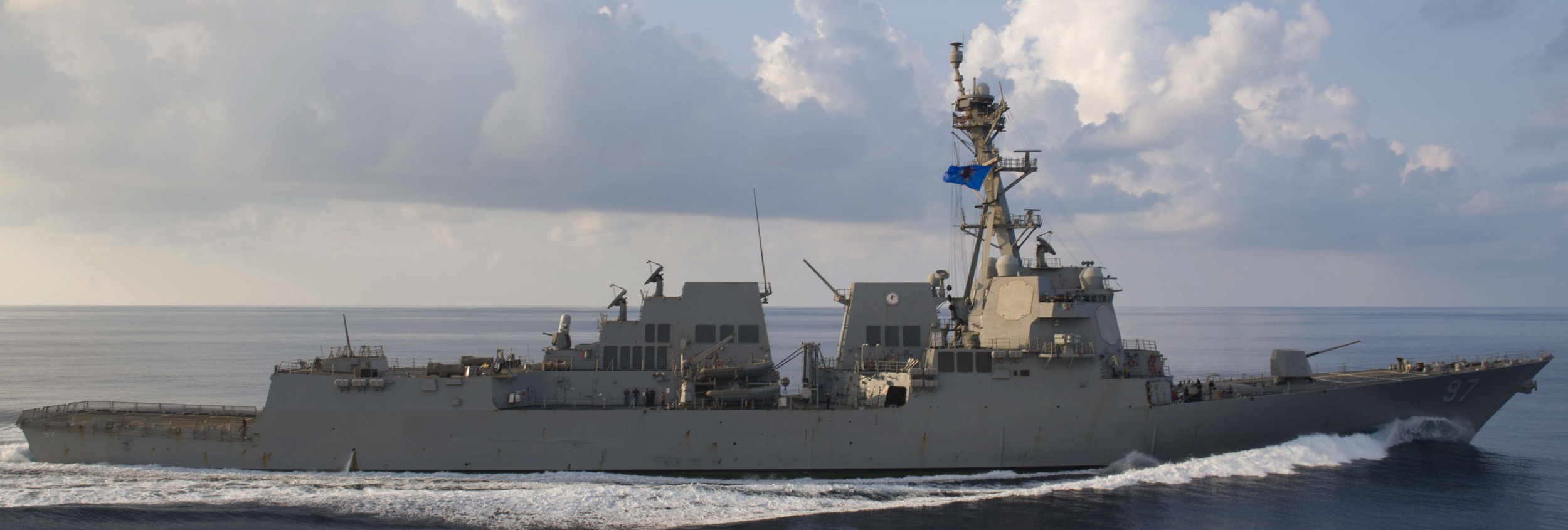 Indian Ocean - March 2018 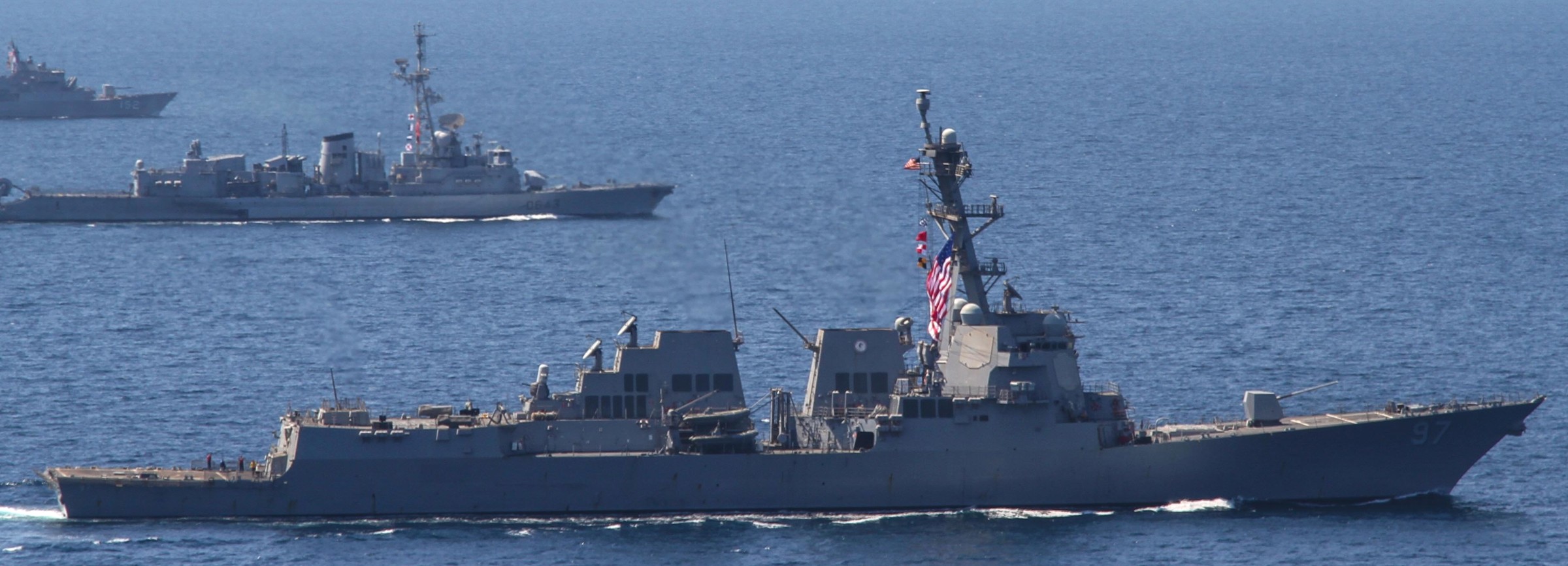 5th Fleet AOR - March 2018 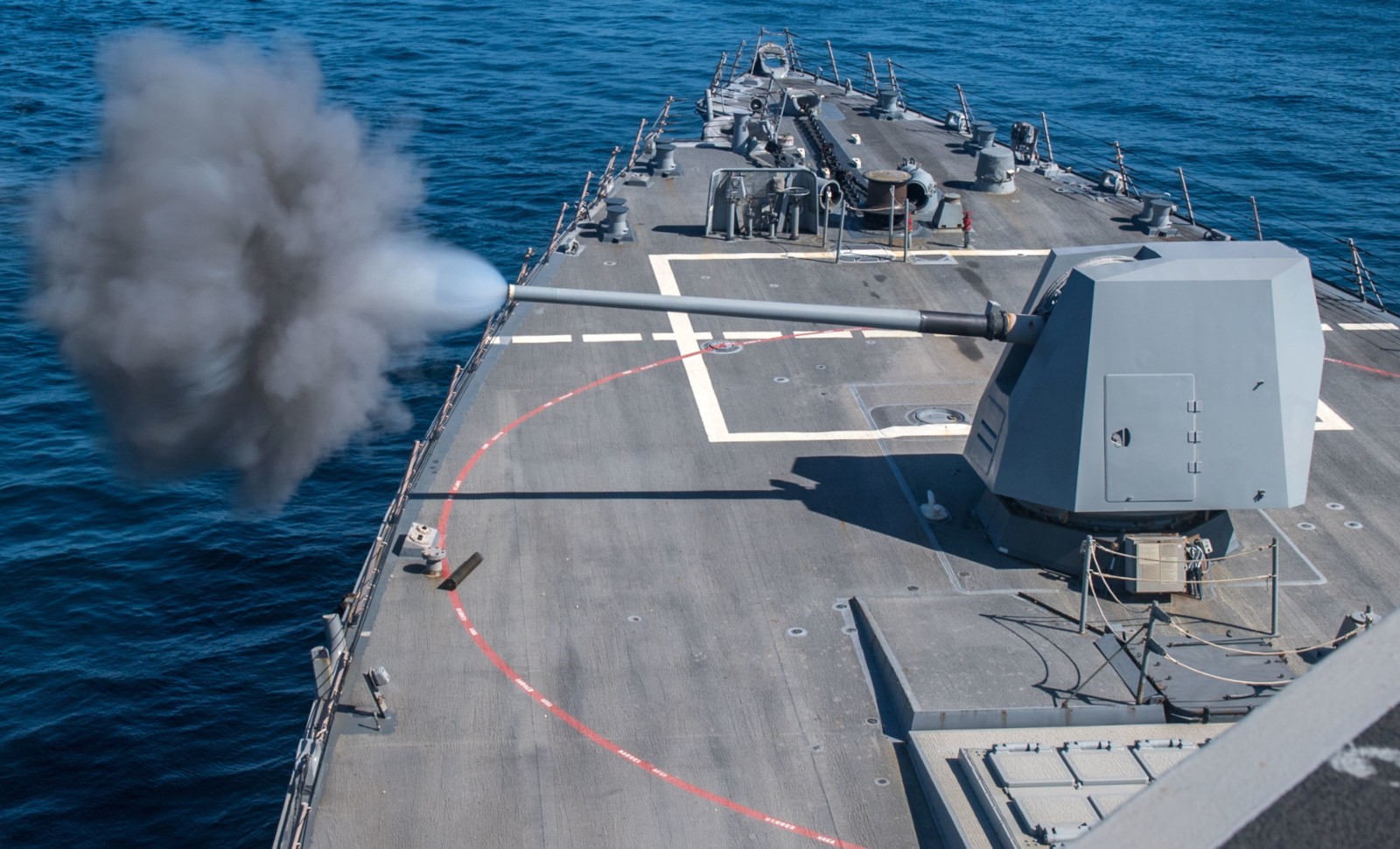 Mk.45 Mod.4 gun fire - 5th Fleet AOR - March 2018 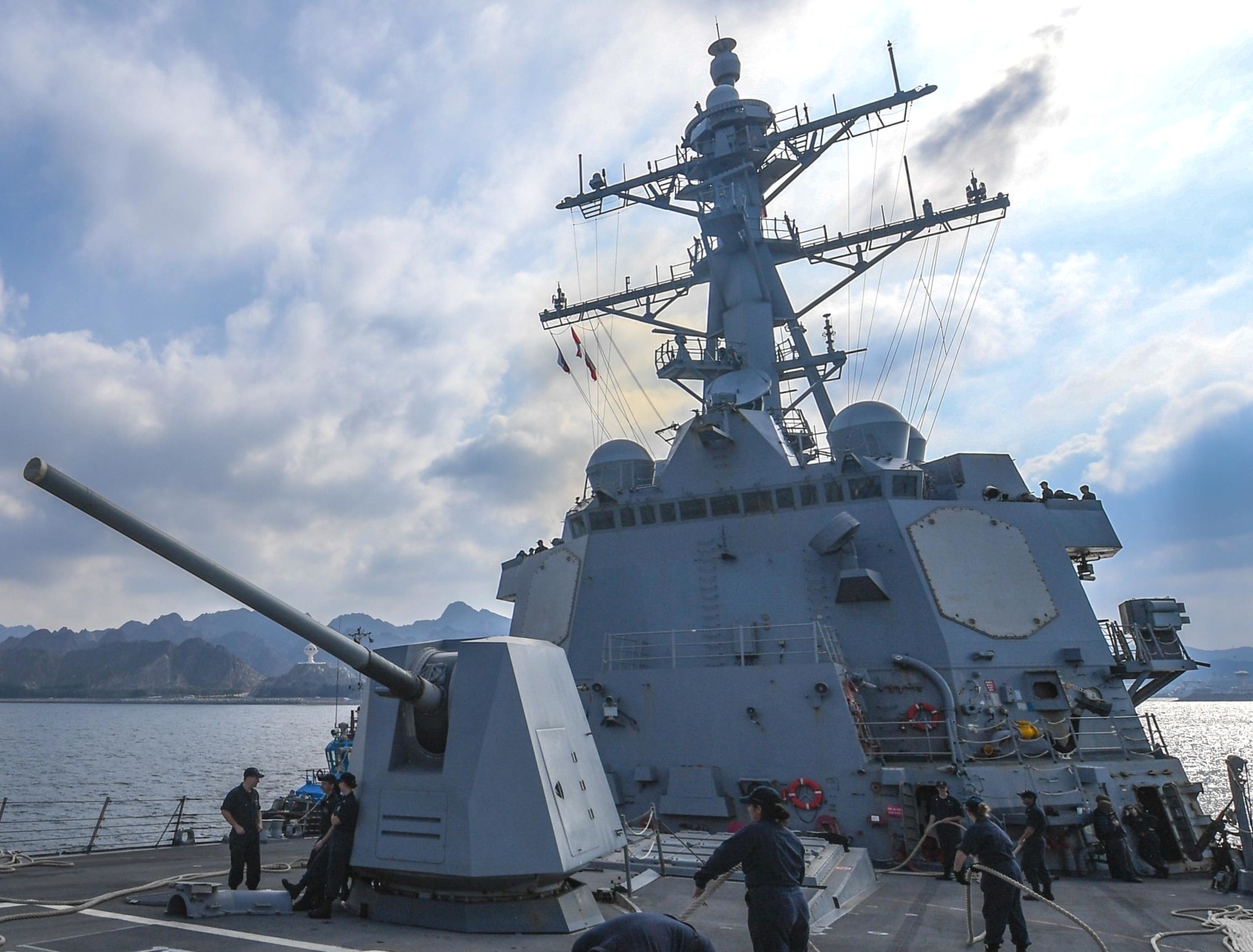 Muscat, Oman - March 2018 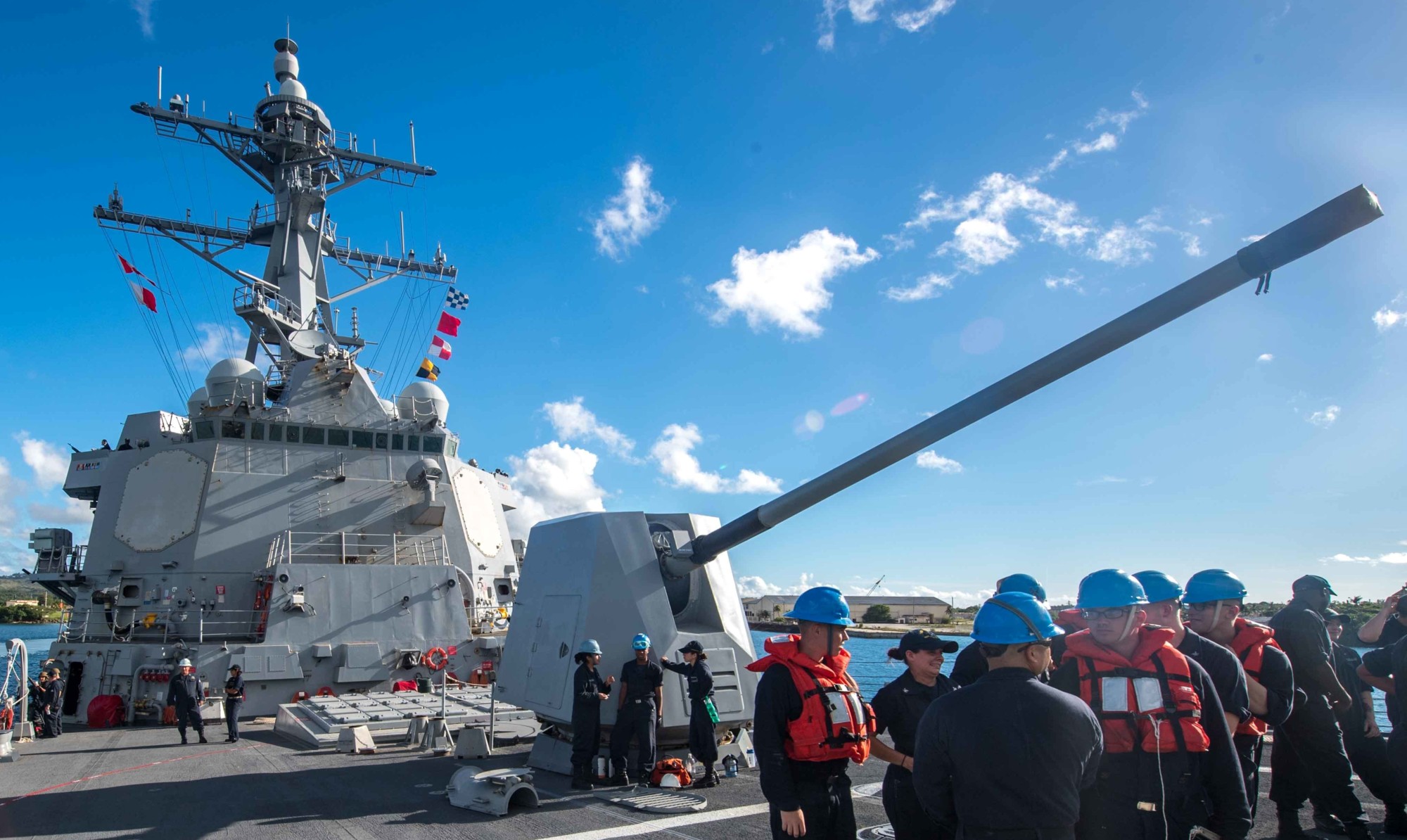 departing Naval Base Guam, Apra Harbor - November 2017 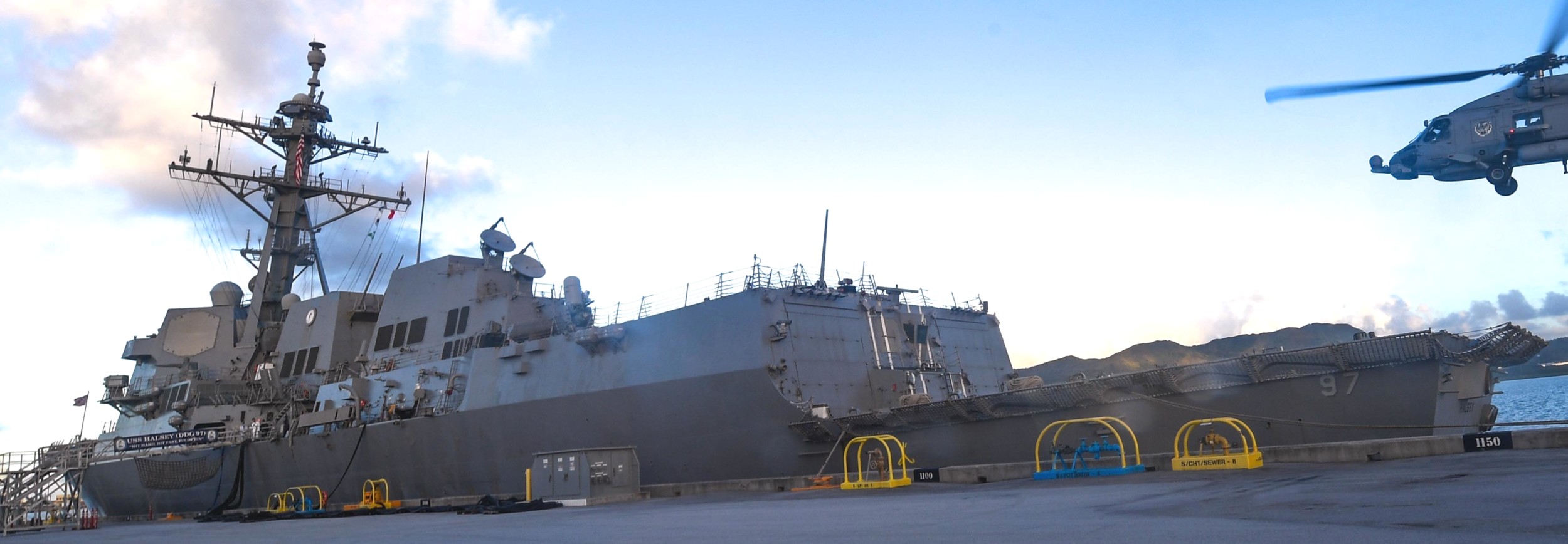 Naval Base Guam, Apra Harbor - November 2017 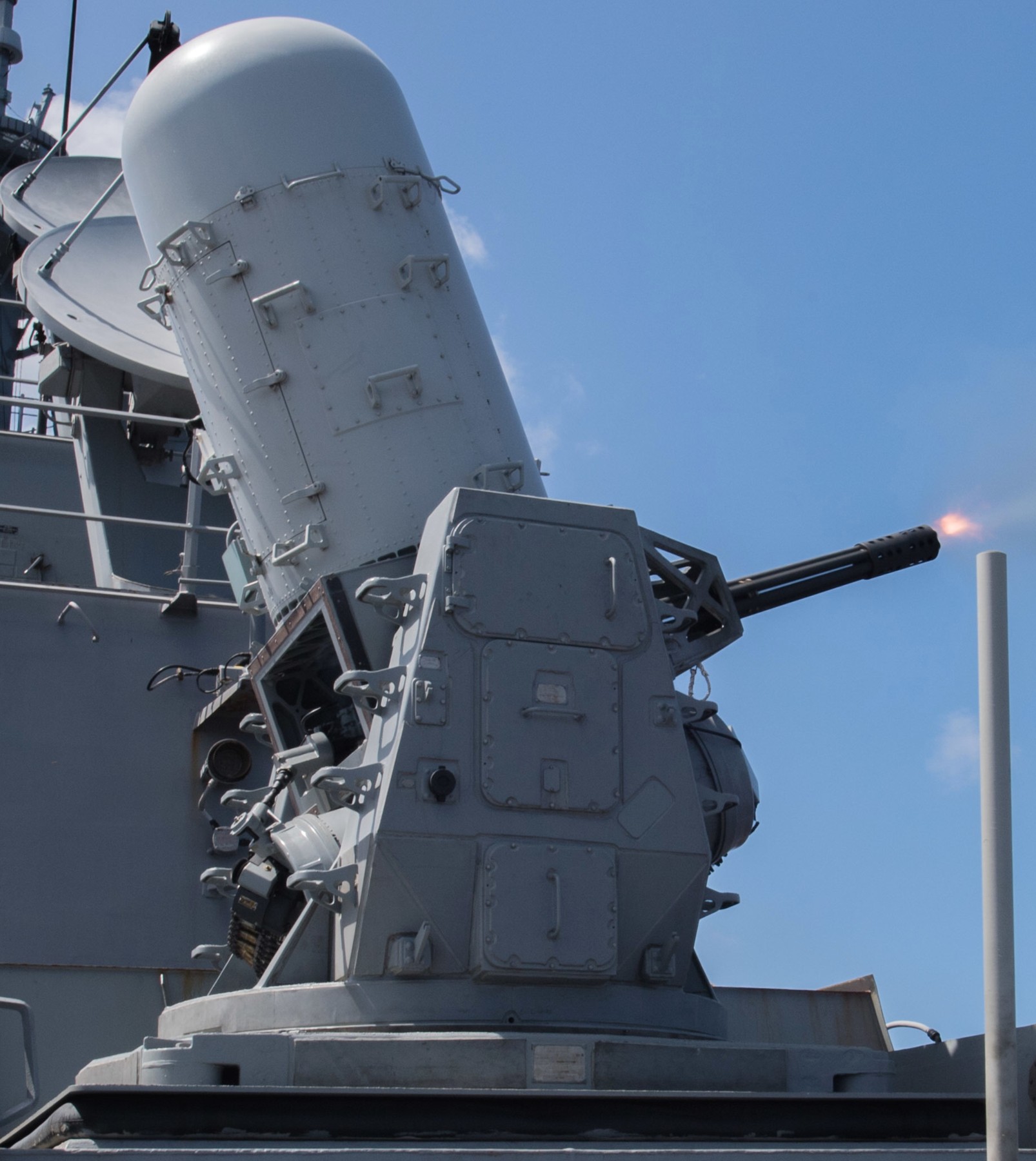 Mk.15 Phalanx CIWS fire exercise - Pacific Ocean - October 2017 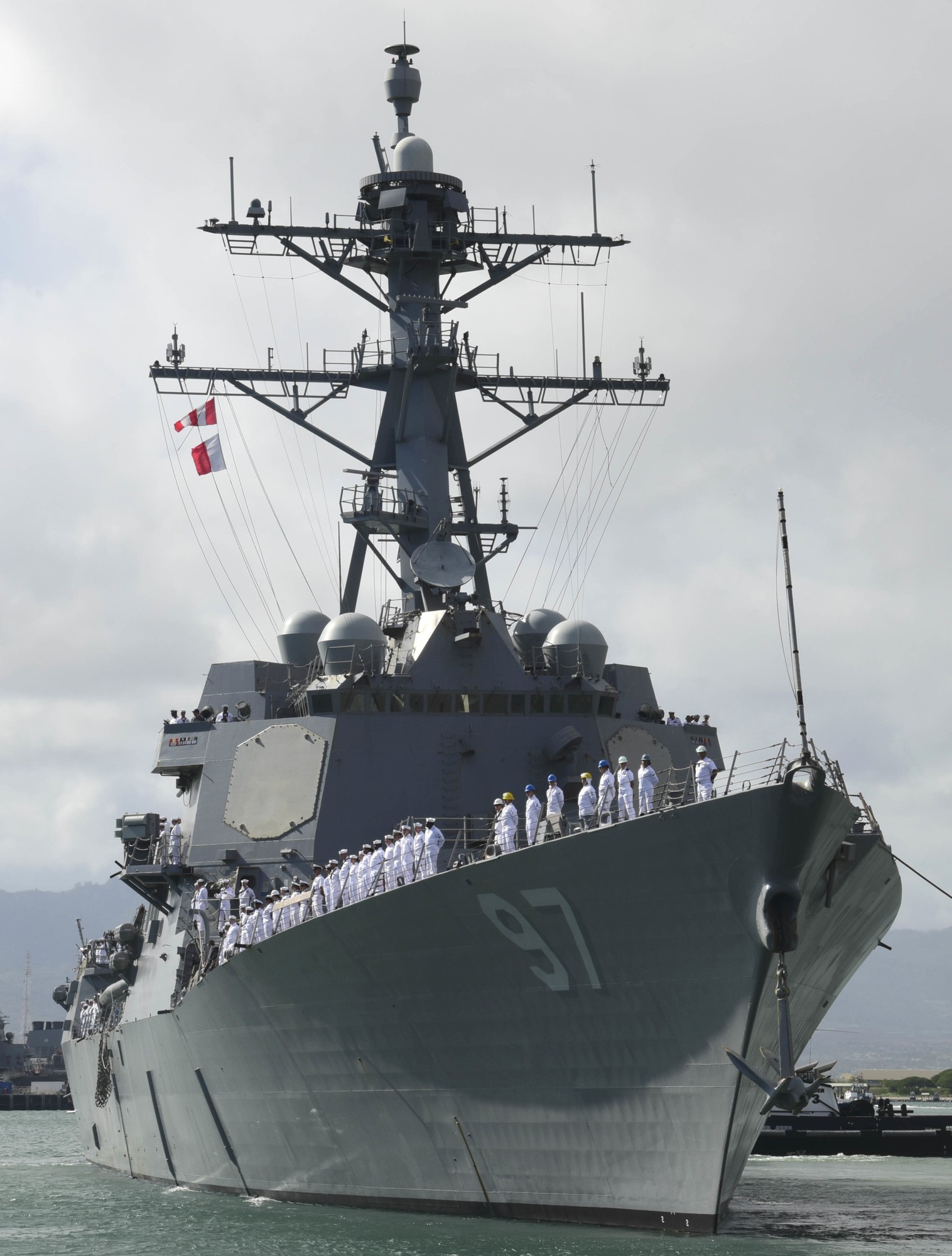 departing Joint Base Pearl Harbor-Hickam, Hawaii - October 16, 2017 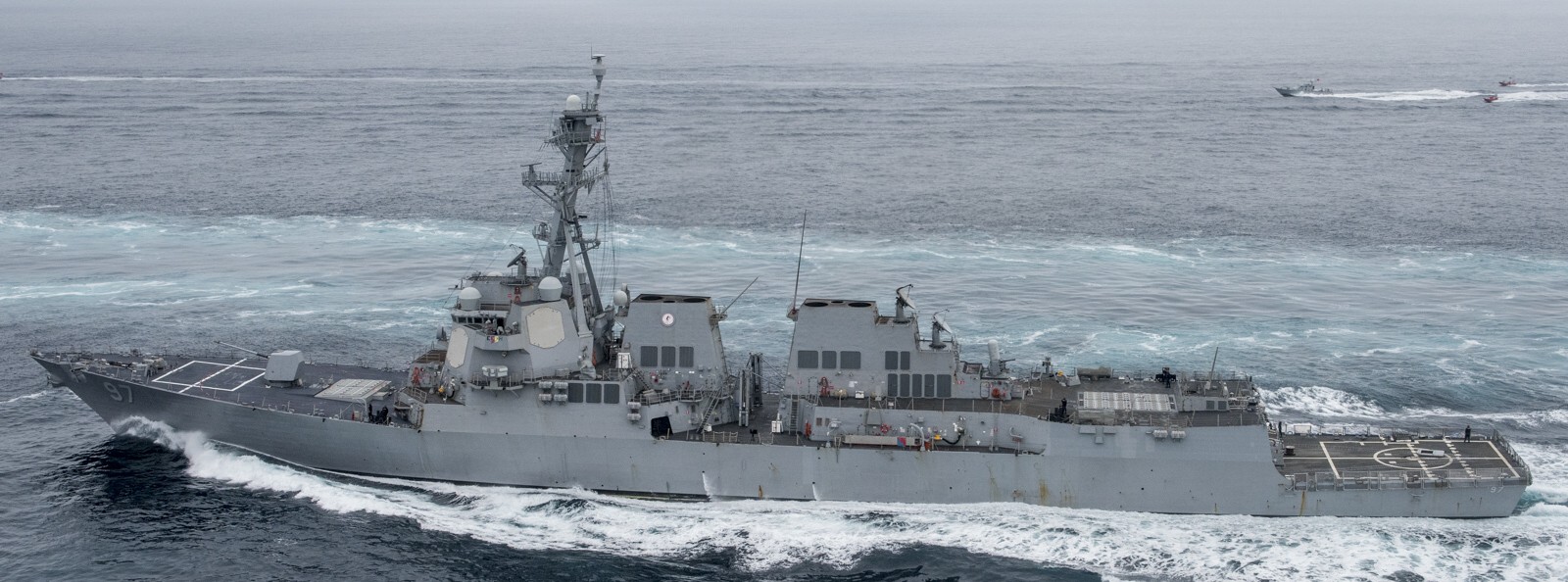 Pacific Ocean - August 2017  Pacific Ocean - August 2017 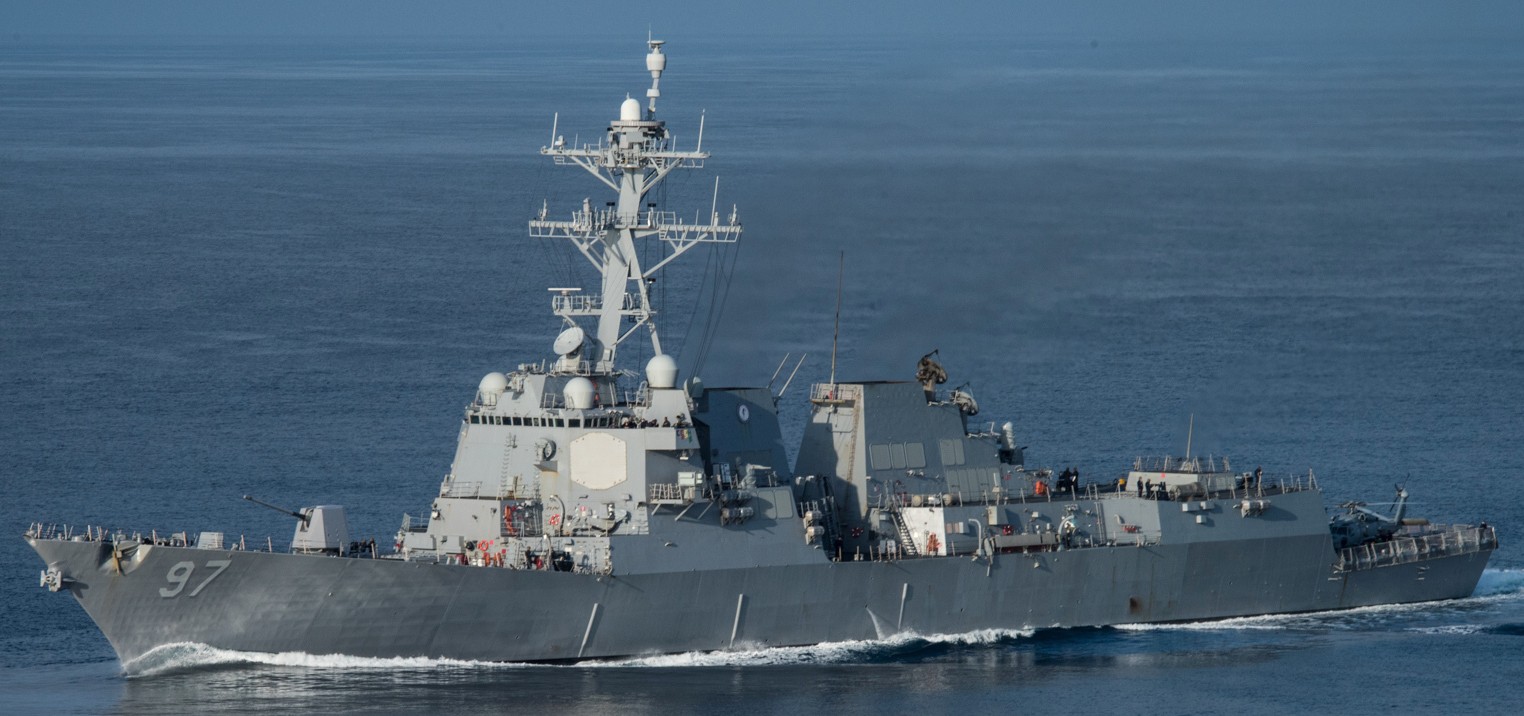 Pacific Ocean - May 2017  Pacific Ocean - May 2017 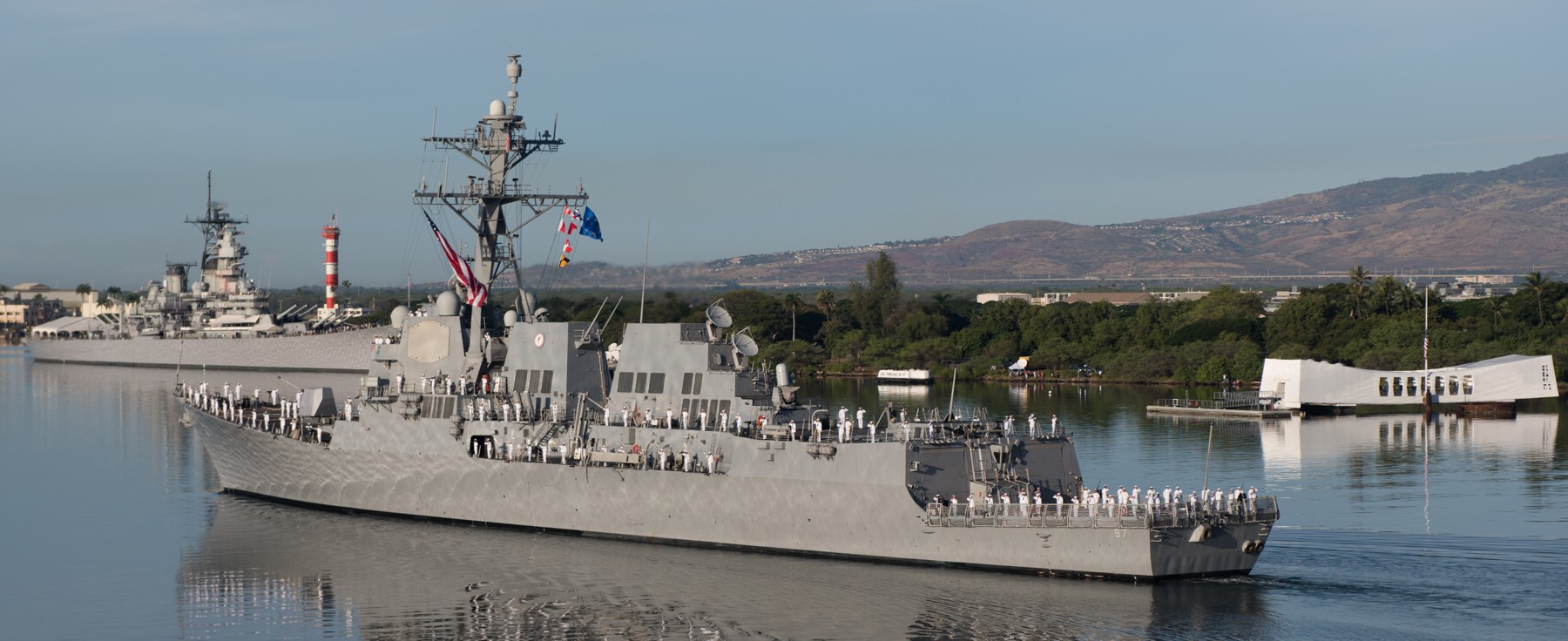 Pearl Harbor Remembrance Day (75th anniversary) - December 7, 2016 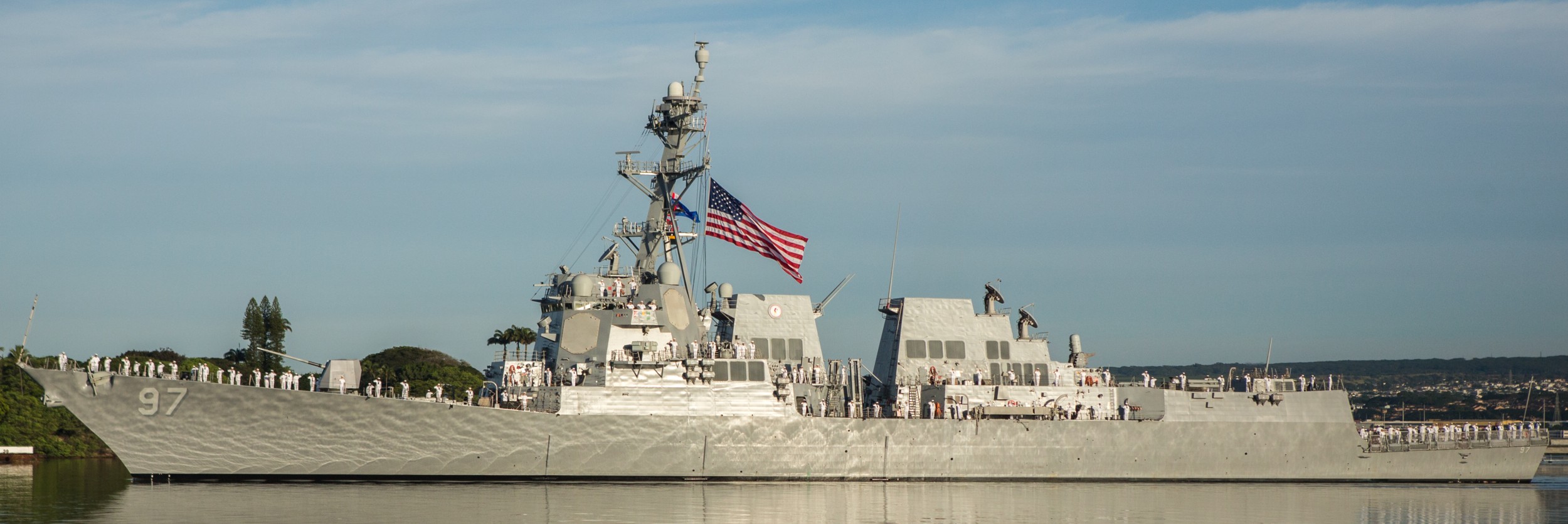 Pearl Harbor Remembrance Day (75th anniversary) - December 7, 2016 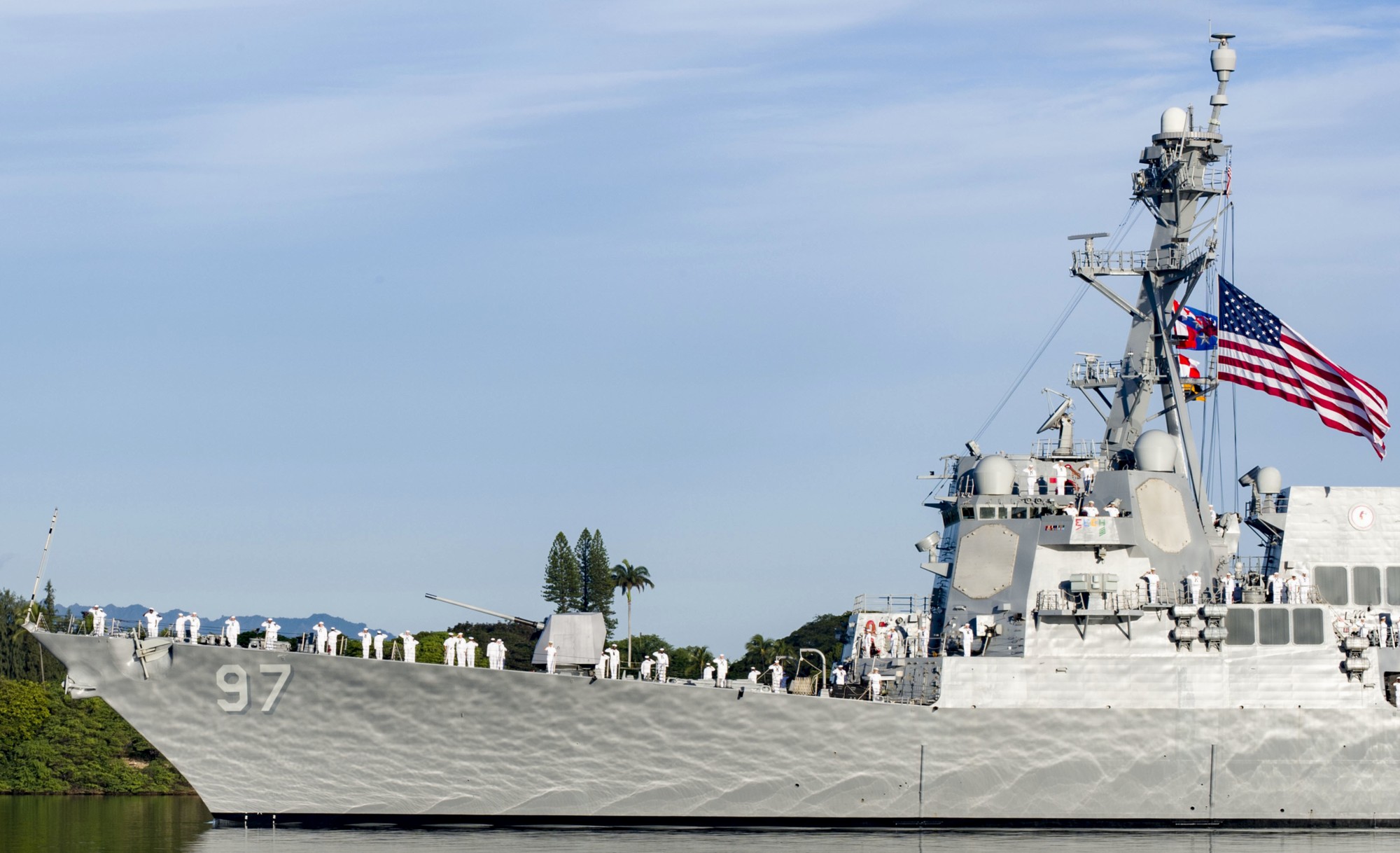 Pearl Harbor Remembrance Day (75th anniversary) - December 7, 2016 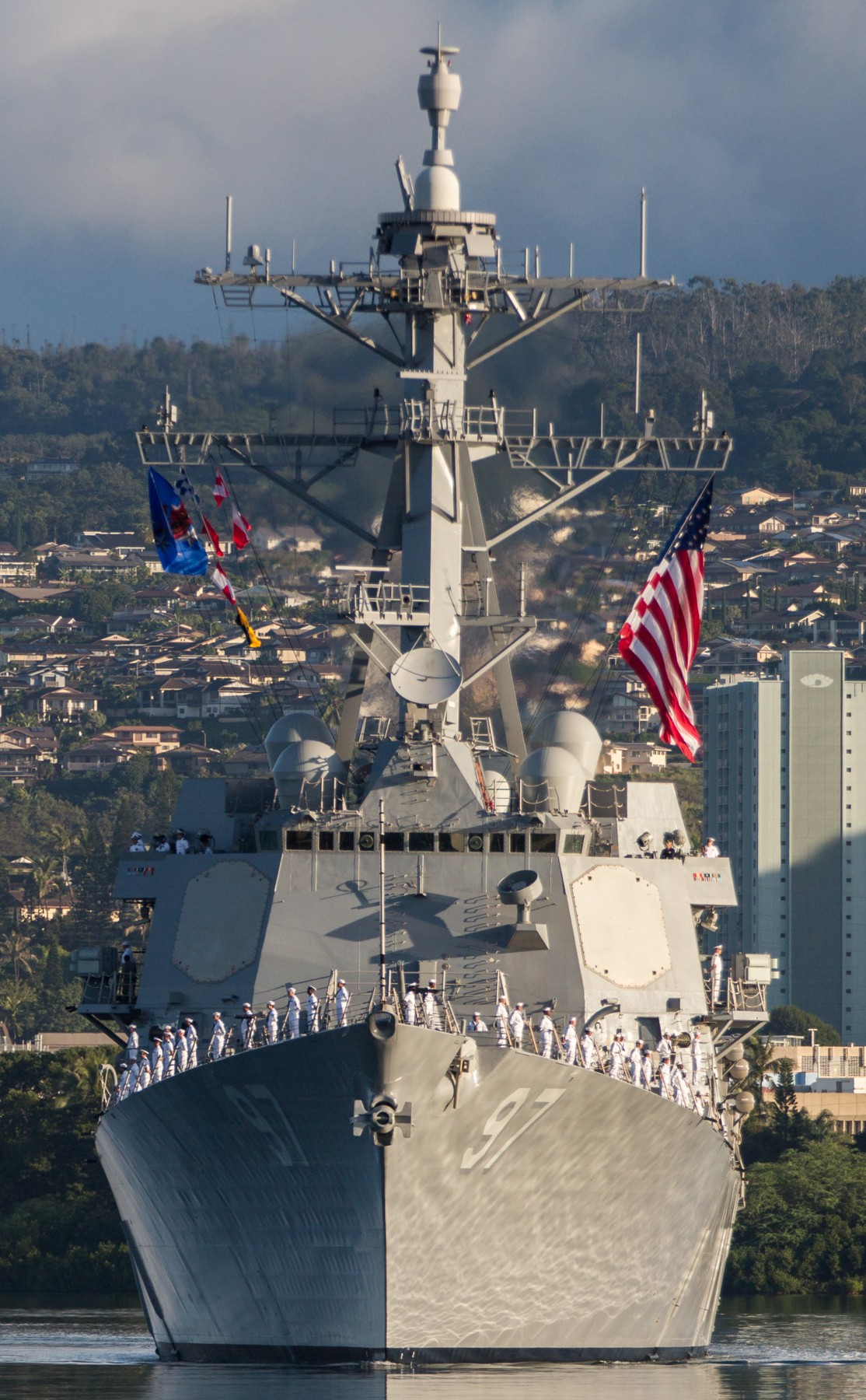 Pearl Harbor Remembrance Day (75th anniversary) - December 7, 2016 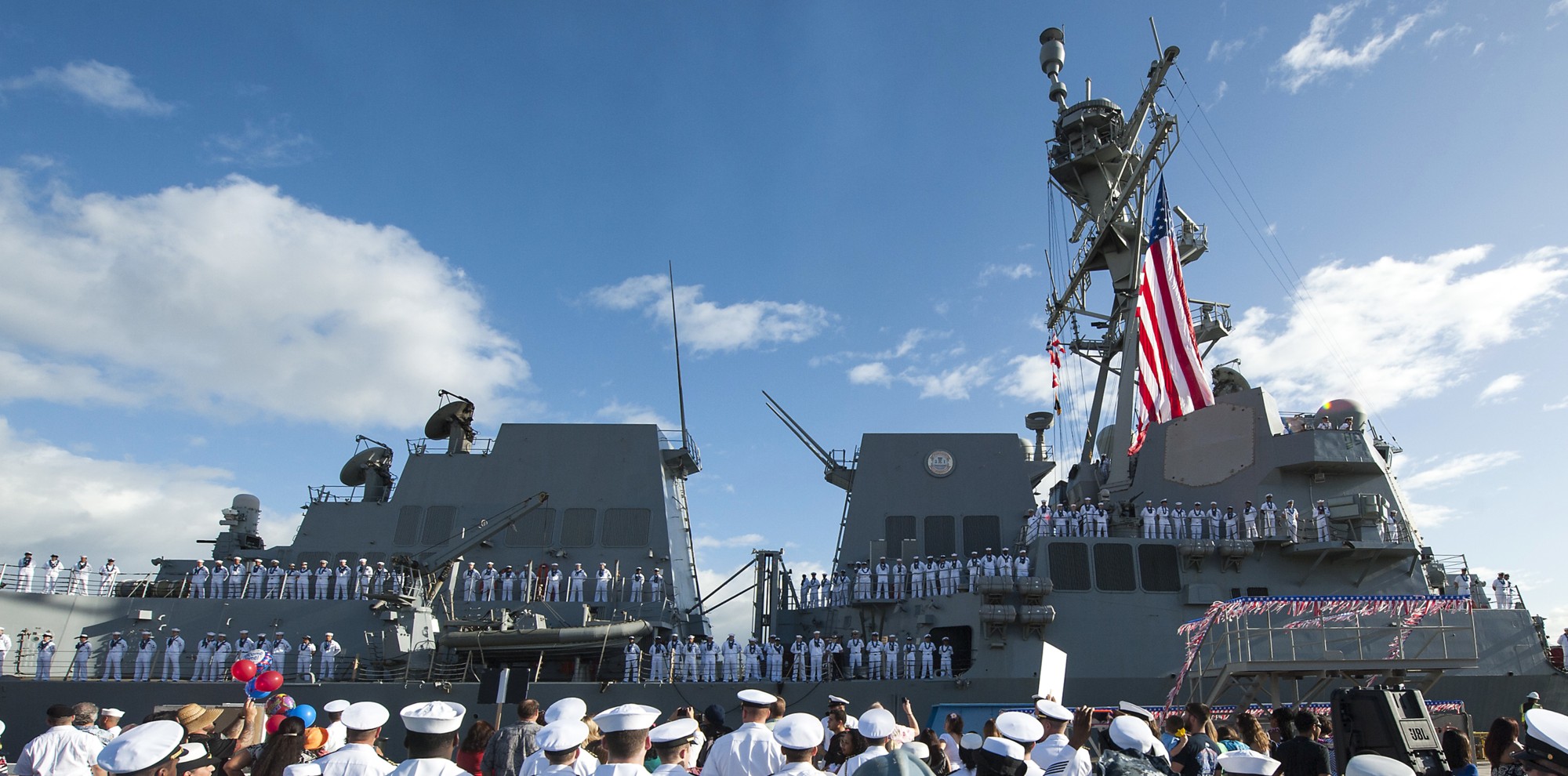 returning to Joint Base Pearl Harbor-Hickam, Hawaii - February 5, 2015 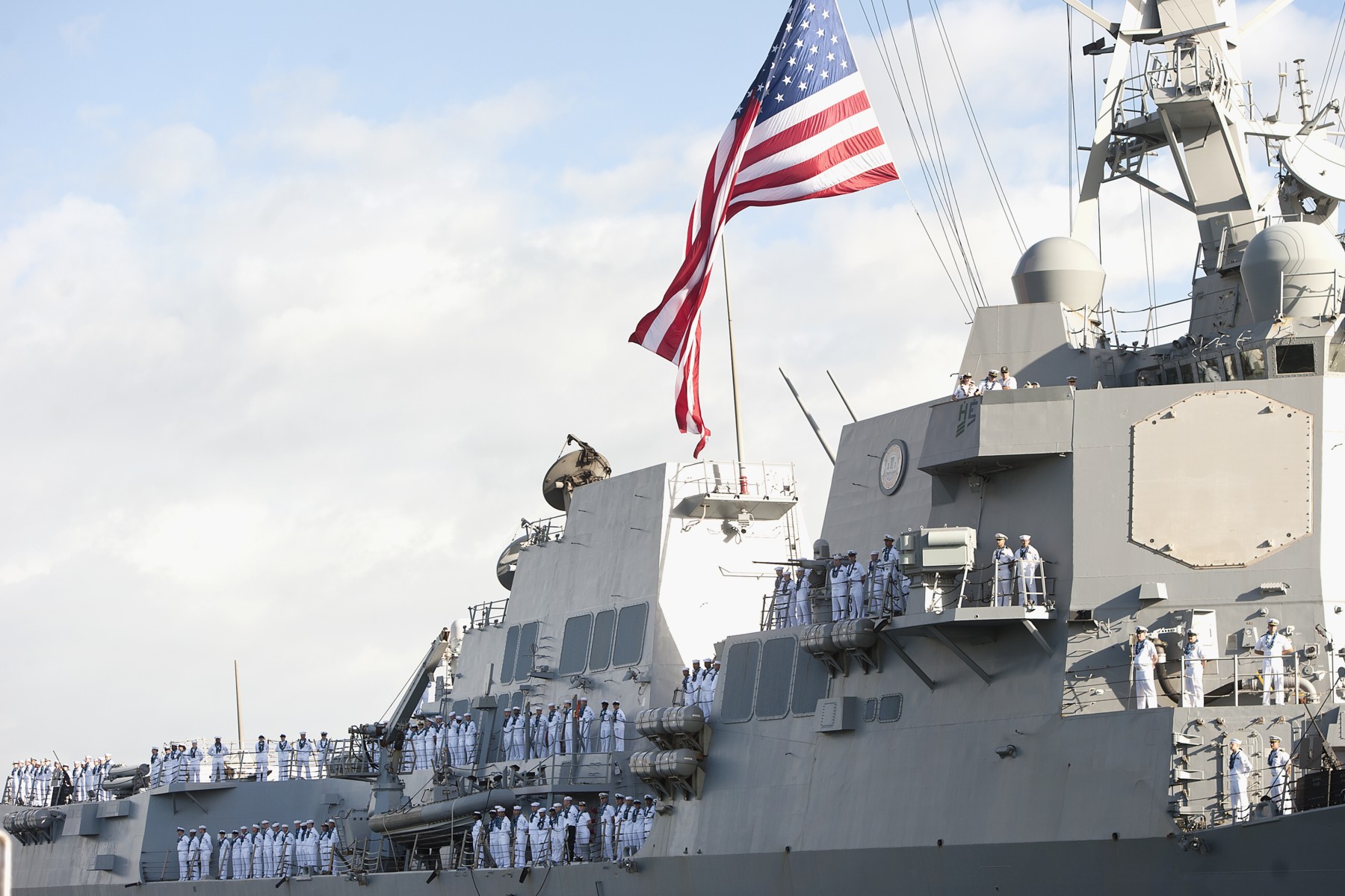 returning to Joint Base Pearl Harbor-Hickam, Hawaii - February 5, 2015 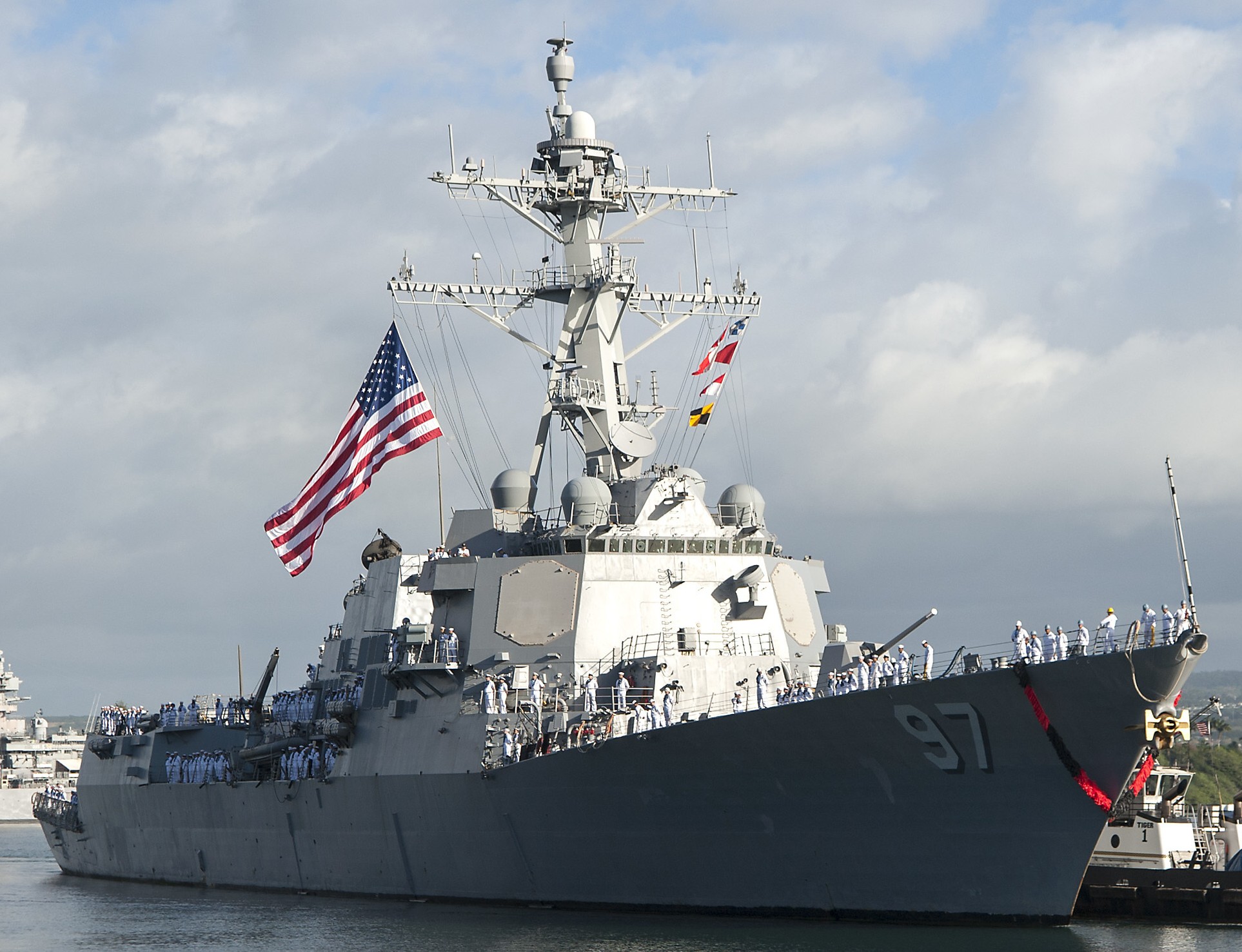 returning to Joint Base Pearl Harbor-Hickam, Hawaii - February 5, 2015 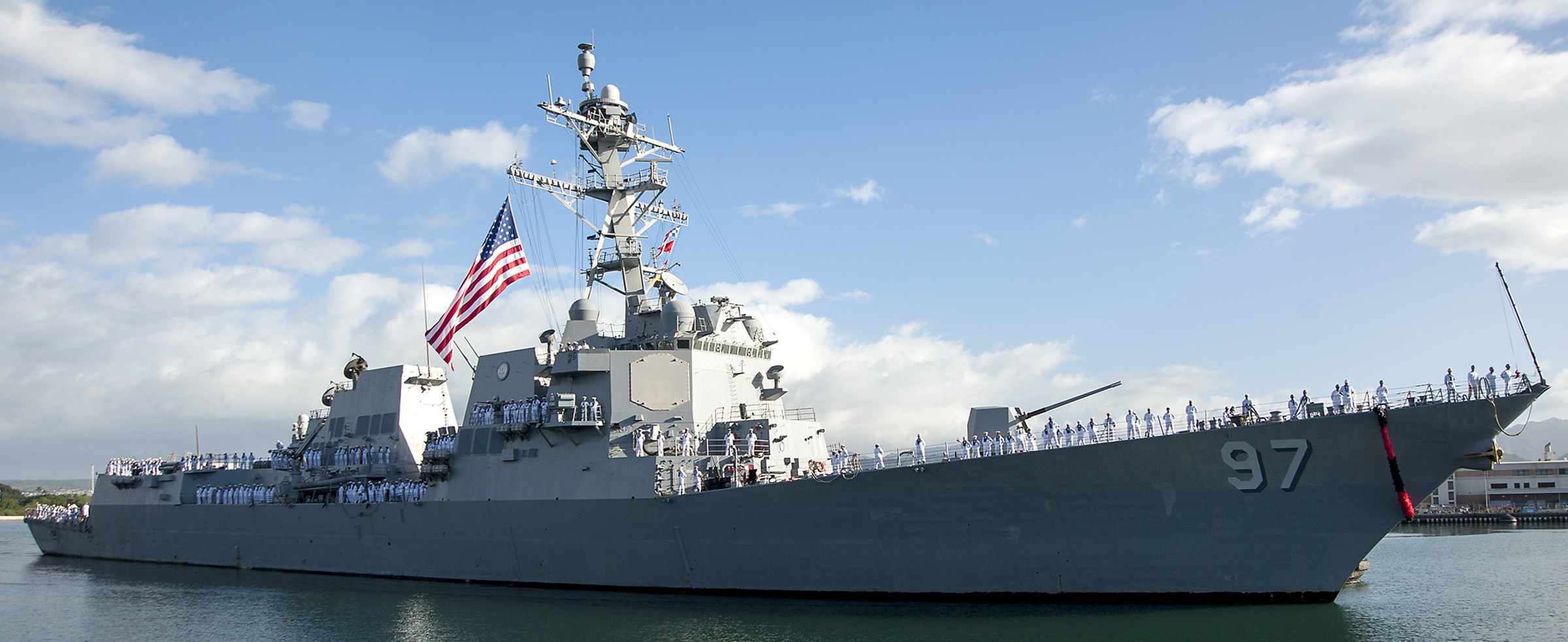 returning to Joint Base Pearl Harbor-Hickam, Hawaii - February 5, 2015 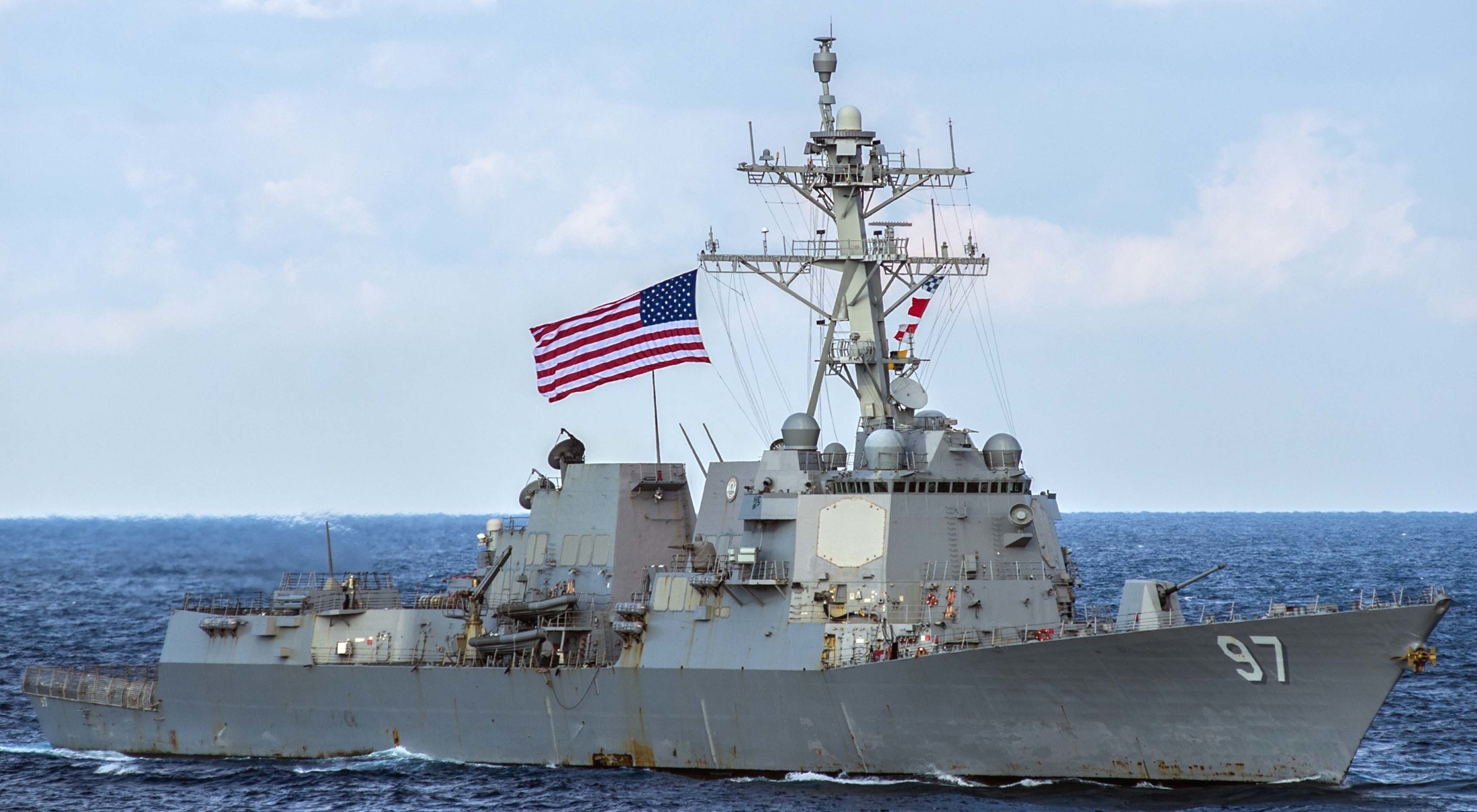 during exercise KEEN SWORD - off Japan - November 2014 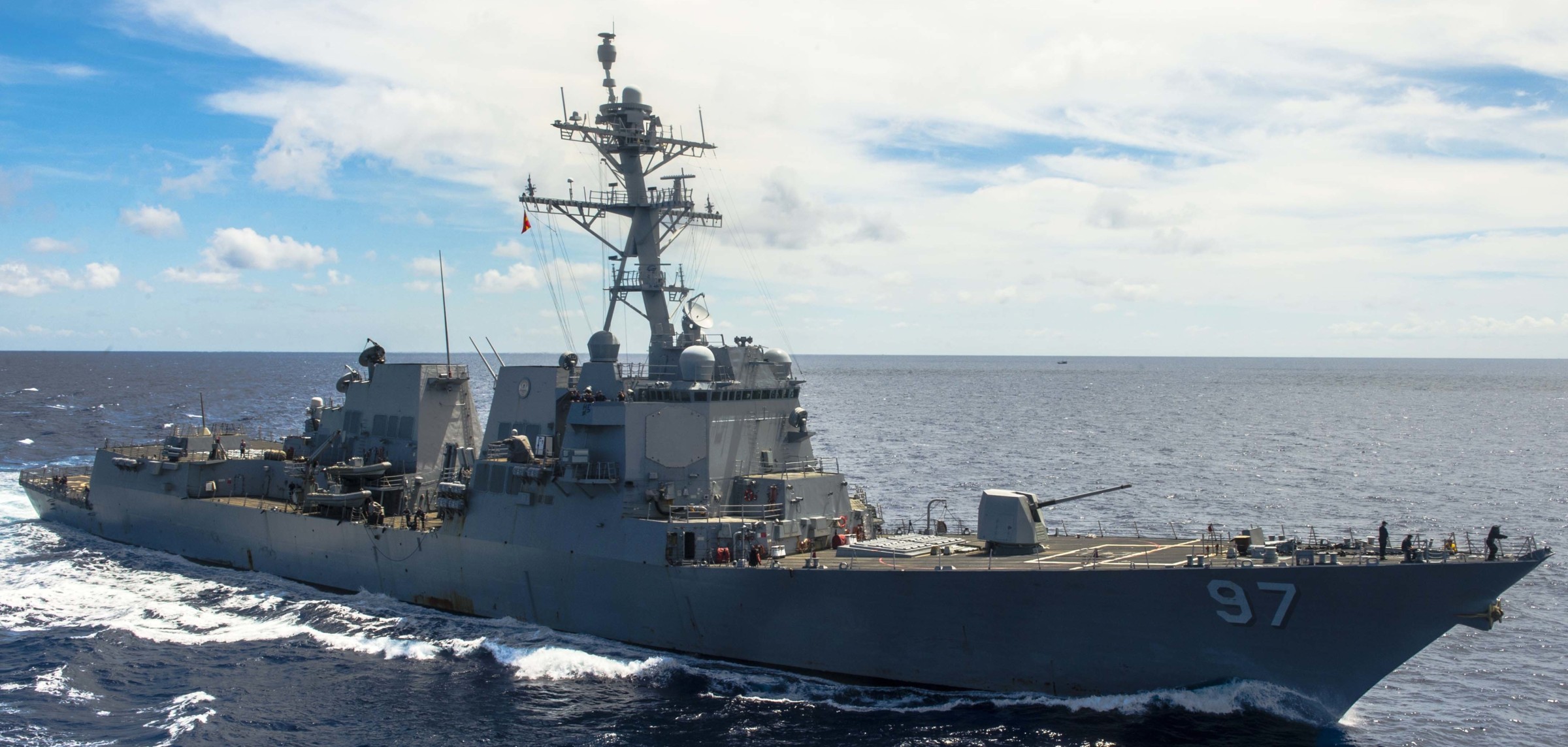 Philippine Sea - October 2014 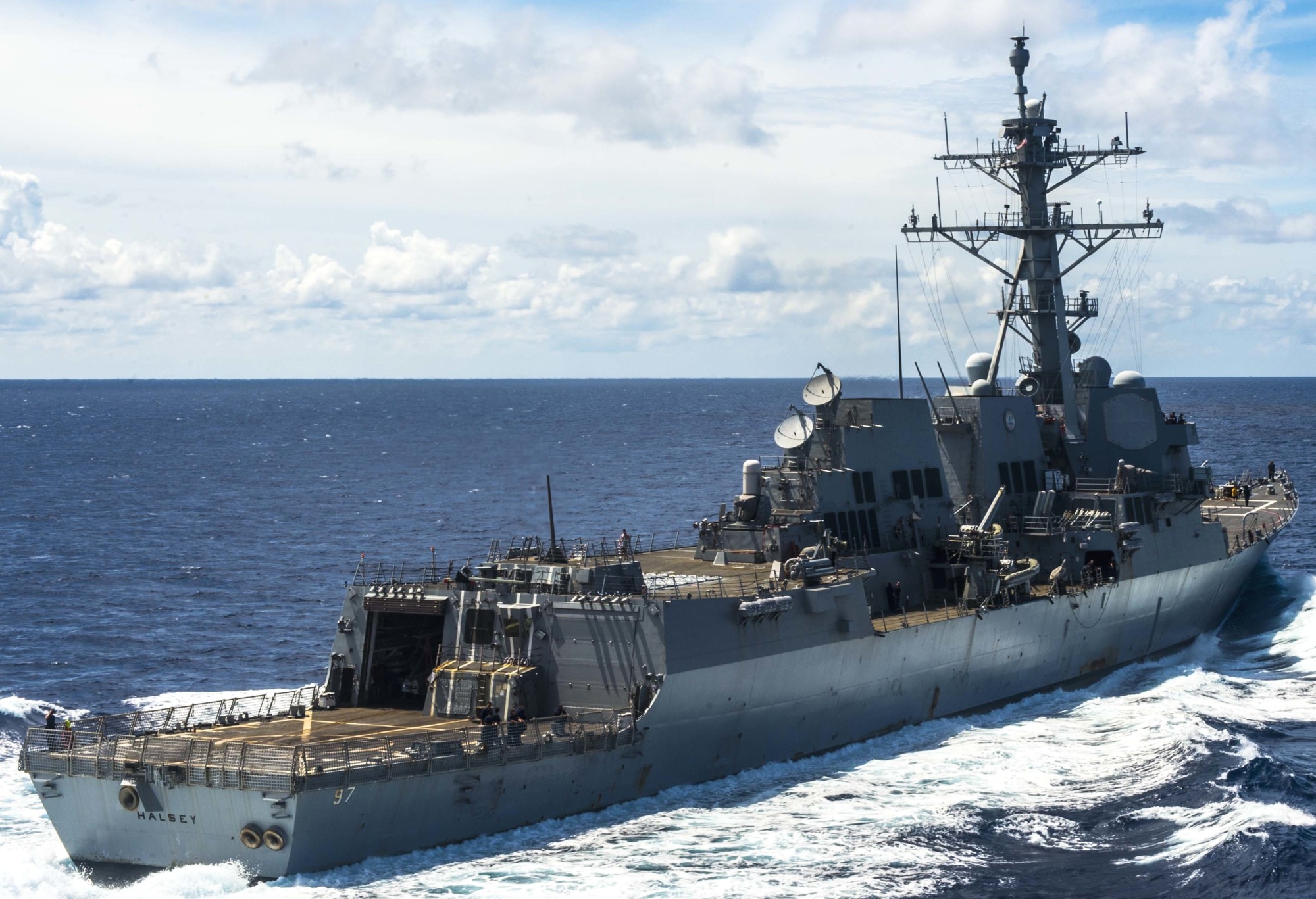 Philippine Sea - October 2014 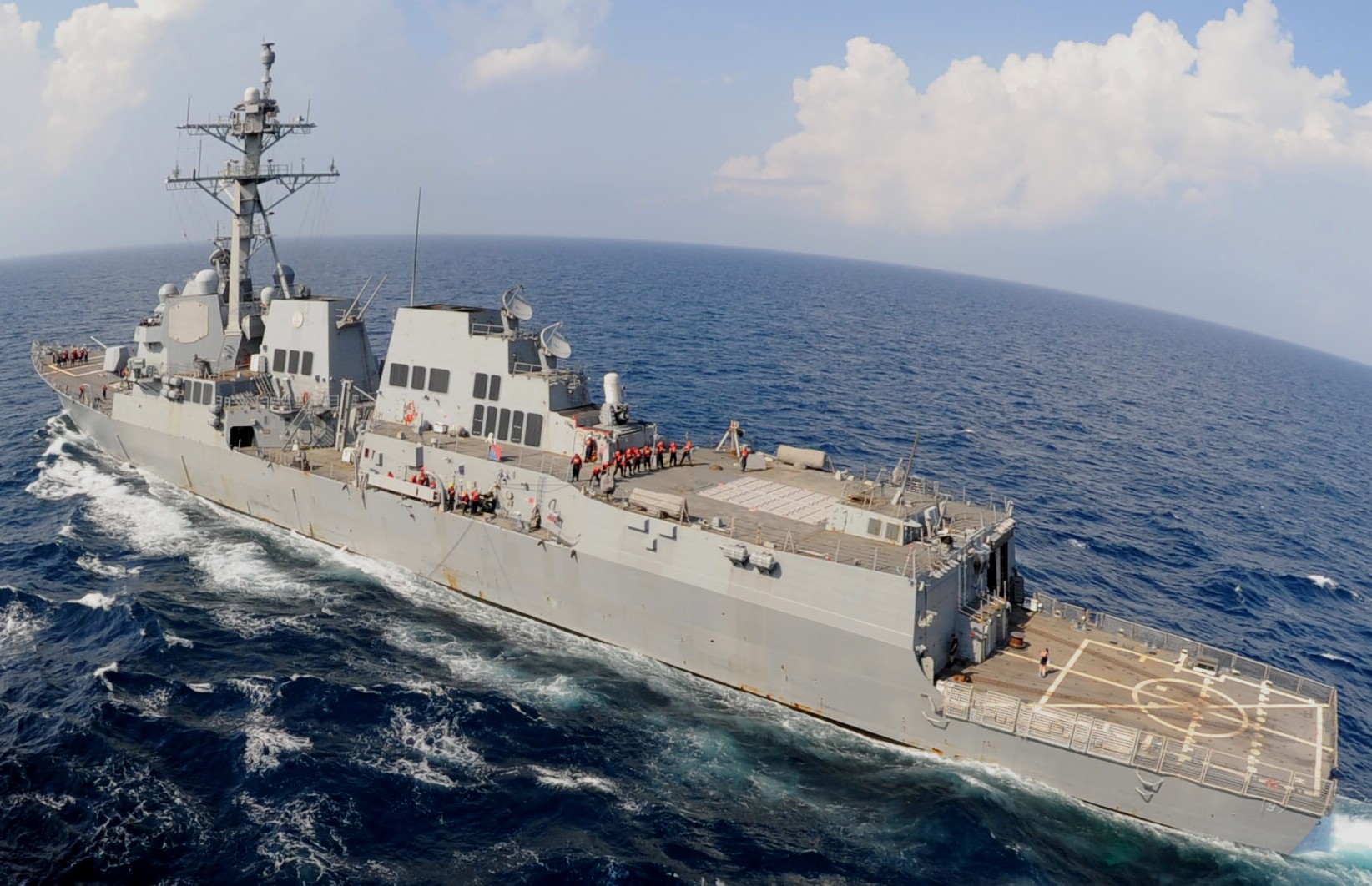 during exercise CARAT - off Singapore - August 2014 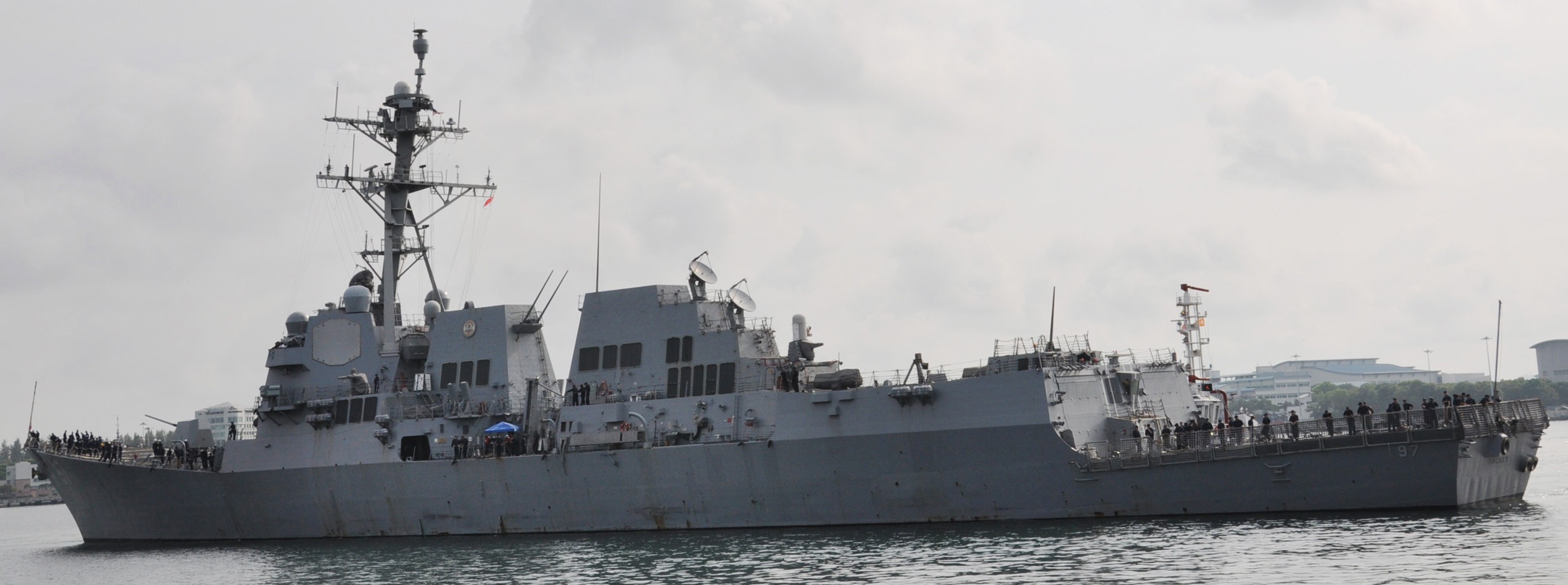 Changi Naval Base, Singapore - July 2014 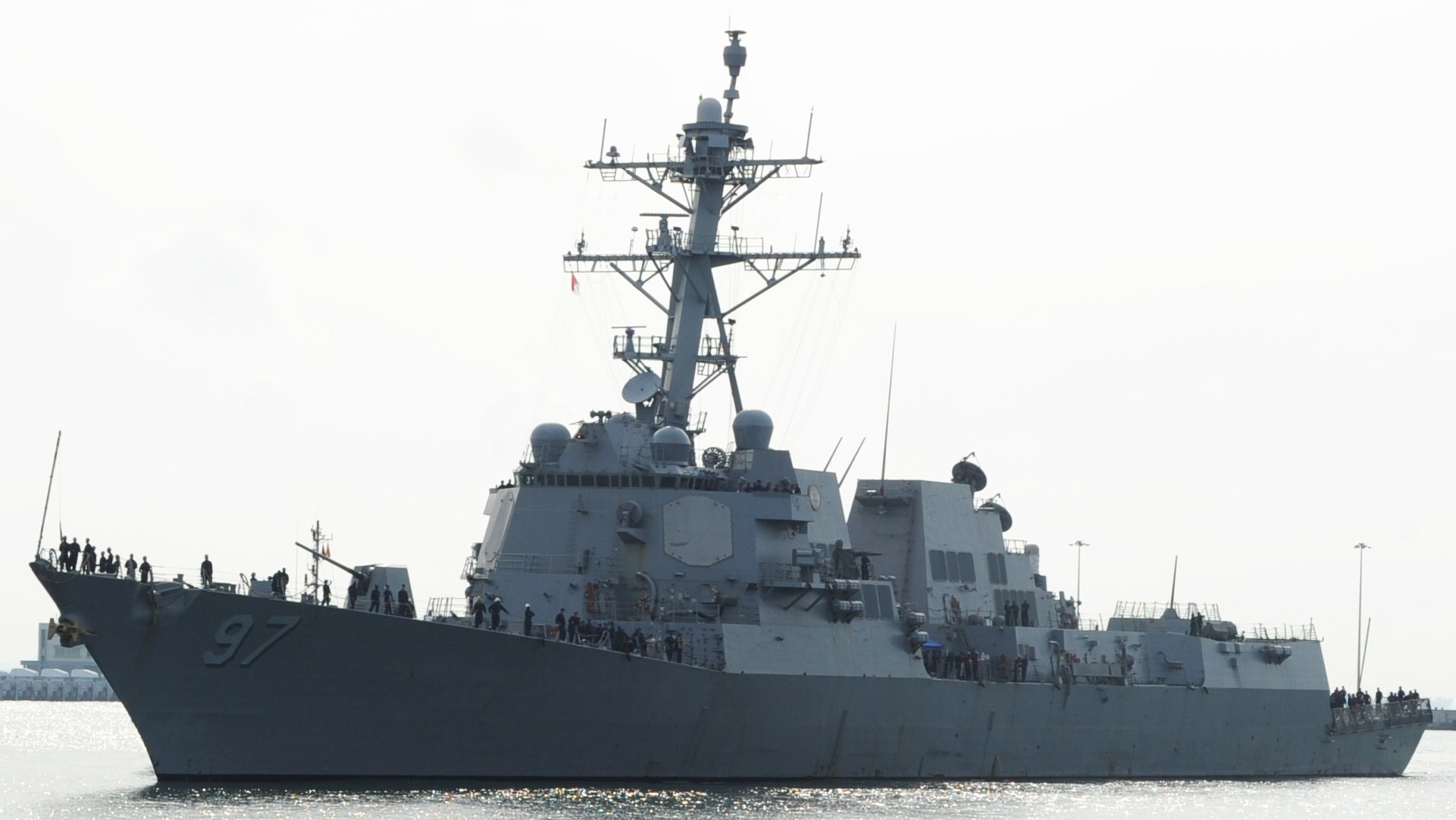 Changi Naval Base, Singapore - July 2014 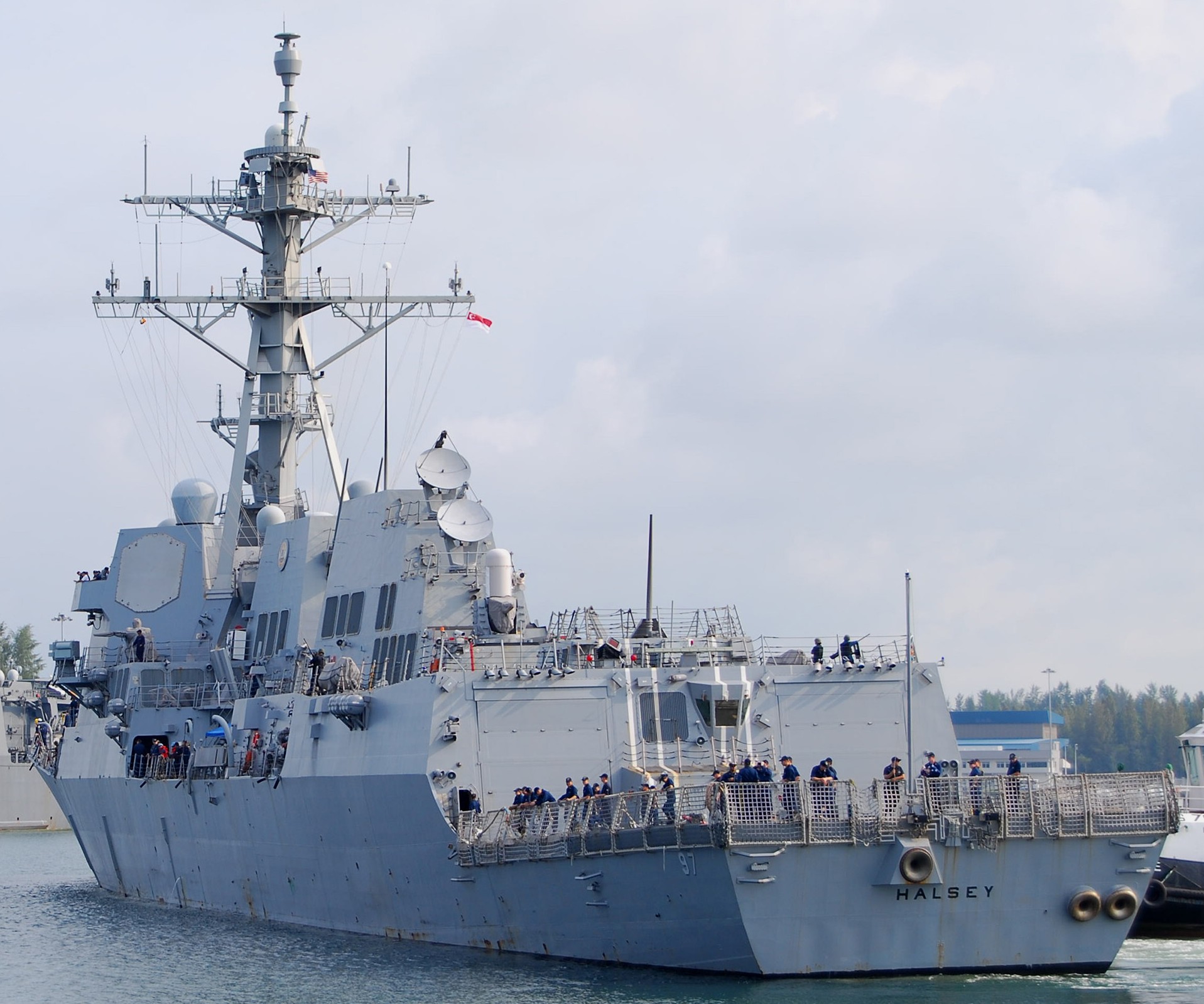 Changi Naval Base, Singapore - July 2014 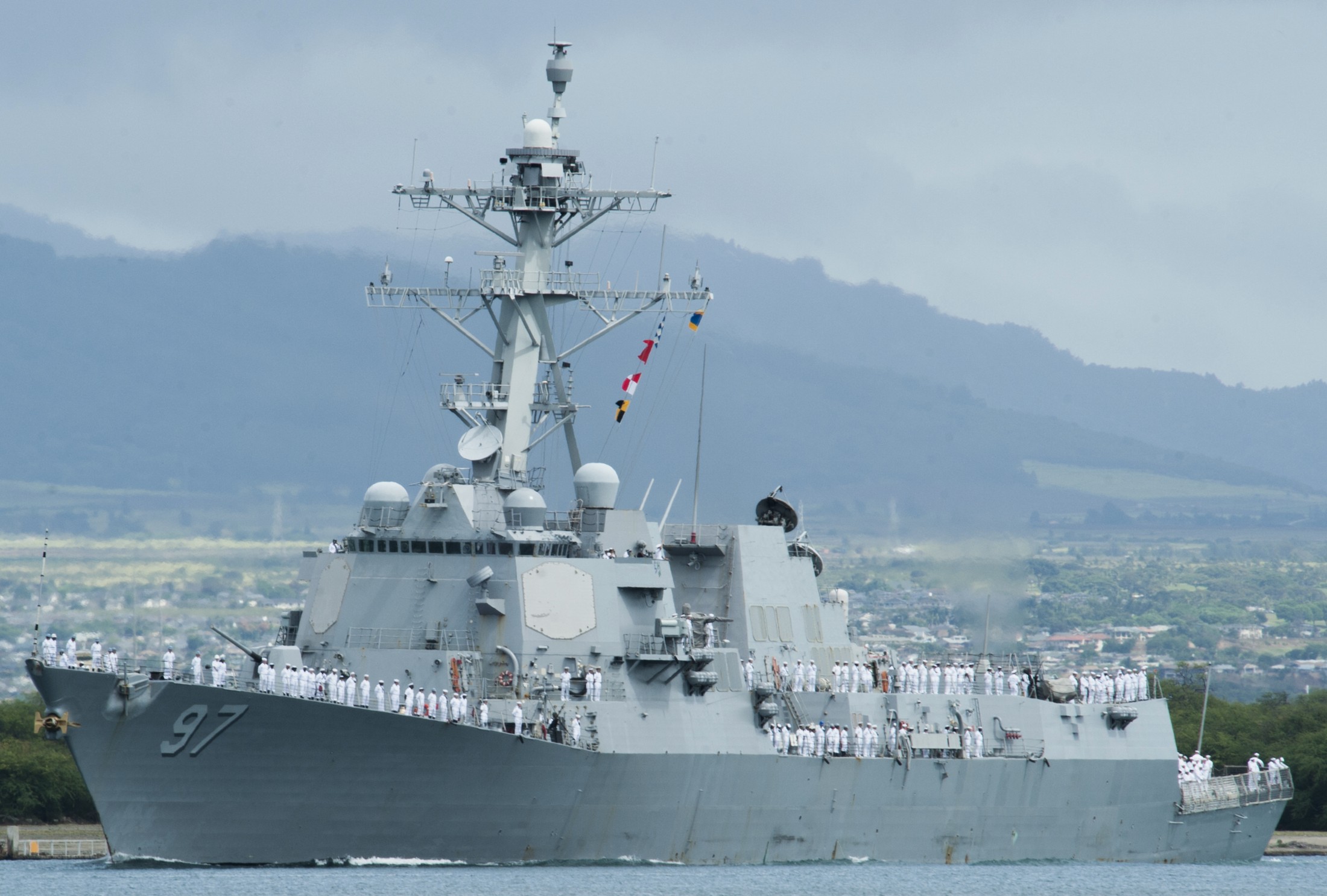 departing Joint Base Pearl Harbor-Hickam, Hawaii for exercise RIMPAC - July 7, 2014 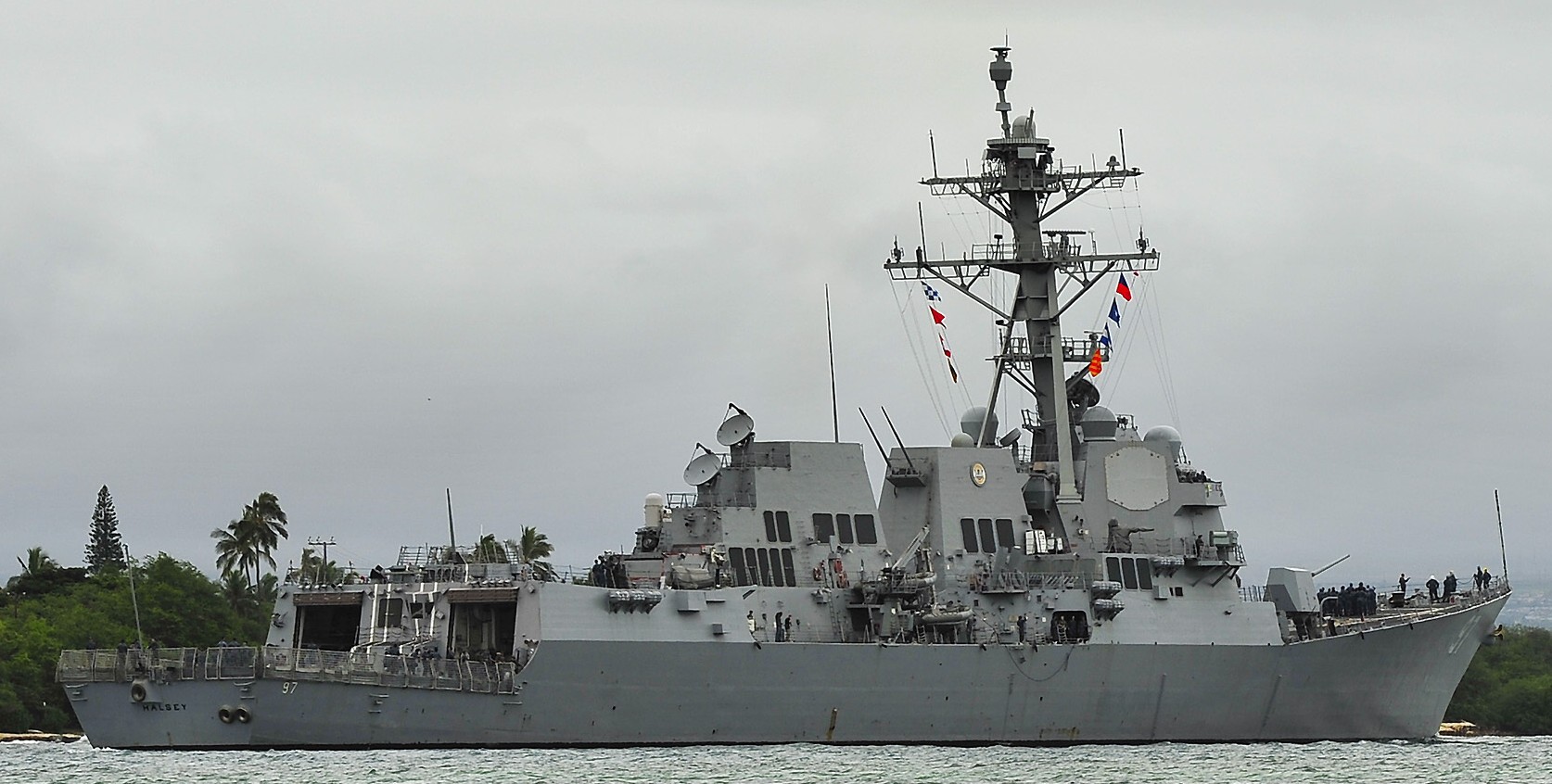 returning to Joint Base Pearl Harbor-Hickam, Hawaii - January 31, 2014 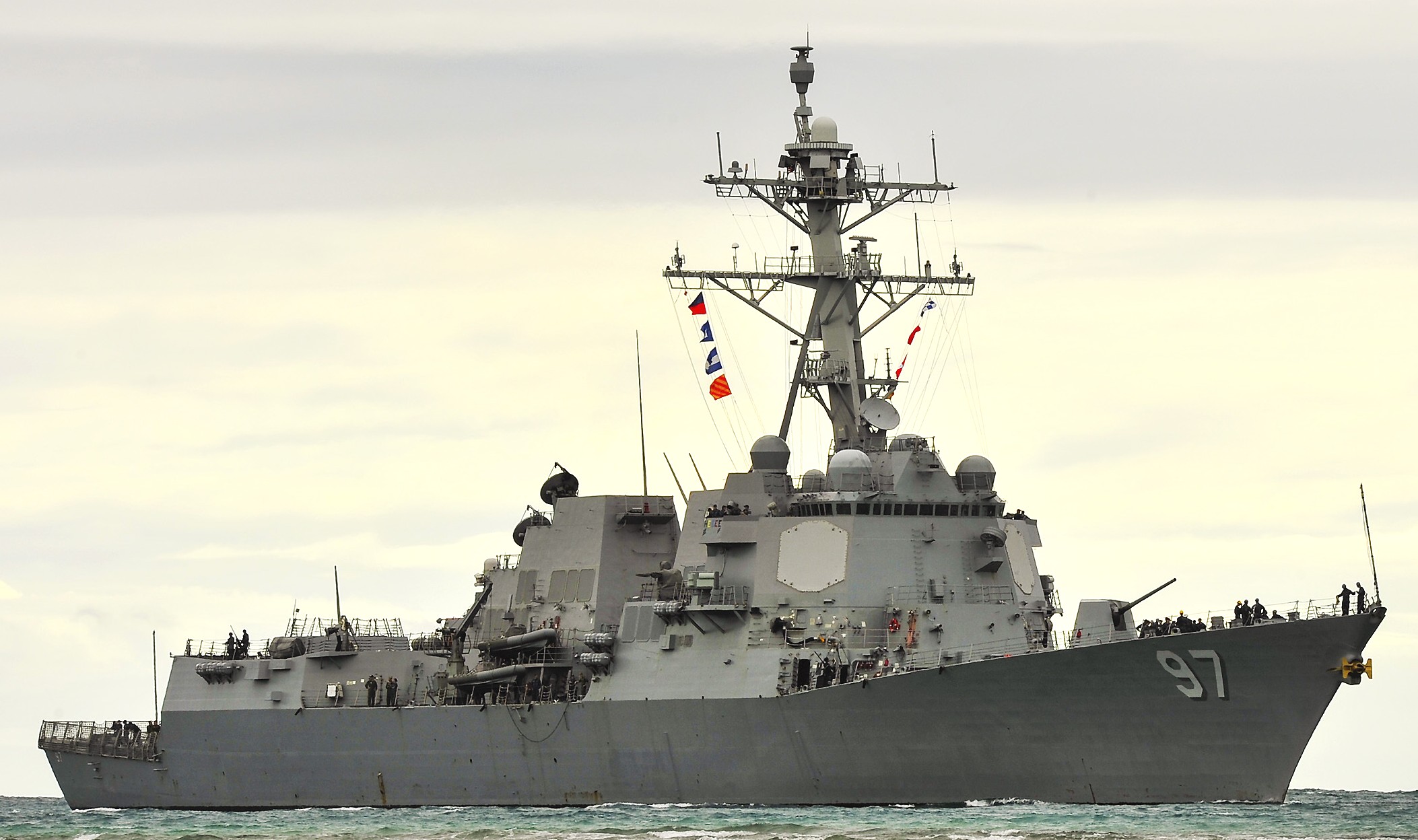 returning to Joint Base Pearl Harbor-Hickam, Hawaii - January 31, 2014 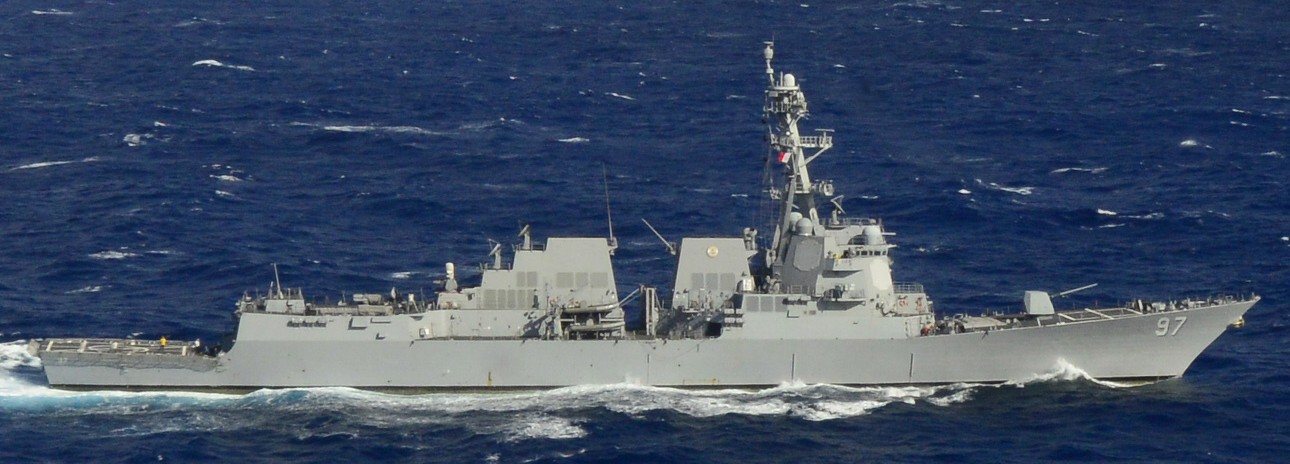 during exercise Koa Kai 14-1 - Pacific Ocean - January 2014 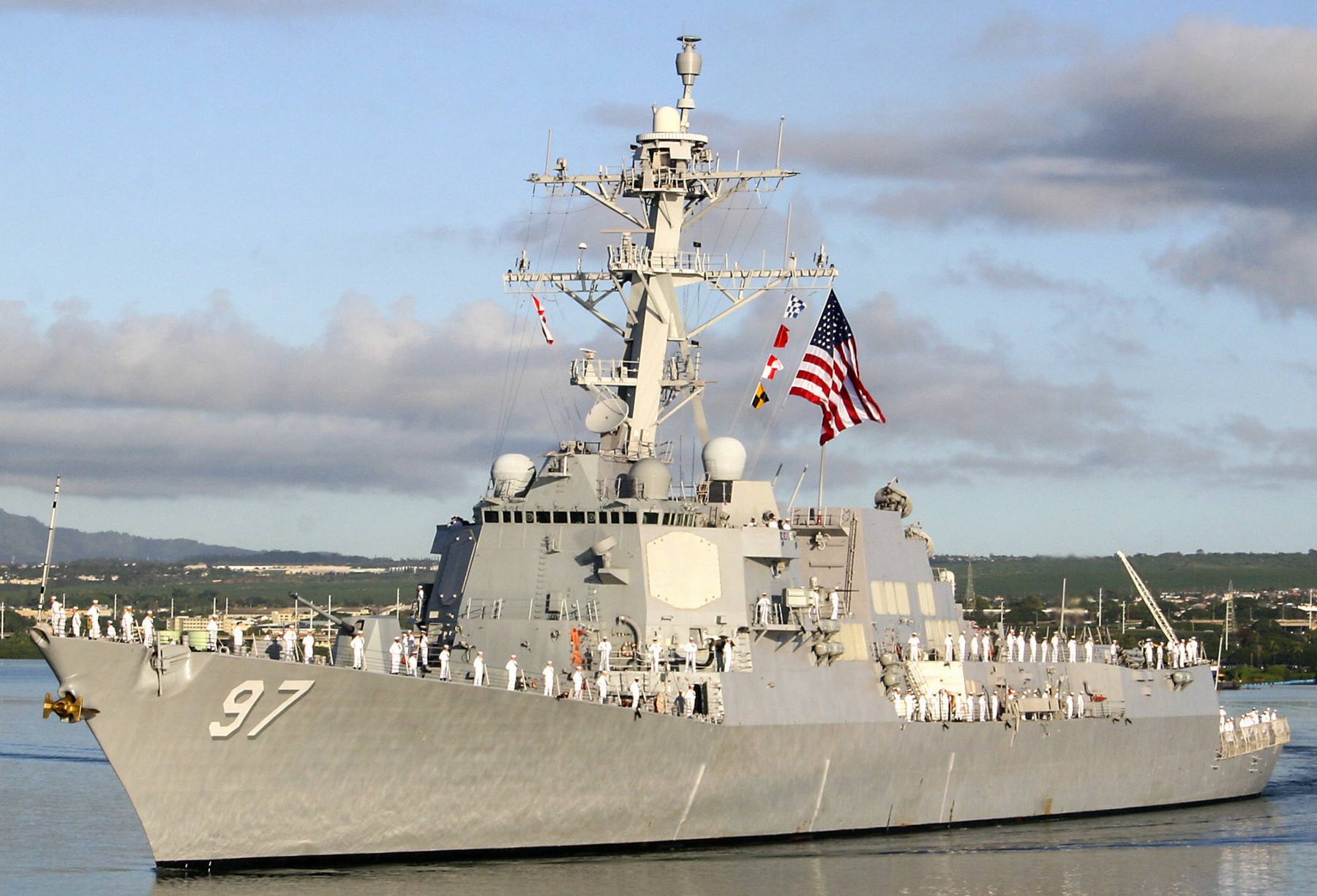 Pearl Harbor Remembrance Day - December 7, 2013 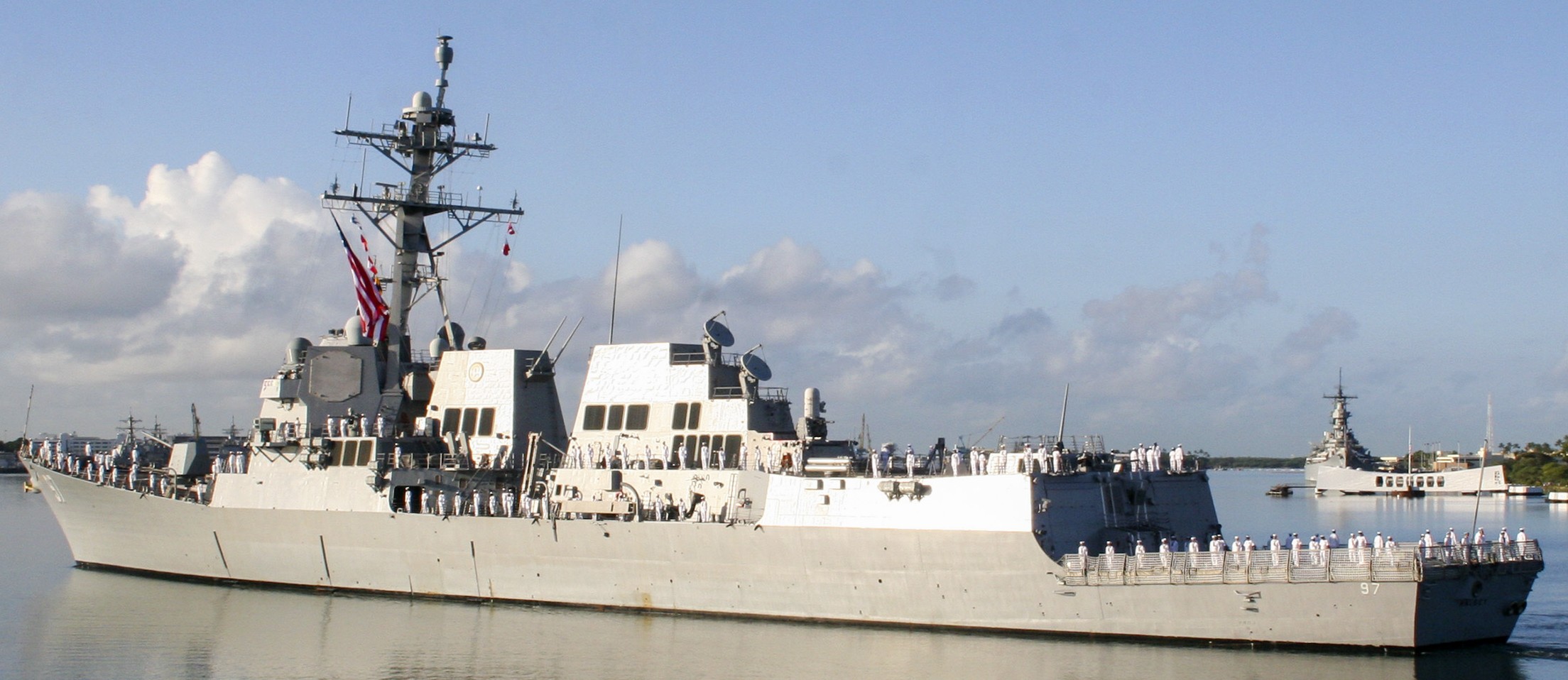 Pearl Harbor Remembrance Day - December 7, 2013 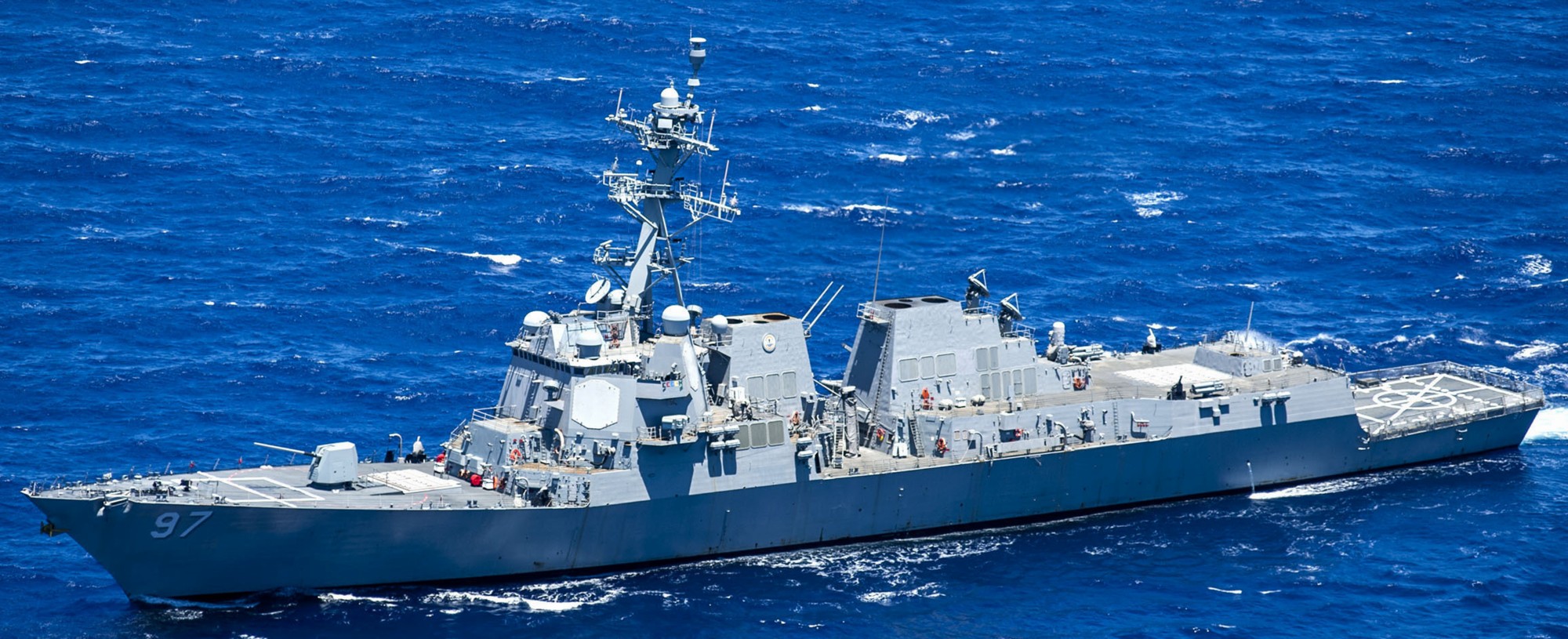 off Hawaii - August 2013 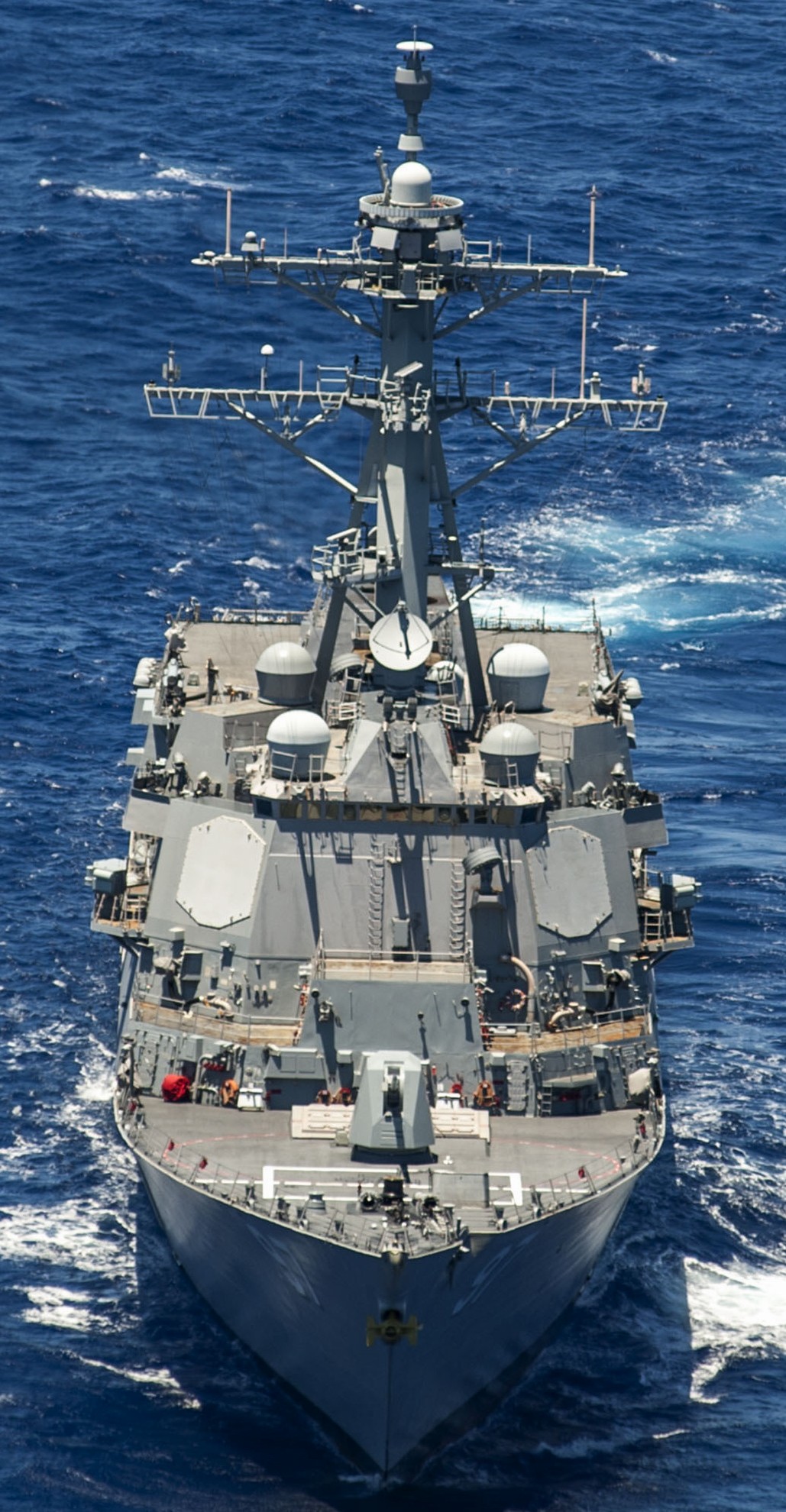 off Hawaii - August 2013 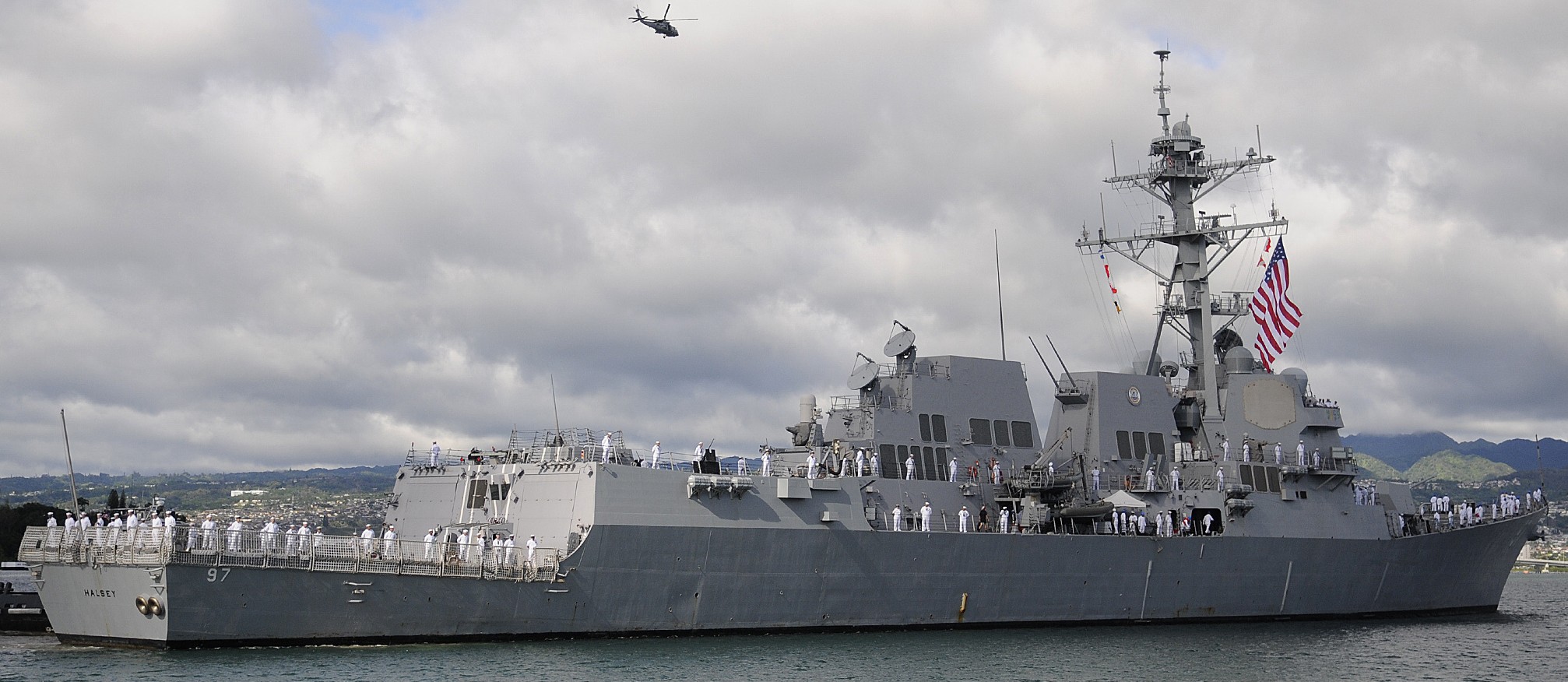 arriving at her new homeport, Joint Base Pearl Harbor-Hickam, Hawaii - February 14, 2013 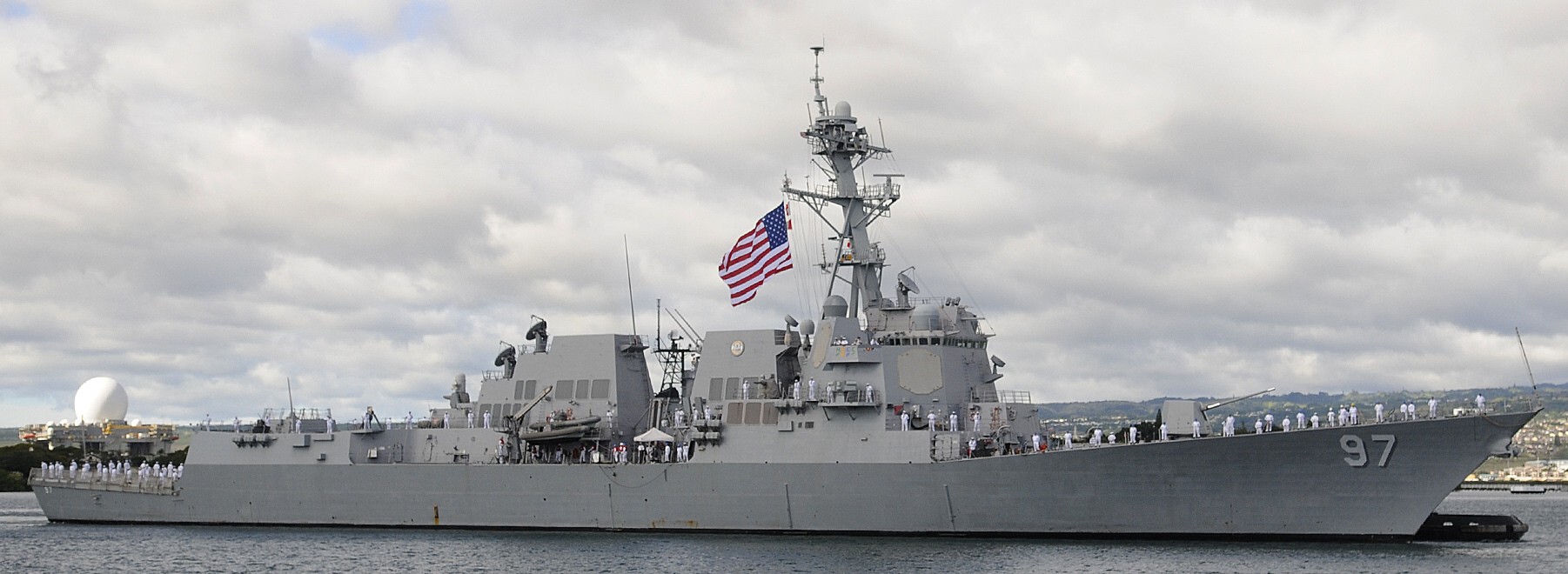 arriving at her new homeport, Joint Base Pearl Harbor-Hickam, Hawaii - February 14, 2013 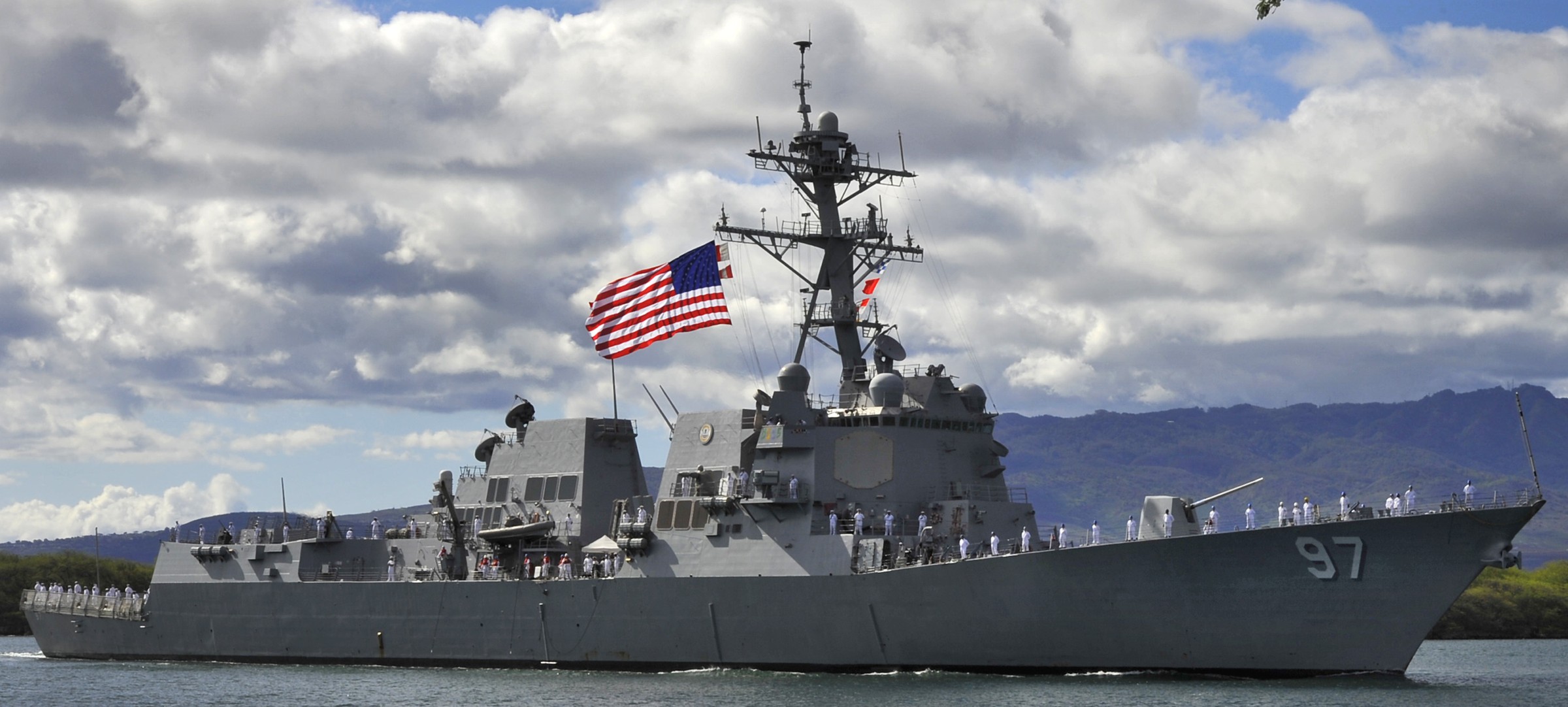 arriving at her new homeport, Joint Base Pearl Harbor-Hickam, Hawaii - February 14, 2013 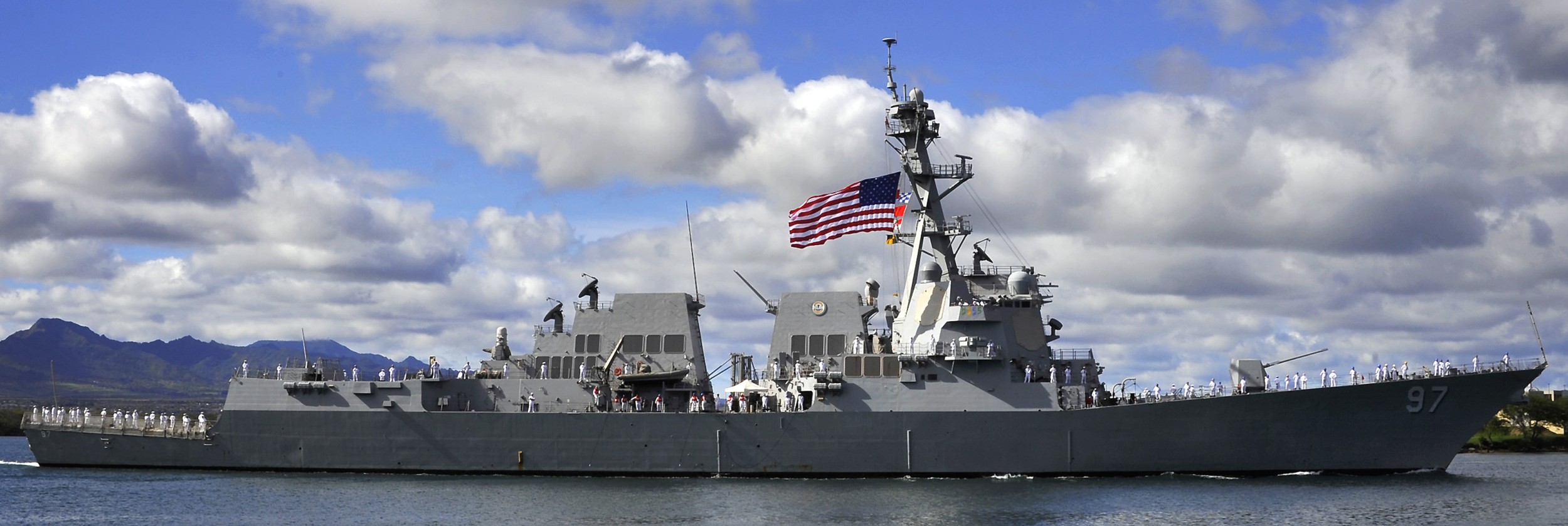 arriving at her new homeport, Joint Base Pearl Harbor-Hickam, Hawaii - February 14, 2013 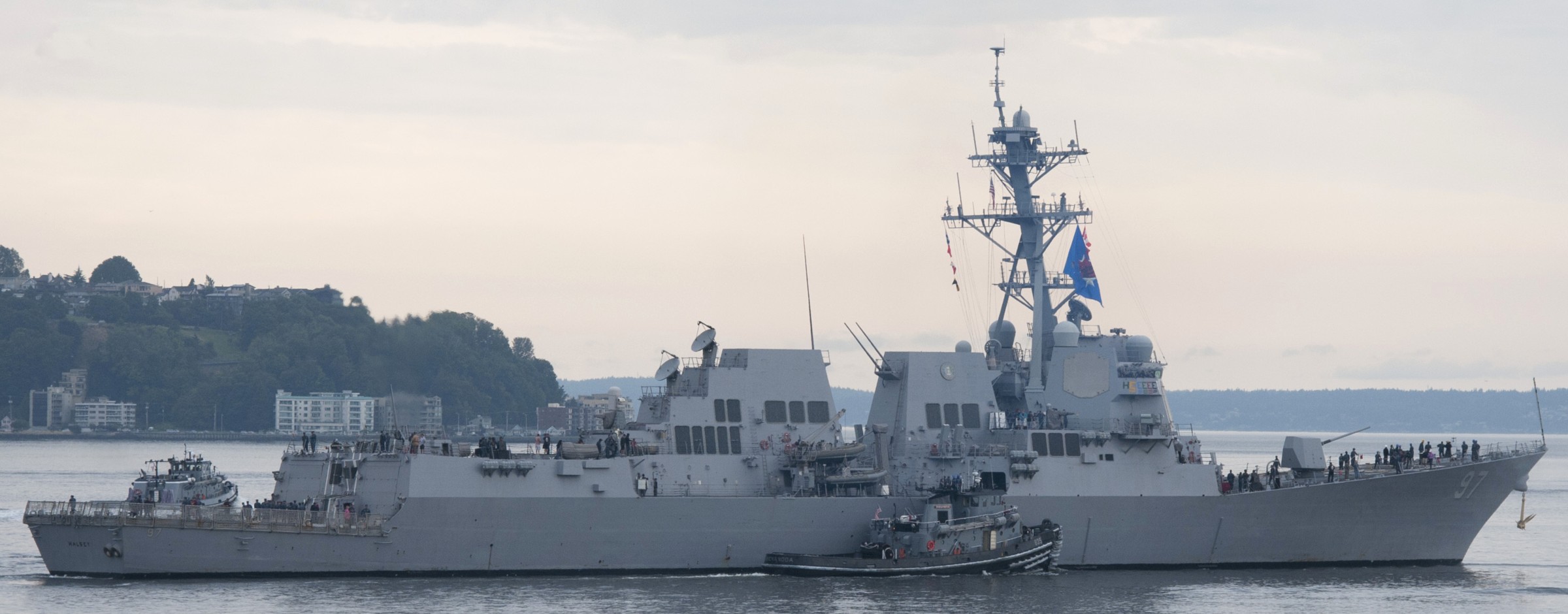 departing Seattle, Washington after Seafair Fleet Week - August 2012 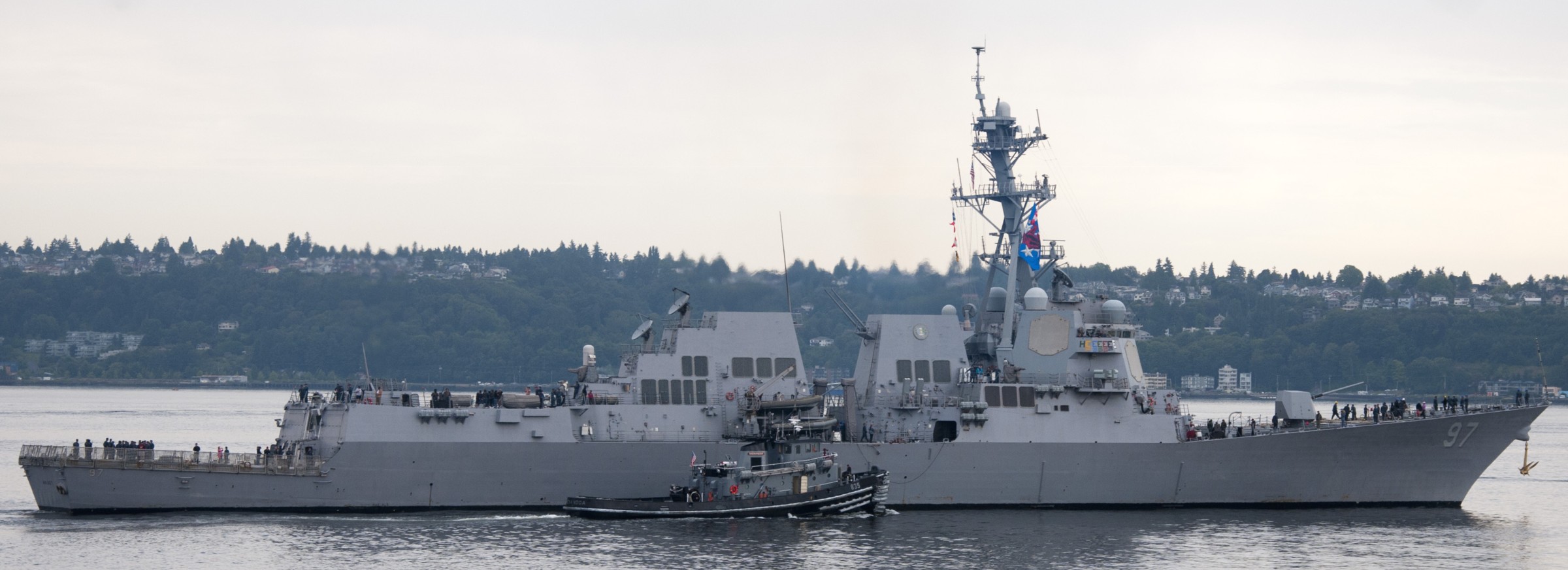 departing Seattle, Washington after Seafair Fleet Week - August 2012 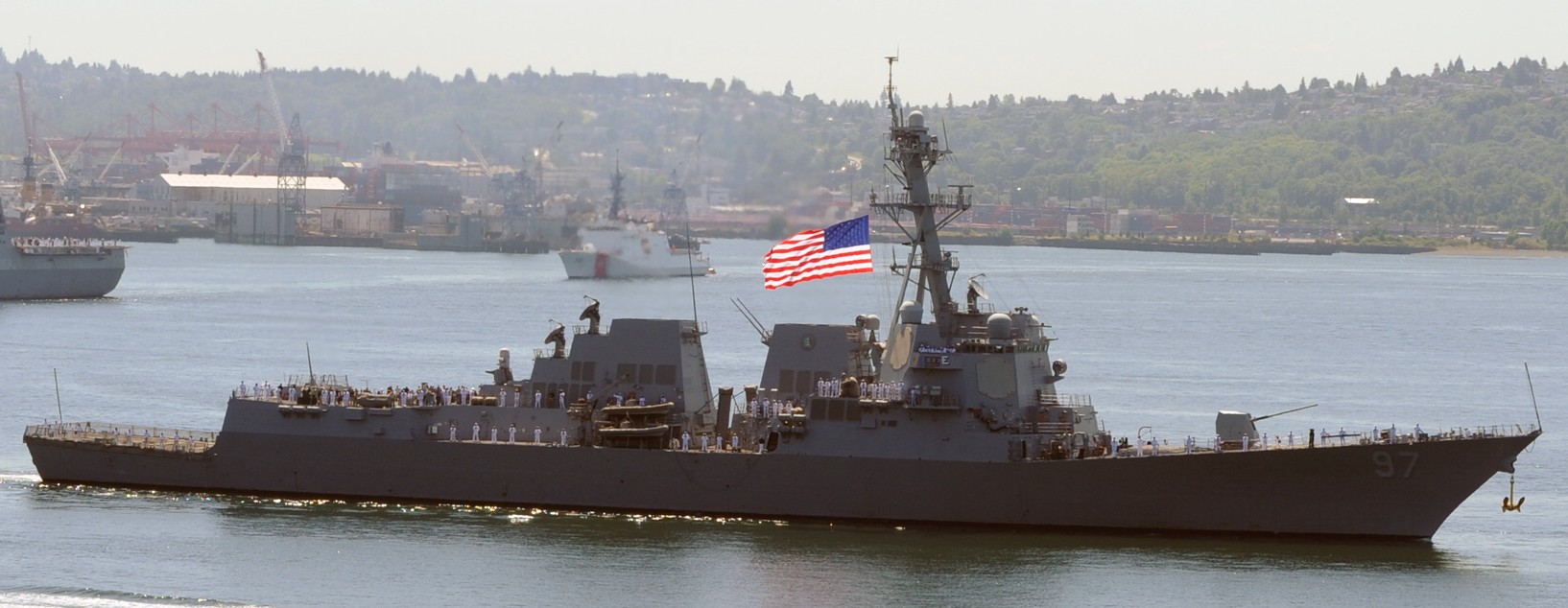 Seattle Seafair Fleet Week - August 2012 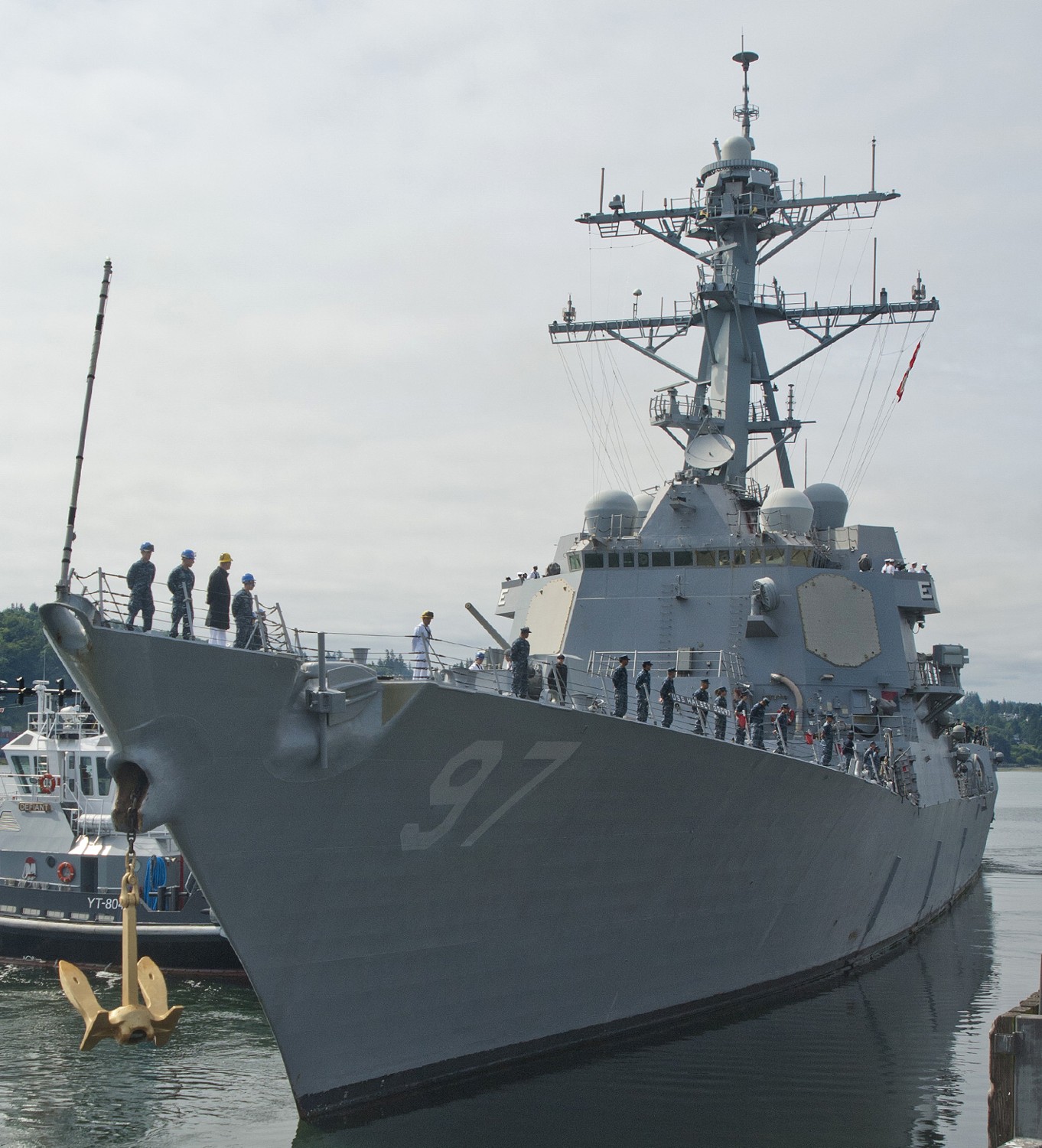 Naval Station Everett, Washington - July 2012 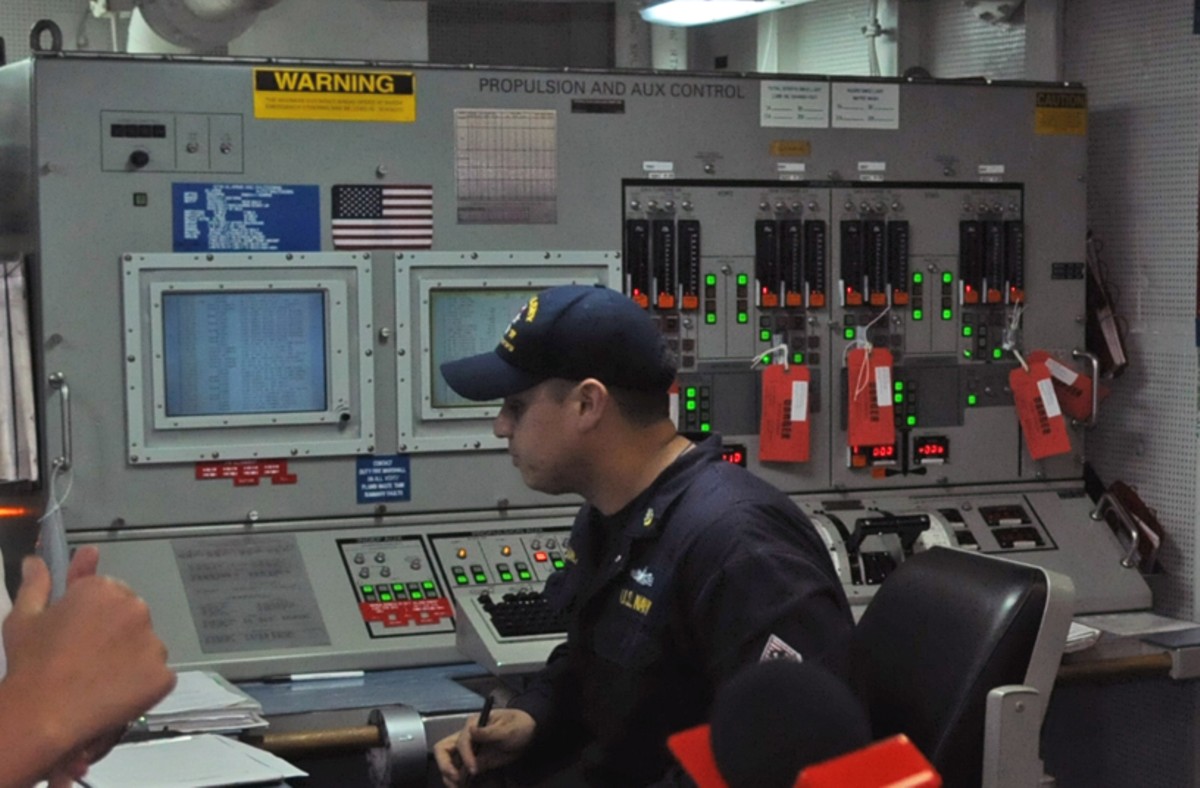 propulsion and auxilary control station - Brisbane, Australia - May 2012 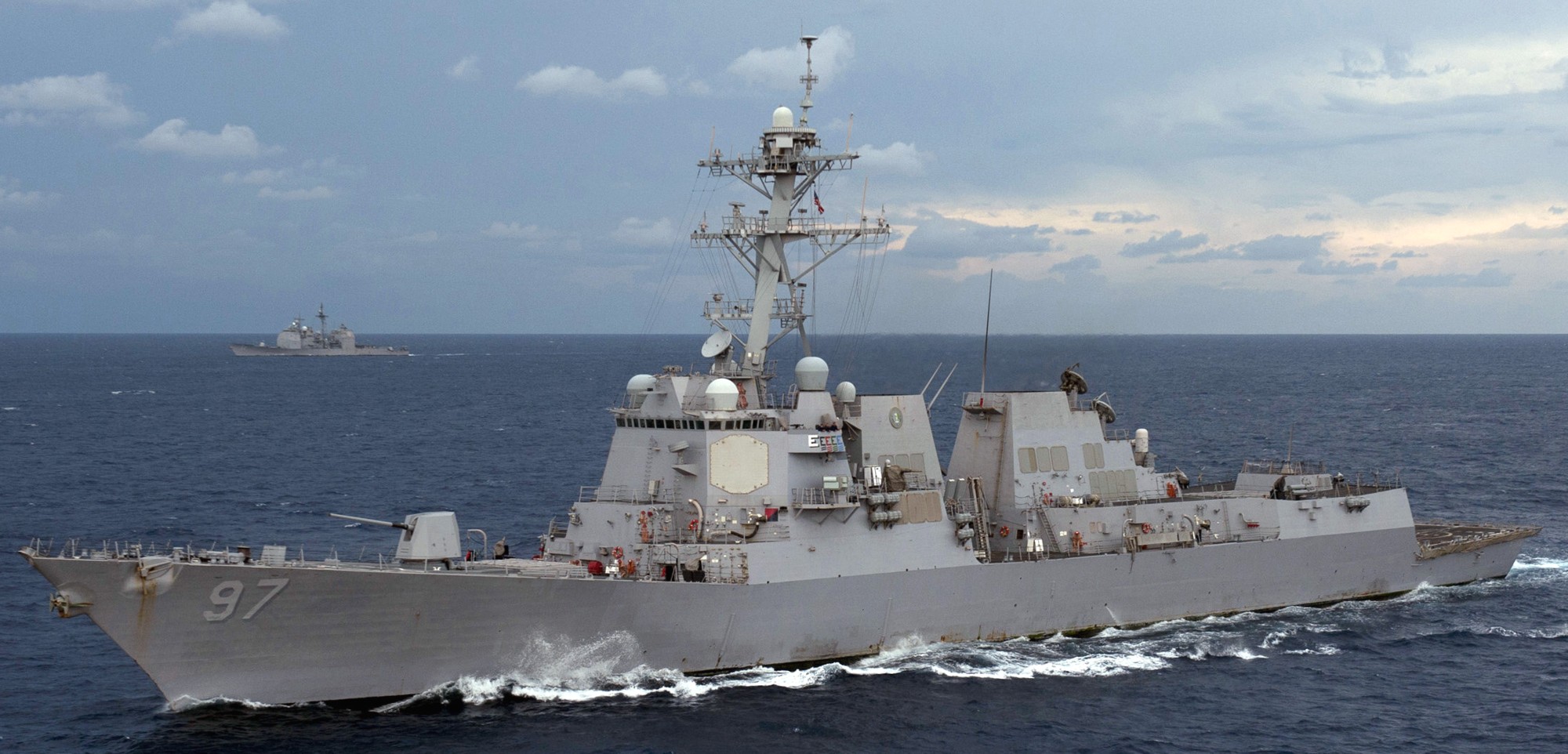 during exercise MALABAR - Bay of Bengal - April 2012 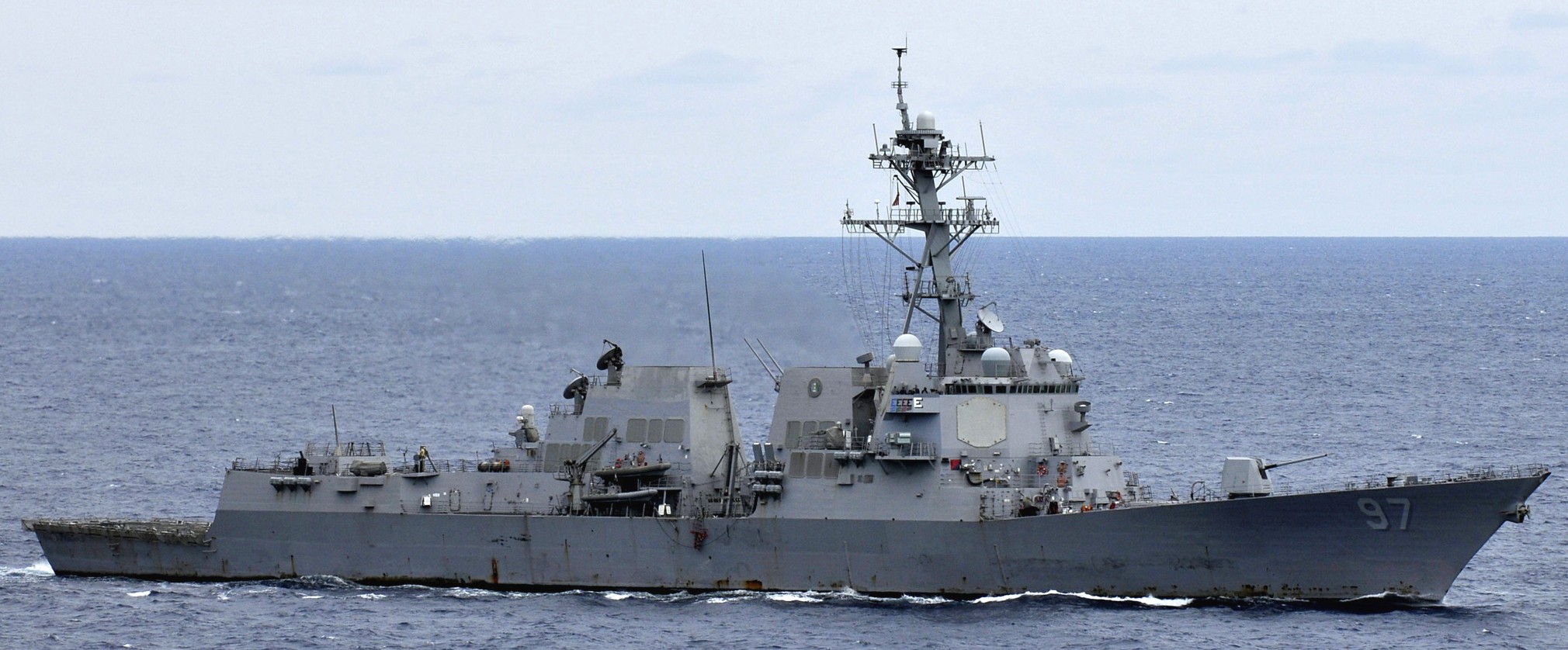 during exercise MALABAR - Bay of Bengal - April 2012  Mk.45 Mod.4 gun fire - Pacific Ocean - December 2011 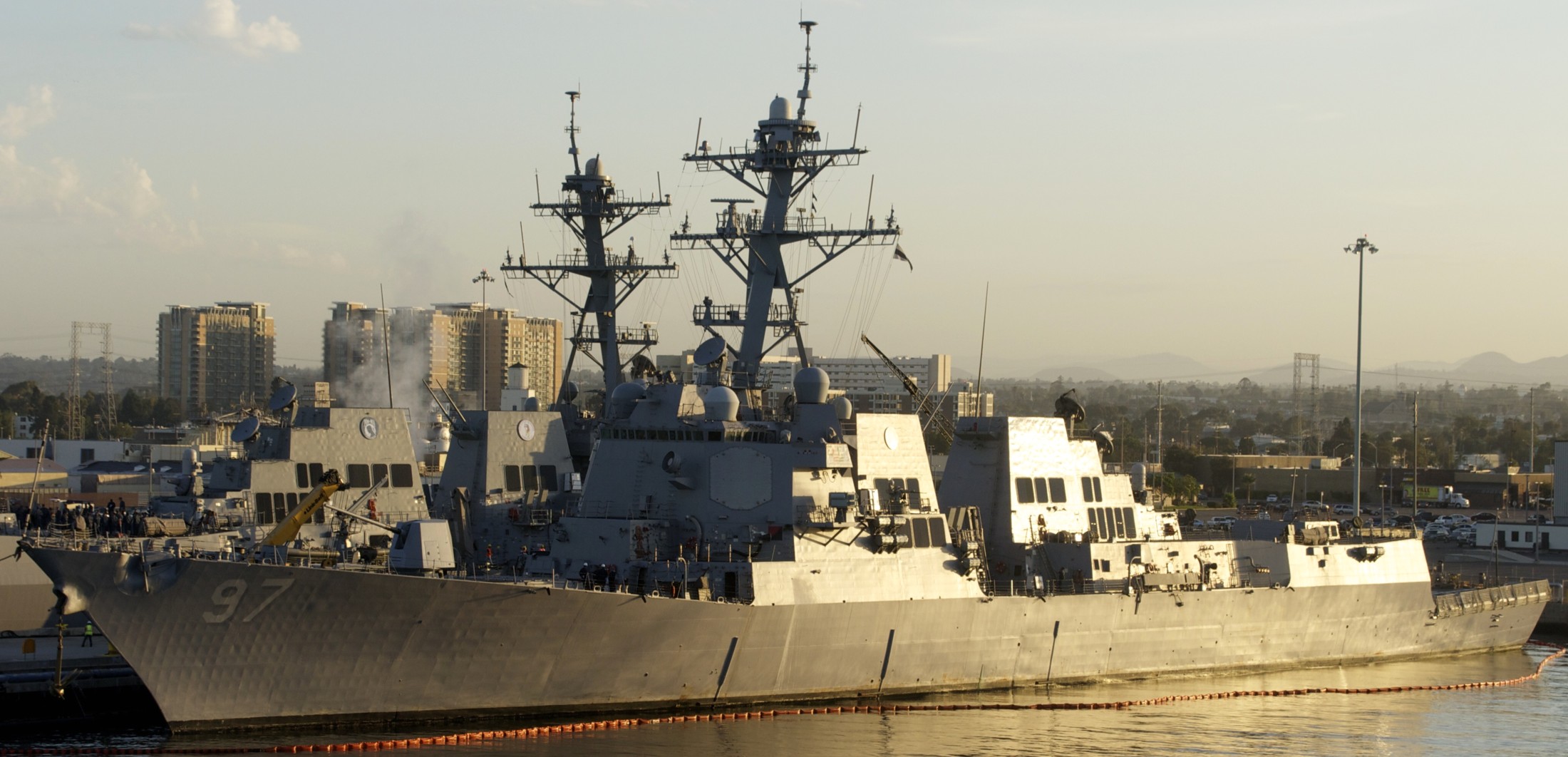 moored at Naval Base San Diego, California - August 2011 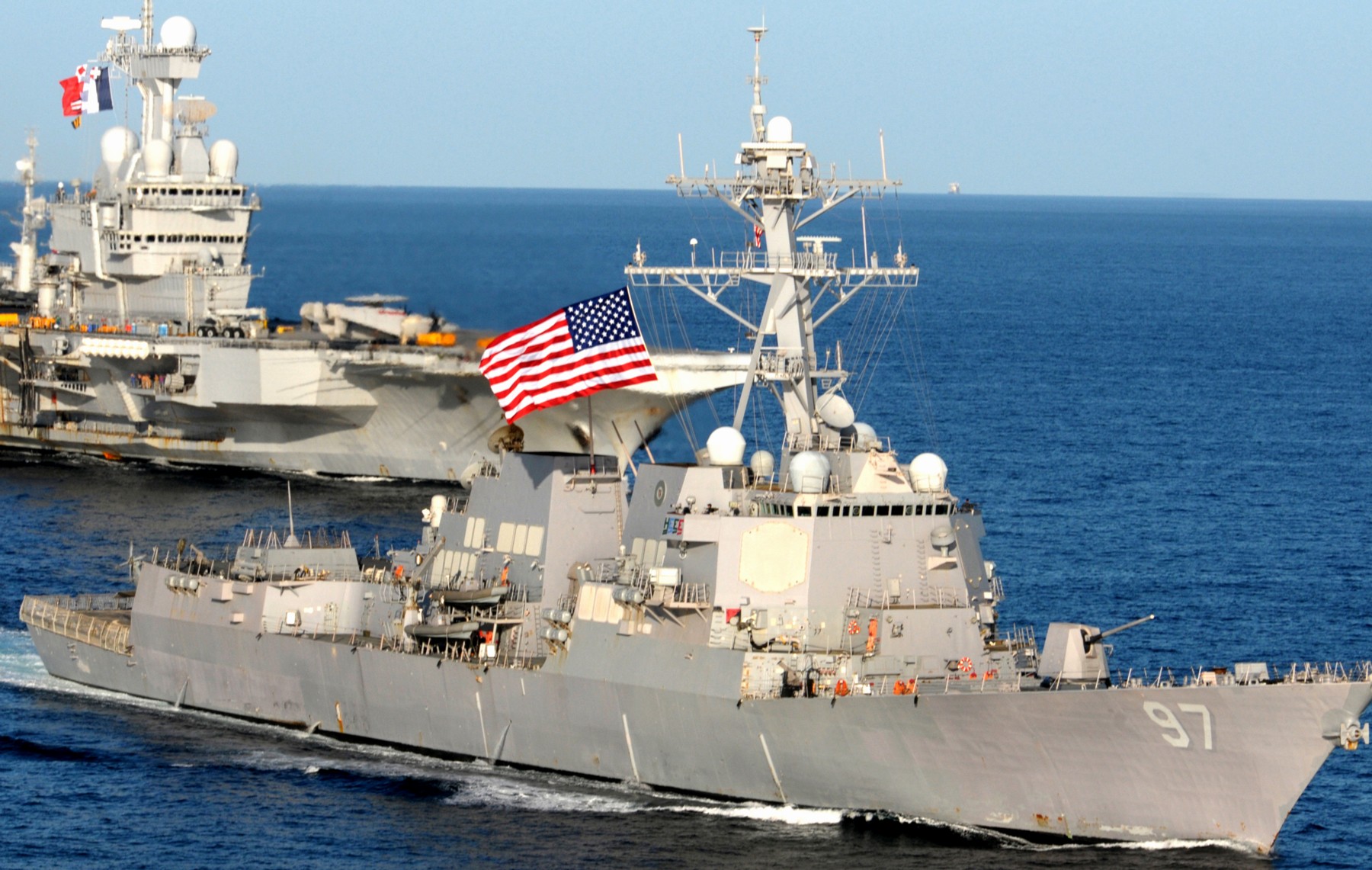 Arabian Sea - December 2010 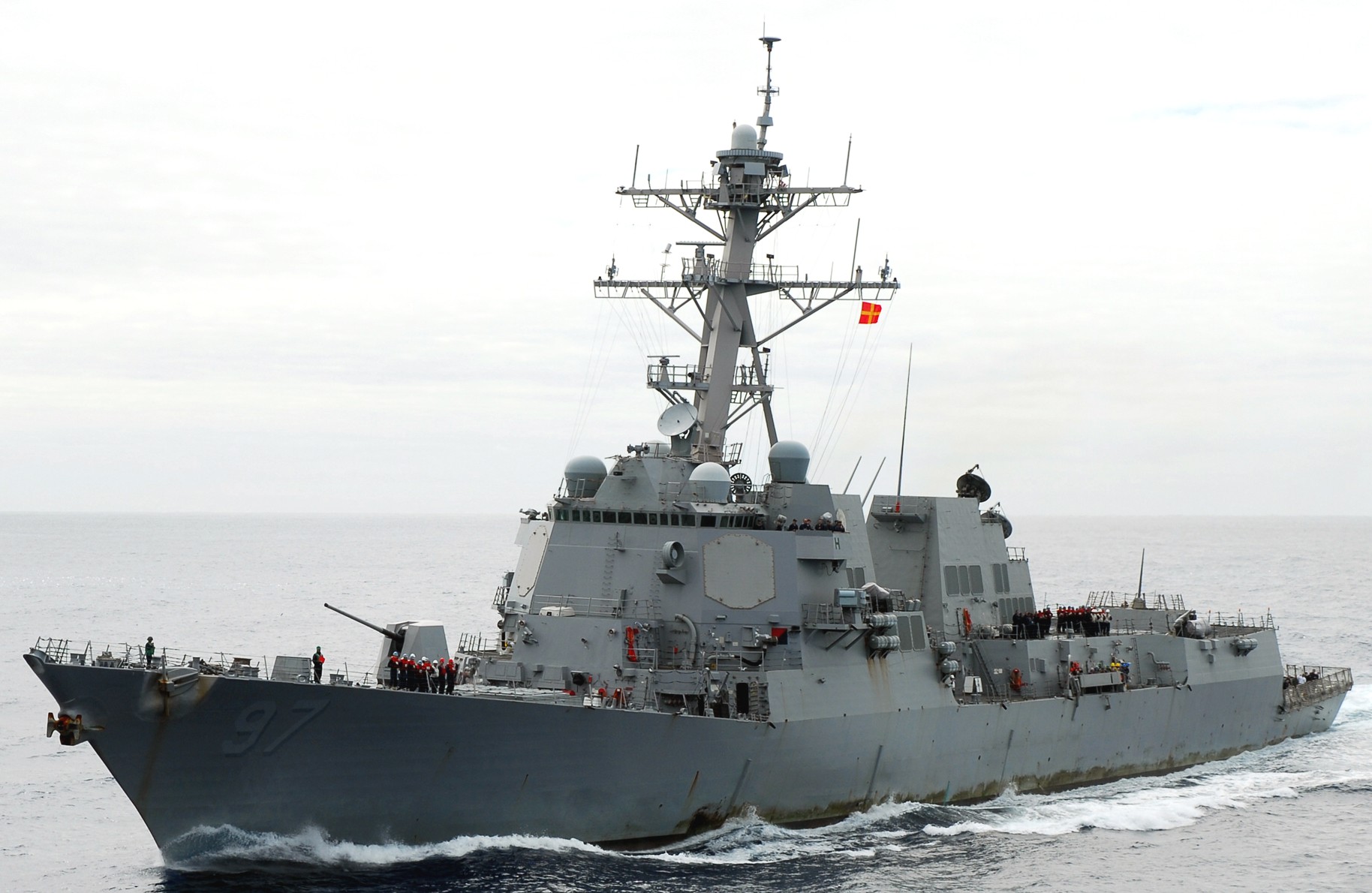 Indian Ocean - October 2008 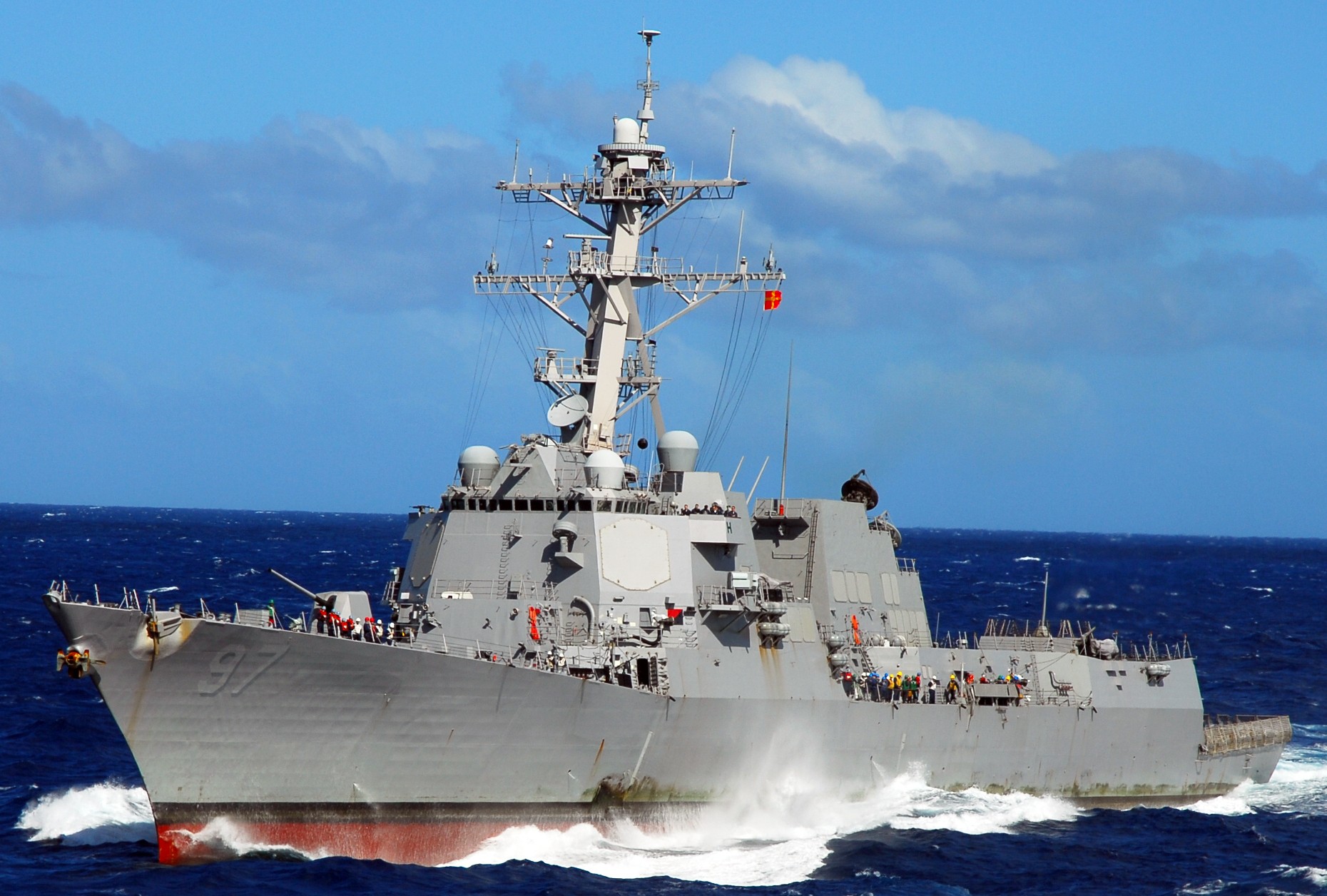 Indian Ocean - September 2008  Indian Ocean - September 2008 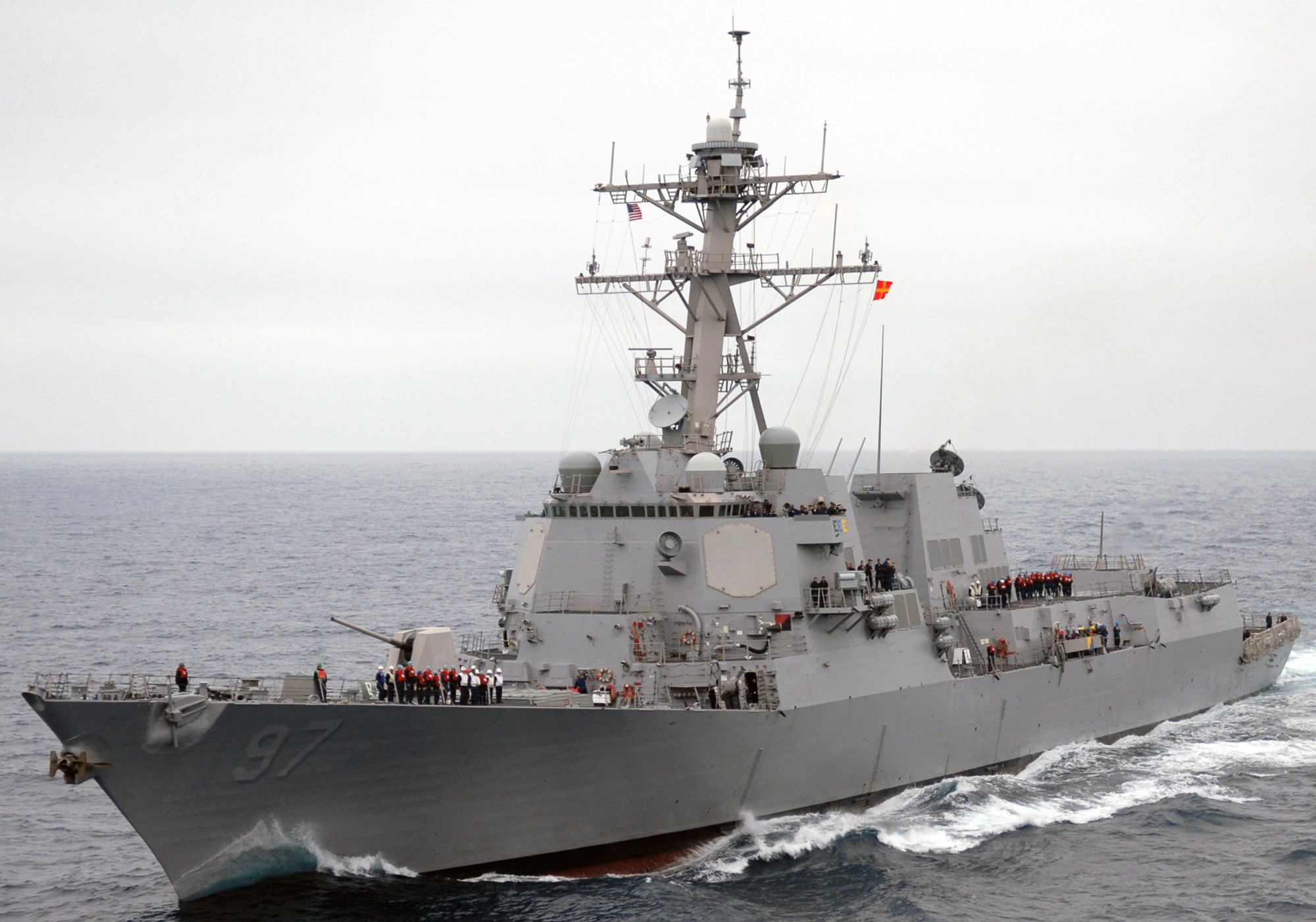 Pacific Ocean - August 2007 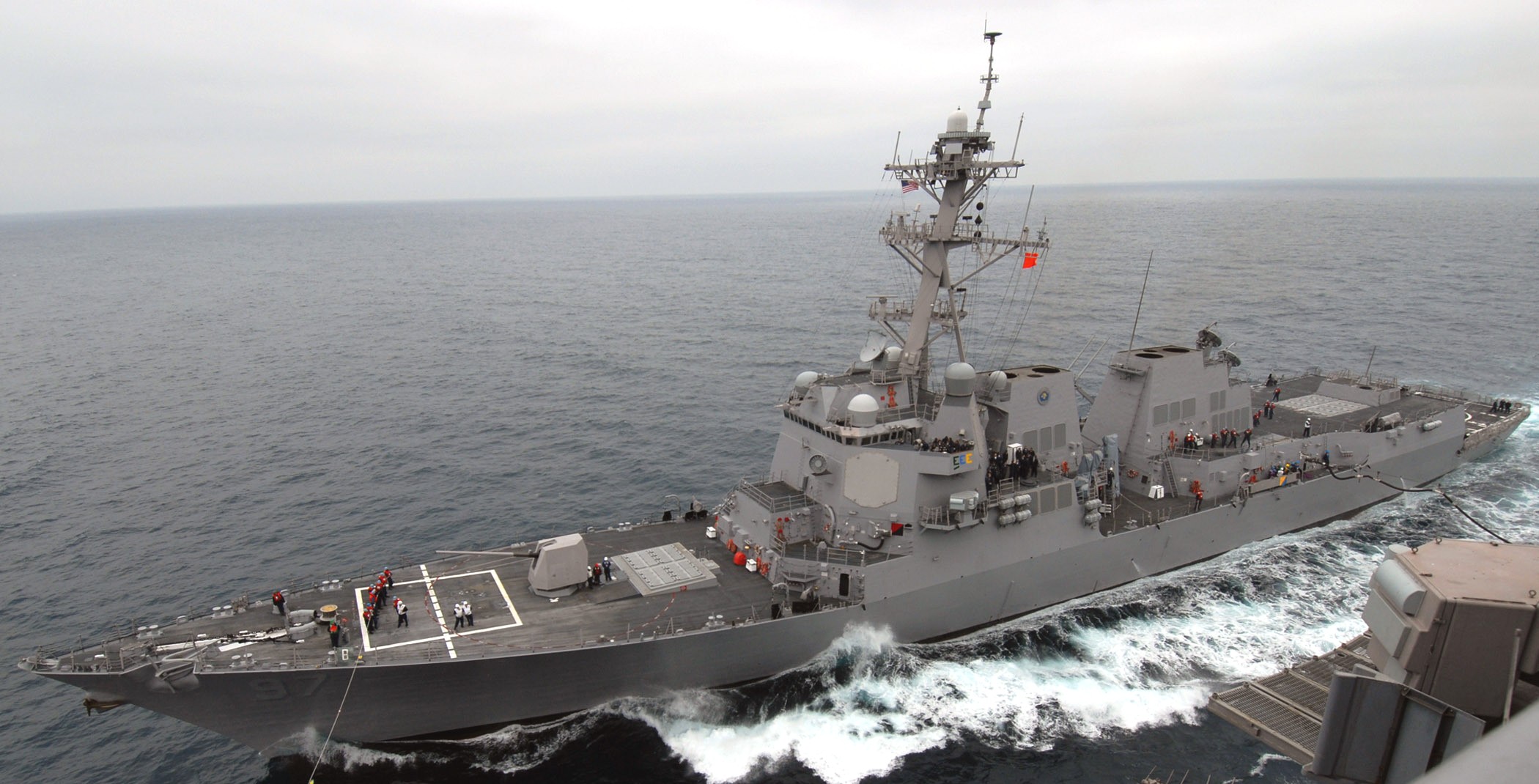 Pacific Ocean - August 2007 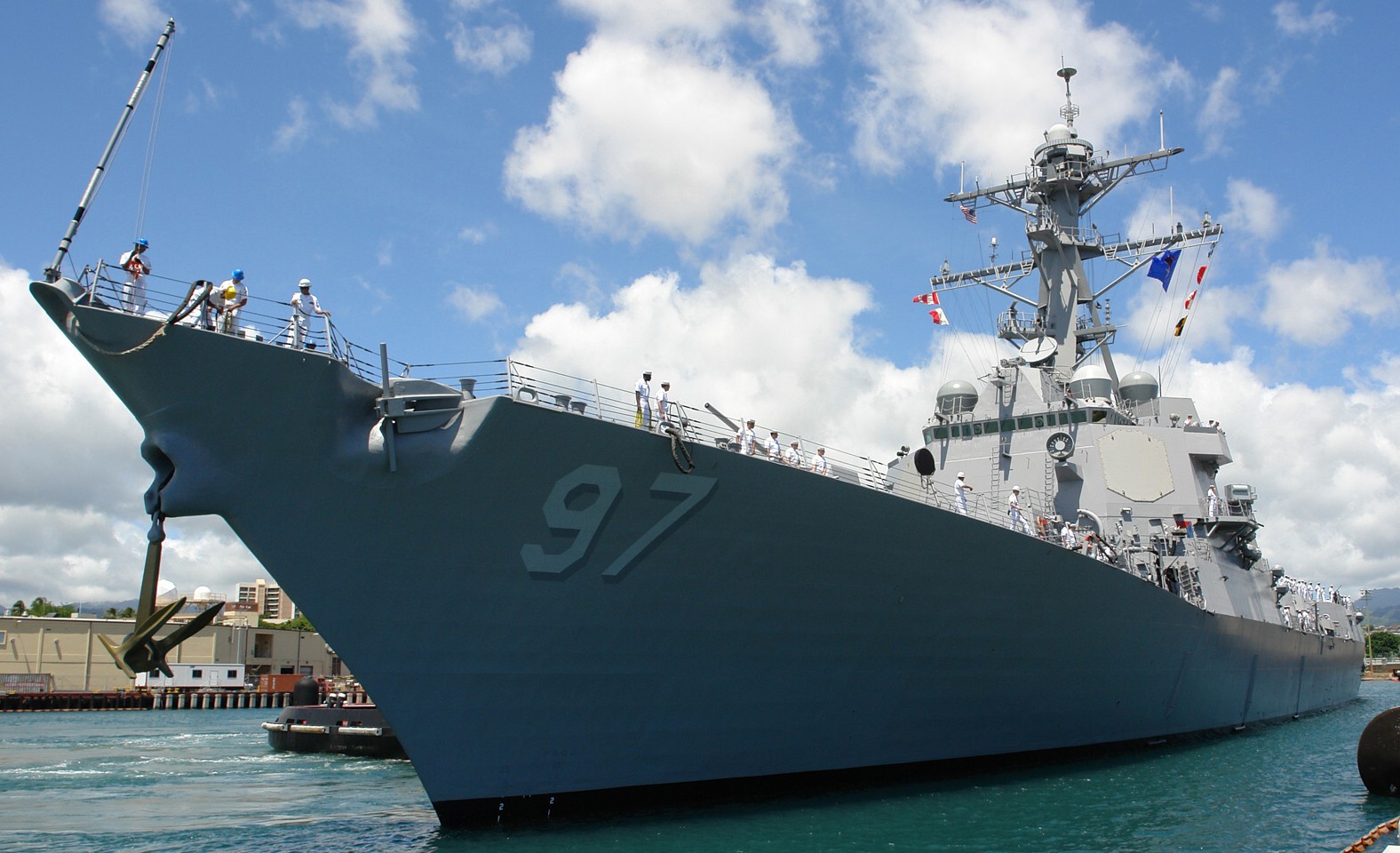 Naval Station Pearl Harbor, Hawaii - August 2006 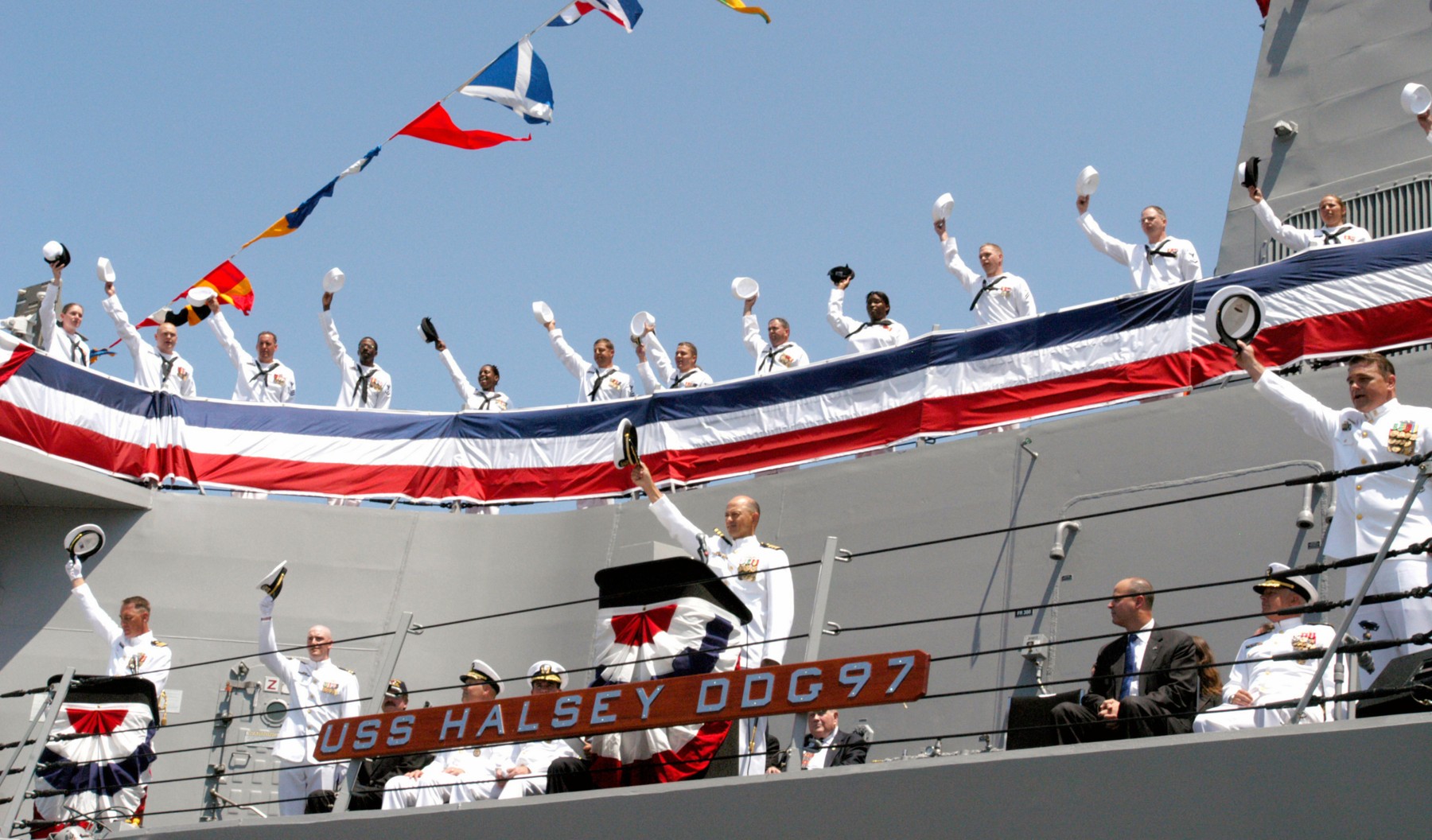 commissioning ceremony at NAS North Island, California - July 30, 2005 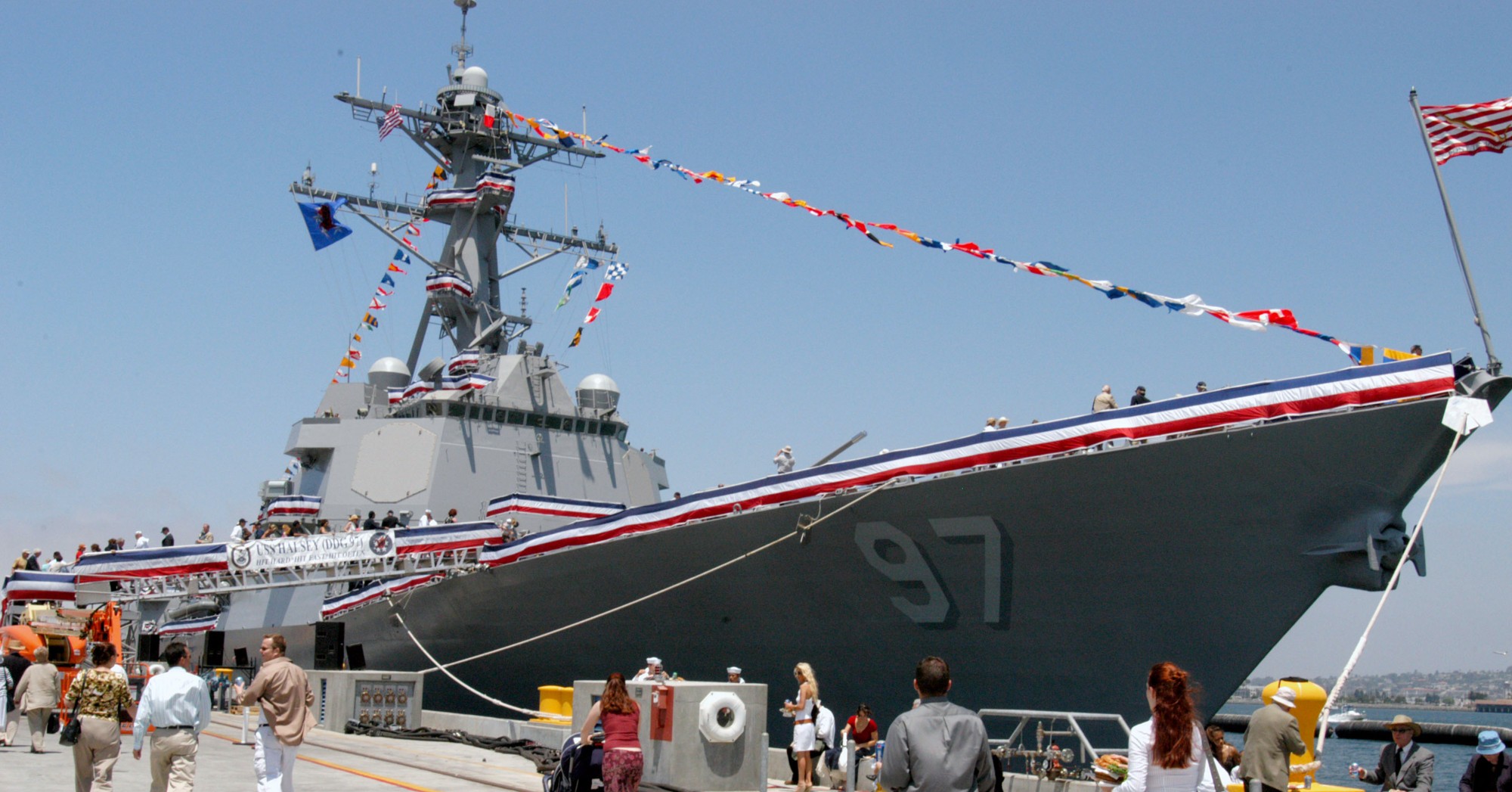 commissioning ceremony at NAS North Island, California - July 30, 2005 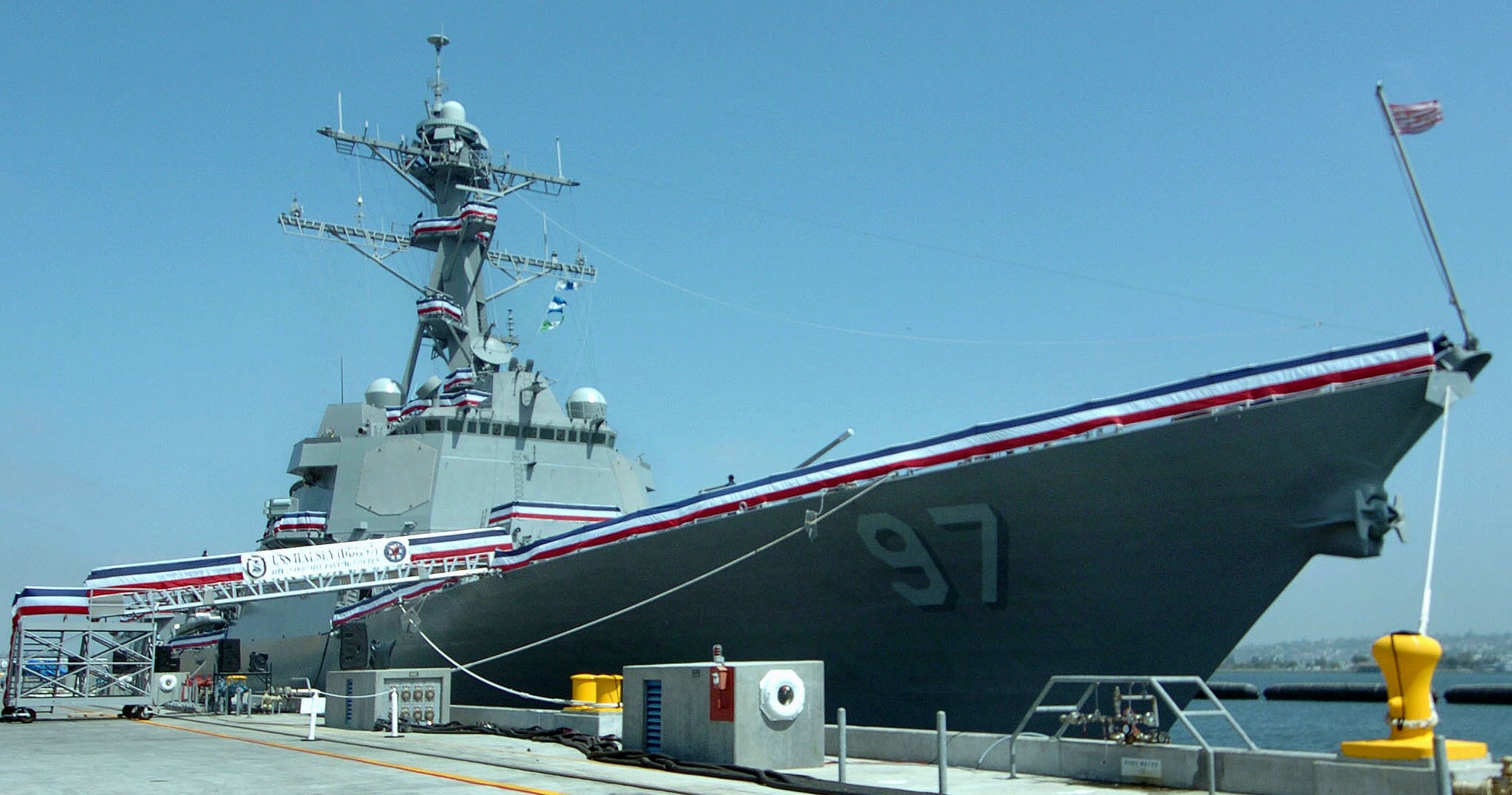 prepared for commissioning at NAS North Island, California - July 29, 2005 |
||
|
USS Halsey (DDG 97): 2002 Construction on HALSEY (DDG 97) began on January 28, 2002 in Pascagoula, Miss. at Northrup Grumman Ship Yard. 2003 DDG 97’s keel was laid on January 17, 2003. 2004 On January 9, 2004, the drydock was ballasted down, and HALSEY floated free. She moved to her post-launch, outfitting-testing berth. On January 14, 2004, HALSEY was christened and construction continued. 2005 Northrup Grumman Ship Systems delivered HALSEY to the Navy on January 31, 2005. On June 1, 2005, Halsey left the builder's yard in Pascagoula, Mississippi, and began her voyage for homeport in San Diego, California. Leaving the shipyard, HALSEY immediately set a new standard for all New Construction ships and Fleet Units. As a New Construction Ship (NEWCON), HALSEY became the first to begin the Fleet Response Training Plan and Unit Level Training while in the builder’s yard. HALSEY completed the first-ever SURFOR directed combined Light Off-Assessment and Initial Assessment, as well as a CART II prior to and at sail away from the Builder’s yard. Also, HALSEY was the first NEWCON to successfully certify every major warfare area and complete Composite Unit Traning with PELELIU ESG in December, 2005, prior to her Post Shakedown Availability Yard period. Halsey certified and became surge- deployable in 145 days, the shortest time in Navy history for an Arleigh Burke-class guided missile destroyer and 65% faster than the four previous DDGs. HALSEY conducted her Underway Demonstration 21 days after leaving the Builder’s yard, and two weeks prior to the ship’s commissioning. Senior Assessor, CAPT William Haflich stated “Overall performance by Engineering Training Team and Watchstanders was extraordinary. Crew move-aboard was 4 months prior to Underway Demonstration; HALSEY beat every other new construction DDG to Engineering Certification by more than a year with superb results.” During the ship's sail around, HALSEY made her first port call in Port Everglades, Florida on June 9, 2005. HALSEY successfully transited the Panama Canal and stopped in Mazatlan, Mexico before continuing to San Diego. Once off the California coast, the HALSEY crew furiously prepared for the ship's commissioning ceremony. Divisions worked around the clock during port calls like Port Hueneme, California, ensuring the ship was prepared for her commissioning ceremony. On July 30, 2005, HALSEY was commissioned into the United States Navy. The ship was honored to have prestigious speakers attend, including the honorable Senator John S. McCain, Jr., of Arizona. As Officer Conducting Exercise, HALSEY expertly orchestrated at-sea events for the most complex Combat Systems Ship Qualification Testing ever completed on the Pacific Missile Test Range. With more than 26 SM-2 missile shoots, HALSEY flawlessly directed USS HOWARD (DDG 83) and Spanish Ship SPS BLAS DE LEZO (F-103) during a two week period on the range. HALSEY expertly completed three important CNO Directed Operational Evaluations, and HALSEY’s participation was critical in assessing Aegis Baseline 7.1 and SPY-1D (v) for Fleet Certification. HALSEY was also the first new construction ship to certify 3M Program during Baseline Assessment, 16 weeks after commissioning. Because fewer than 50% of all ships certify at Baseline Assessment, this was a tremendous accomplishment for HALSEY. In addition to HALSEY’s requirements, she certified all Supply Areas during Supply Management Assessment. HALSEY established the benchmark for all new construction ships, as well as Fleet ships, by simultaneously completing all new construction tasking including CSSQT and Final Contract Trials, while completing all certifications to begin Intermediate and Advanced Training. As a result, she earned three departmental excellence awards and the Golden Anchor Award for retention. The ship adopted its battle cry, “HIT HARD, HIT FAST, HIT OFTEN” from Fleet Admiral William F. Halsey. It is fitting for this ship and her crew who completed all training and certifications as a NEWCON. The ship's crew excelled at meeting all challenges and laid the foundation for a legacy of which Fleet Admiral Halsey would be proud. 2006 In 2006, HALSEY supported the Global War on Terrorism during its maiden deployment. The ship deployed on Aug. 4, 2006, to the Western Pacific, initially conducting Expanded Maritime Interdiction Operations (EMIO) in the Sulu and Celebes Seas in support of the Operation Enduring Freedom in the Phillipines. HALSEY also provided sensor and reconnaissance support for ‘Operation Ultimatum’. Operation Ultimatum was conducted in the Sulu archipelago in August to pursue Abu Sayyaf leadership and Indonesian JI operatives. Upon leaving the Joint Operations Area, HALSEY joined the USS KITTY HAWK Strike group as an essential element in the screen protection of KITTY HAWK (CV 63). Halsey operated with the KITTY HAWK Strike Group and DESTROYER SQUADRON 15 for the remainder of deployment. HALSEY's maiden deployment was challenging and beneficial to the crew. HALSEY returned from deployment on Dec. 24, 2006. 2007 On 5 January, 2007, HALSEY experienced a low level explosion in her Number One Main Reduction Gear (MRG) in Main Engine Room One. The explosion caused catastrophic damage to the MRG, necessitating an emergent seven month maintenance period for extensive repair work. HALSEY’s Commanding Officer, CDR John Pinckney, relinquished command on 1 Feb and on 19 Feb, CDR Paul J. Schlise assumed command. HALSEY’s Executive Officer, LCDR Chris Monroe, served as ActingCommand Officer during the interim period. On 19 March 2007, HALSEY entered drydock at the BAE shipyard for repairs, where she remained until 4 May. During that time, the damaged MRG was removed through a hole cut into the starboard side of the ship, and a replacement MRG was installed. Following HALSEY’s undocking from the shipyard, she returned to Naval Base San Diego for a two month period of pierside alignment of the newly-installed Main Reduction Gear. After passing Light-off Assessment from 23 to 27 July, 2008, USS HALSEY successfully completed Sea Trials in the Southern California Operations Area (SOCAL OpArea), marking the end of the MRG repair period and HALSEY’s return to active employment. USS HALSEY entered the Basic Phase of the inter-deployment training cycle eager to make up for lost time. During the late summer months, many days were spent at sea conducting Tailored Ship’s Training Availabilities (TSTA), designed to improve watchstander and team proficiency in all warfare areas. The hard work ultimately paid off when HALSEY passed her Final Evaluation Period (FEP) with flying colors, marking the end of the Basic Phase of the training cycle. As 2007 came drew to a close, HALSEY spent a week at sea for Week One Workups, training for the first time with HSL 45 detachment with which HALSEY will deploy in 2008. 2008 As 2008 began, HALSEY concluded a CNO’s Maintenance Availability. In the beginning of February, HALSEY crew enjoyed a port visit to Mazatlan, Mexico. While enroute to Mazatlan, HALSEY rescued a Mexican fisherman lost at sea. HALSEY worked with Mexican Coast Guard Cutter SANTOS DEGOLLADO to continue searching for lost fishermen, but unfortunately found none. Several HALSEY Sailors were commended for excellent performance, including those bilingual Sailors and the medical team. HALSEY safely delivered the Mexican fisherman to the SANTOS DEGOLLADO before continuing her transit. In February, HALSEY began an intensive pre-deployment work up cycle. She spent 3 weeks out to sea with the PELELIU Expeditionary Strike Group (ESG) for ESGINT and COMPTUEX. The PELELIU ESG was composed of USS PELELIU (LHA 5), USS PEARL HARBOR (LSD 52), USS DUBUQUE (LPD 8), USS CAPE SAINT GEORGE (CG 71), and USS BENFOLD (DDG 65). All six ships participated in numerous exercises including training for small boat threats, anti-submarine warfare tactics, air defense coordination, and Maritime Interdiction Operations (MIO). Following the PELESG COMPTUEX, HALSEY joined the USS RONALD REAGAN Carrier Strike Group’s (RRSG) Joint Forces Training Exercise. HALSEY acted as opposition forces (OPFOR) for RRSG exercises. In late April, HALSEY spent two weeks in port for another CNO Maintenance Availability and for pre-deployment leave. On May 4, 2008, HALSEY departed San Diego’s Naval Base for her second deployment. A couple of weeks later, HALSEY pulled into Pearl Harbor, HI, for refueling, and then participated in an Undersea Warfare Exercise (USWEX) where PELESG trained to combat the submarine threat. At the conclusion of USWEX, PELESG transited through Seventh Fleet to her next port call in Singapore. Following a day-long stop in Singapore and a transit through the Straits of Malacca, HALSEY Sailors enjoyed four days in Penang, Malaysia. Members of HALSEY crew took time to visit critically ill children at a Malaysian Hospital and to distribute Project Handclasp toys while in port. HALSEY continued west after Malaysia and spent 65 days at sea conducting Maritime Security Operations in the Fifth Fleet Area of Operations. Victoria, Seychelles, was the next respite that the HALSEY crew enjoyed. While in Victoria, Sailors again enjoyed the beaches, but they also participated in a joint military training venture with the Seychellian Coast Guard. A contingent of almost twenty Sailors restored a chapel for St. Elizabeth Convent and Orphanage then shared lunch and play time with the children. HALSEY partnered with Project Handclasp again to distribute rollerblades, soccer balls, hygiene consumables, and baby toys. On August 17, 2008, immediately following the Seychelles port visit, Commander Paul J. Schlise relinquished command to Commander Robert E. Beauchamp. Commander Beauchamp led the crew onward to finish their Western Pacific Deployment (WESTPAC) strongly. Following her maritime security operations in the Fifth Fleet Area of Responsibility, HALSEY turned east to rejoin the USS PELELIU (LHA 5) and make a brief stop for fuel in Perth, Australia. Transiting the rough waters of southern Australia, HALSEY bravely sailed on to Sydney, Australia, where Sailors enjoyed five days of liberty and participated in two community relations events. A contingent of Sailors visited a local children’s hospital while another group helped to restore an ambulance dispatching facility. Following the visit to Sydney, HALSEY again sailed east to make a final port visit to Pearl Harbor, HI. In Pearl Harbor, HALSEY onloaded family members and friends to participate in Tiger Cruise. HALSEY Tigers participated in Personnel Qualification Standard completion, shared meals with the crew, and stood watches to get an idea of what a Sailor’s life is like. The Tigers and crewmembers happily arrived in San Diego, CA, on November 3rd to find hundreds of happy faces on the pier. After a six month deployment, the crew enjoyed almost a month of post-deployment stand-down. Following the stand-down period, HALSEY entered a two-week long maintenance availability in order to repair some of the wear and tear sustained on deployment. After the availability, Sailors again had a chance take leave and spend the holidays with family and friends. 2009 As 2009 began, HALSEY transited to Seal Beach to offload weapons from her 2008 deployment. Following the weapons offload, HALSEY and her crew entered BAE Shipyards for a Selected Restricted Availability (SRA09). During the two and a half month yard period, HALSEY received many equipment upgrades. Specifically, the Phalanx Close-in Weapons System (CIWS) Block IB gun weapon system was installed on the aft Vertical Launching System (VLS) deck. Multiple combat systems were upgraded including the AEGIS Combat System baseline change to 7.1.2, the Tactical Tomahawk Weapons Control System, and the SLQ-32 (V)2 Electronic Warfare suite. Following the Availability period, HALSEY entered the training cycle in order to prepare for multiple certifications to include but not limited to Air Warfare, Surface Warfare, Subsurface Warfare, Electronic Warfare, Intelligence Warfare, Seamanship, Navigation, Damage Control, and Engineering. HALSEY performed extremely well during the Unit Level Training and Readiness Assessments (ULTRA) in June and received many of her certifications. Throughout the rest of the summer, the crew trained to attain the remaining certifications to include Anti-Terrorism Force Protection certification and Cryptologic Warfare certification. During August, the ship had the MK 38 25mm Machine Gun Weapon System installed on both the port and starboard sides enabling gyro-stabilized targeting of small craft. In September, HALSEY was the first ship have her Maintenance, Material, and Management (3M) program assessed under a revised maintenance instruction, COMNAVSURFORINST 4790.1E. The ship earned an impressive 90.5% at the certification. Later in the month, the Medical team earned a 100% in the Medical Readiness Inspection. Following a long summer of inspections, HALSEY partnered with USS MILIUS (DDG 69) for a joint Anti-Air Warfare and Undersea Warfare Exercise in the Southern California Operating Areas. HALSEY’s crew rallied to prepare for the Board of Inspection of Survey (INSURV) as the year went on. Pausing briefly to tackle advancement exams, HALSEY Sailors worked tirelessly to improve the material condition of HALSEY and all of her operational equipment. HALSEY’s INSURV occurred 14-18 December. The INSURV team deemed HALSEY “Fit for sustained combat operations” in all inspection areas and acknowledged her as one of the top three performing ships in INSURV’s purview of 2009. Following INSURV, Team HALSEY enjoyed a Holiday Leave Period. 2010 Following the holiday stand down in 2010, HALSEY completed ULTRA-S in February to validate the training and administrative programs were ready for deployment. Following a successful ULTRA-S, the ship entered into a maintenance availability period to upgrade and repair many systems. In April HALSEY made a trip to Seal Beach, CA to on load weapons for her upcoming deployment scheduled to begin during the summer of 2010. Also beginning in April, HALSEY steamed north to for a port visit in Esquimalt, British Columbia. During her time in Canada, HALSEY crewmembers volunteered at a community center for a cleanup. Following a port visit in Canada, HALSEY rendezvoused with the USS ABRAHAM LINCOLN Strike Group for a three week-long group sail that concluded in May. During the group sail, Strike Group Nine ships practiced coordinated air defense, anti-submarine, and communications exercises in preparation for deployment. 2013 On 25 January 2013 Halsey performed a hull swap with USS Russell and arrived at her new homeport, Joint Base Pearl Harbor-Hickam, Hawaii on 14 February 2013. source: USS Halsey website + wikipedia |
||
|
Fleet Admiral William Frederick “Bull” Halsey (October 30,
1882 - August 16, 1959): William Frederick Halsey, Jr., was born in Elizabeth, New Jersey, on October 30, 1882, the son of the late Captain William F. Halsey, U. S. Navy. As a Navy junior, he made the usual round of schools prior to his appointment to the Naval Academy. President McKinley gave him an appointment in 1900. While at the Naval Academy he distinguished himself in class committees and athletics, but not in scholarship. He was a member of the "Lucky Bag" yearbook staff, won his letter in football as a fullback and was president of the Athletic Association. As a First Classman, he had his name engraved on the Thompson Trophy Cup as the Midshipman who had done the most during the year for the promotion of athletics. Upon graduation in February 1904, he was assigned to USS Missouri and later transferred to USS Don Juan de Austria in which he was commissioned an Ensign after having completed the two years at sea - then required by law. In 1907, he joined USS Kansas and made the famous World Cruise of the Fleet in that battle ship. For the next almost 25 years practically all his sea duty with the Fleet was in destroyers, starting in 1909 with command of USS DuPont (TB-7 commissioned in 1897), USS Lamson, USS Flusser and USS Jarvis. In 1915 he went ashore for two years of duty in the Executive Department at the Naval Academy. During WWI he served in the Queenstown Destroyer Force in command of USS Benham and USS Shaw. From 1918 to 1921 he continued his destroyer service in command of USS Yarnell, USS Chauncey, USS John Francis Burnes and Destroyer Division Thirty-two. In October of 1920 he assumed command of USS Wickes and of Destroyer Division Fifteen. At that time a destroyer division commander also commanded the division flagship. Another shore cruise sent him to duty in the Office of Naval Intelligence, in Washington, - which was his only duty assignment in that city. In October 1922, he was ordered as Naval Attache at the American Embassy in Berlin, Germany. One year later, he was given additional duty as Naval Attache at the American Embassies in Christiana, Norway; Copenhagen, Denmark; and Stockholm, Sweden. On completion of that cruise he returned to sea duty, again in the destroyers in European waters, in command of USS Dale and USS Osborne. Upon his return to the U.S. in 1927, he served one year as Executive Officer of the battleship USS Wyoming - and then for three years in command of USS Reina Mercedes, station ship at the Naval Academy. He continued his destroyer duty on his next two-years at cruise starting in 1930 as Commander Destroyer Division Three of the Scouting Force. In 1932 he went as a student to the Naval War College. Then in 1934, he embarked on his aviation career when he reported to the Naval Air Station, Pensacola for flight training. He was designated a Naval Aviator on 15 May 1935, and went in command of the carrier USS Saratoga for two years, followed by one year in command of the Naval Air Station, Pensacola. In 1938, when he reached flag rank, he held successive commands of Carrier Division Two in USS Yorktown and Carrier Division One in Saratoga. In 1940, he became Commander Aircraft Battle Force with the rank of Vice Admiral. He was in USS Enterprise in that command when World War II broke out. In April 1942 he was designated Commander Task Force Sixteen, in Enterprise to escort the carrier USS Hornet to within 800 miles of Tokyo to launch the Army planes for the initial bombing of Japan. In October 1942 he was made Commander South Pacific Forces and South Pacific Area. With the rank of Admiral, and for the next 18 months he was in command of that area during the offensive operations of the U. S. Forces. In June 1944 he assumed command of the Third Fleet, and was designated Commander Western Pacific Task Forces. As such, he operated successfully against the Japanese in the Palaies, Philippines, Formosa, Okinawa and South China Sea. Subsequent to the Okinawa campaign in July 1945, his forces struck at Tokyo and the Japanese mainland. The last attack of his forces was on 13 August 1945. Admiral Halsey's flag was flying on USS Missouri on 2 September in Tokyo Bay when the formal Japanese surrender was signed onboard. Immediately thereafter, 54 ships of the Third Fleet, with his four-star flag in USS South Dakota, returned to the United States for annual Navy Day Celebrations in San Francisco on 27 October 1945. He hauled down his flag in November of that year and was assigned special duty in the office of the Secretary of the Navy. On December 11, 1945, he took the oath as Fleet Admiral becoming the fourth and last officer to hold the rank. Later, Fleet Admiral Halsey made a goodwill flying trip through Central and South America covering nearly 28,000 miles, and 11 nations. He was relieved of active duty in December 1946, and upon his own request transferred to the retired list on 1 March 1947. Upon retirement, he joined the board of two subsidiaries of the International Telephone and Telegraph Company and served until 1957. He was active in an unsuccessful effort to preserve the USS Enterprise as a national shrine, and was an elected Honorary Vice President of the Naval Historical Foundation. He died on 16 August 1959 at Fishers Island Country Club. PROMOTIONS Graduated from Naval Academy - Class of 1904 Ensign - February 2, 1906 Lieutenant (junior grade) - February 2, 1909 Lieutenant - February 2, 1909 Lieutenant Commander - August 29, 1916 Commander - February 1, 1918 Captain - February 10, 1927 Rear Admiral - March 1, 1938 Vice Admiral - June 13, 1940 Admiral - November 18, 1942 Fleet Admiral - December 11, 1945 DECORATIONS AND AWARDS Navy Cross Distinguished Service Medal with three gold stars Army Distinguished Service Medal Presidential Unit Citation Mexican Service Medal Victory Medal, Destroyer Clasp American Defense Service Medal with Fleet Clasp Asiatic-Pacific Campaign Medal World War II Victory Medal National Defense Service Medal Philippine Liberation Medal |
||
William Frederick “Bull” Halsey
 
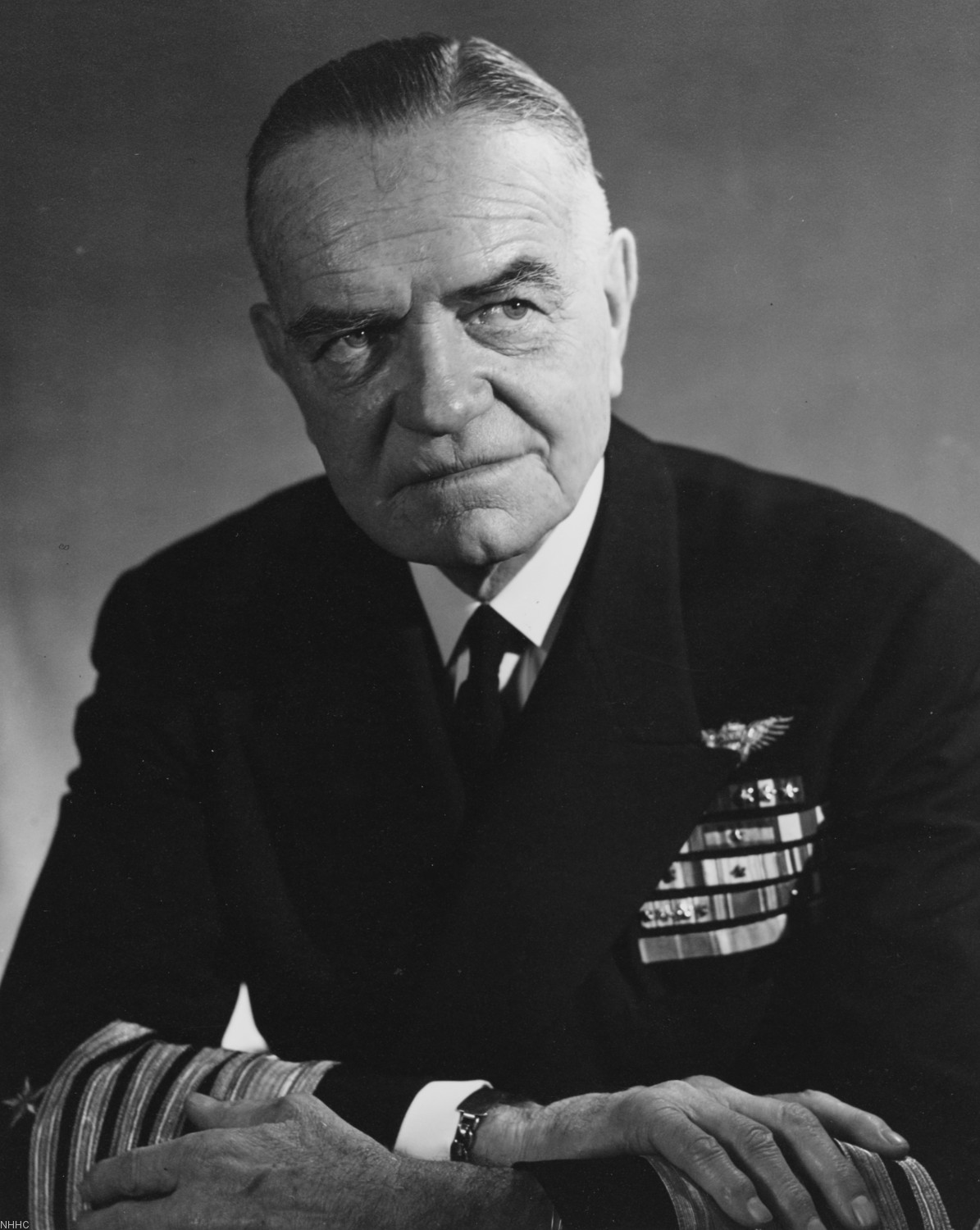 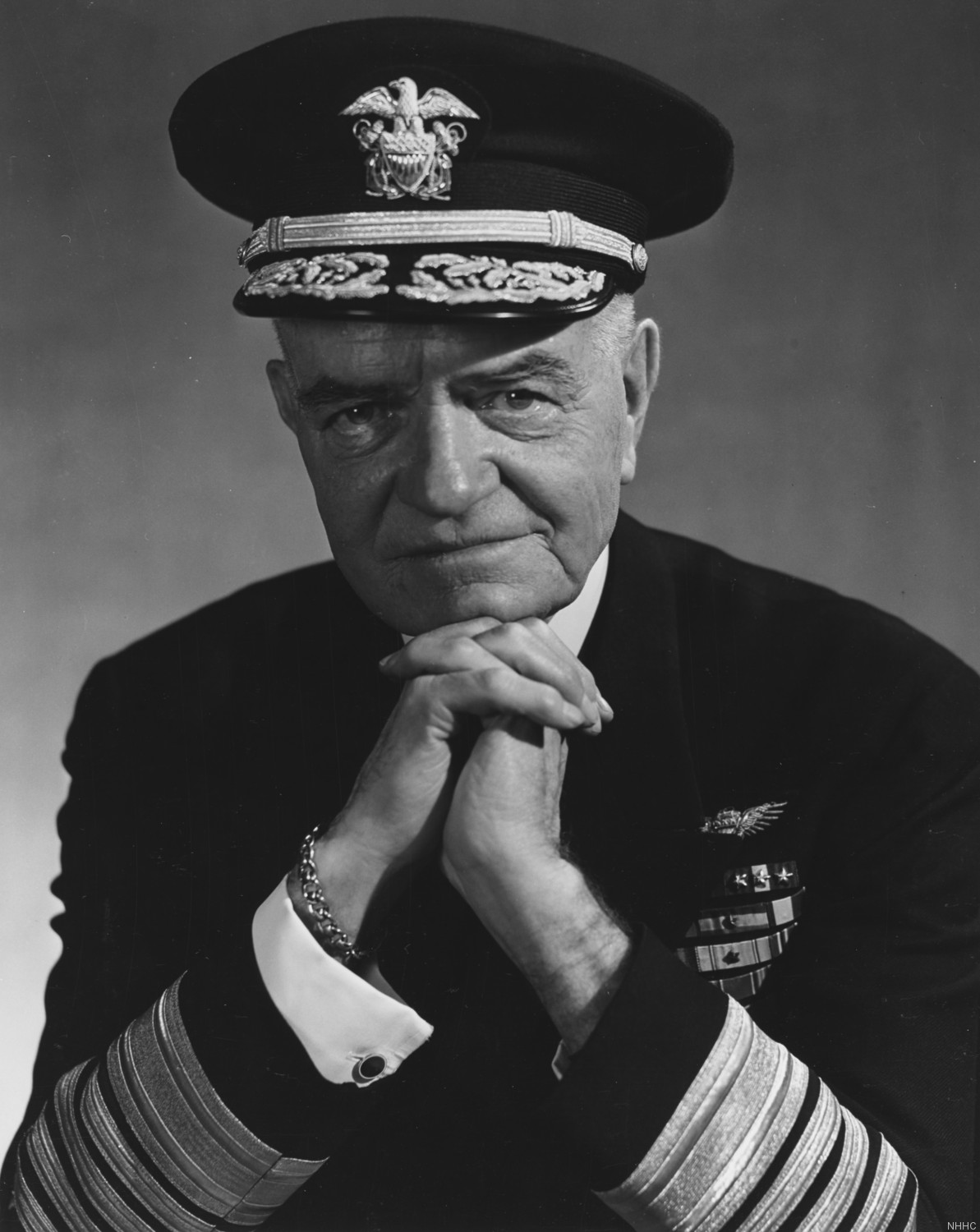
 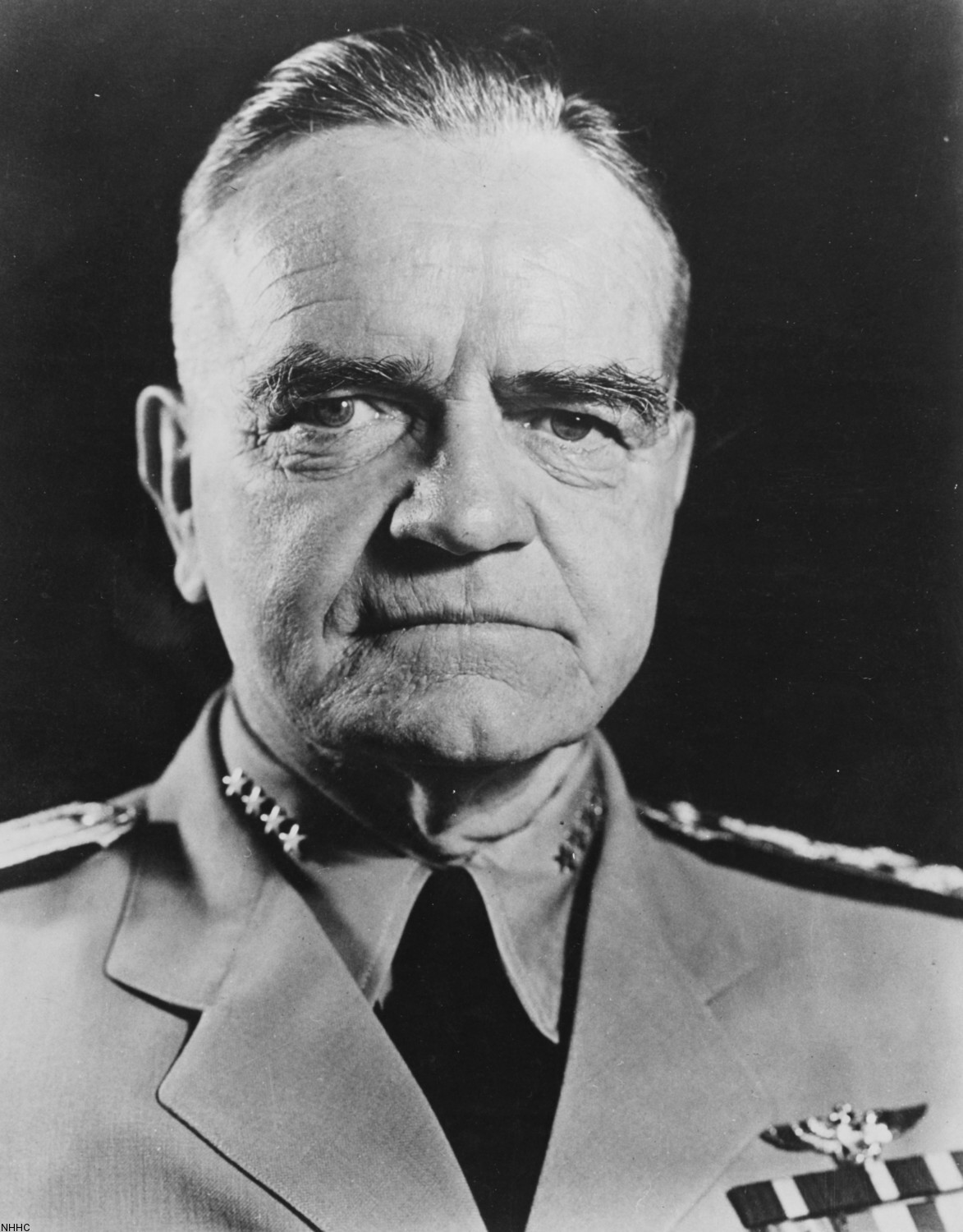
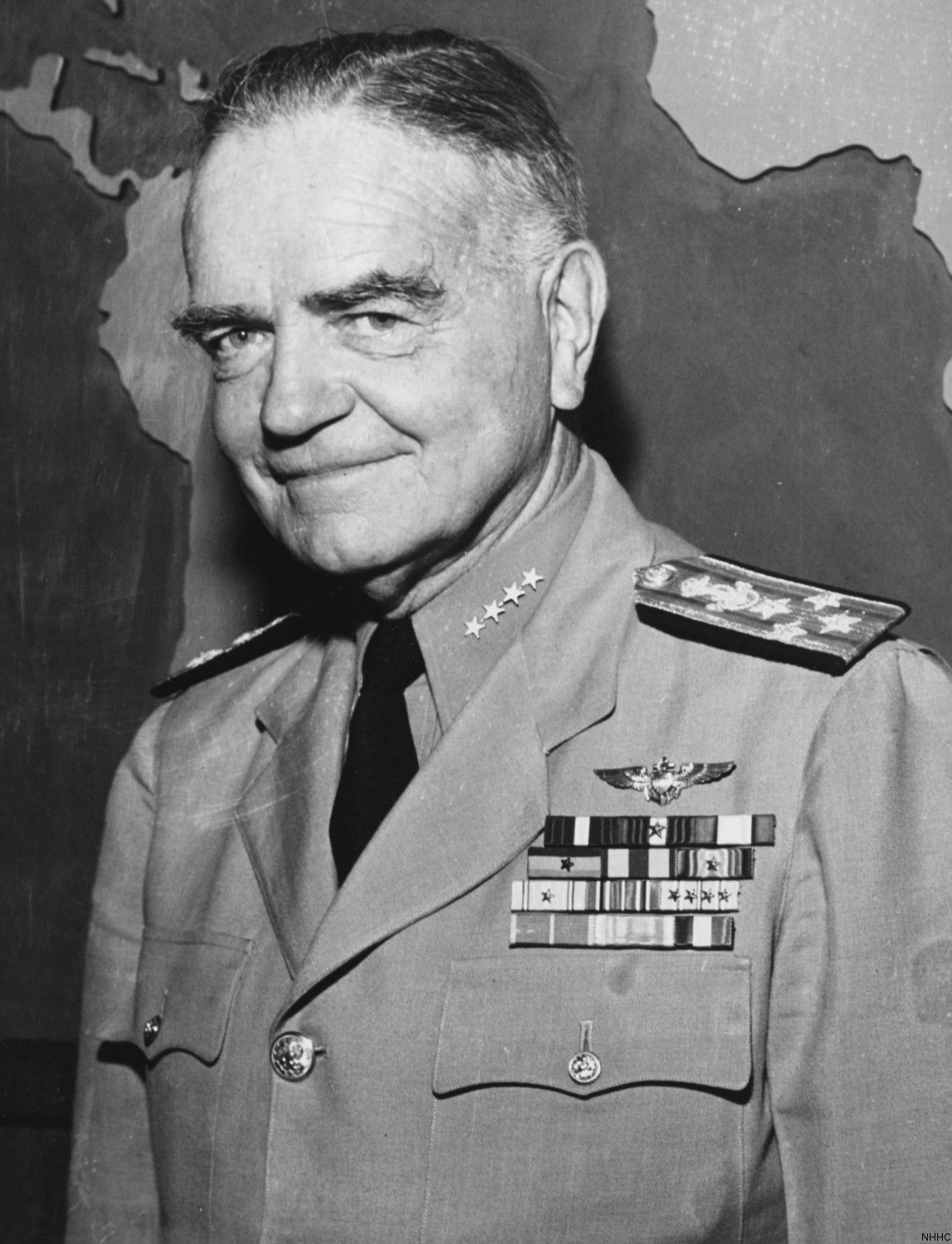 
 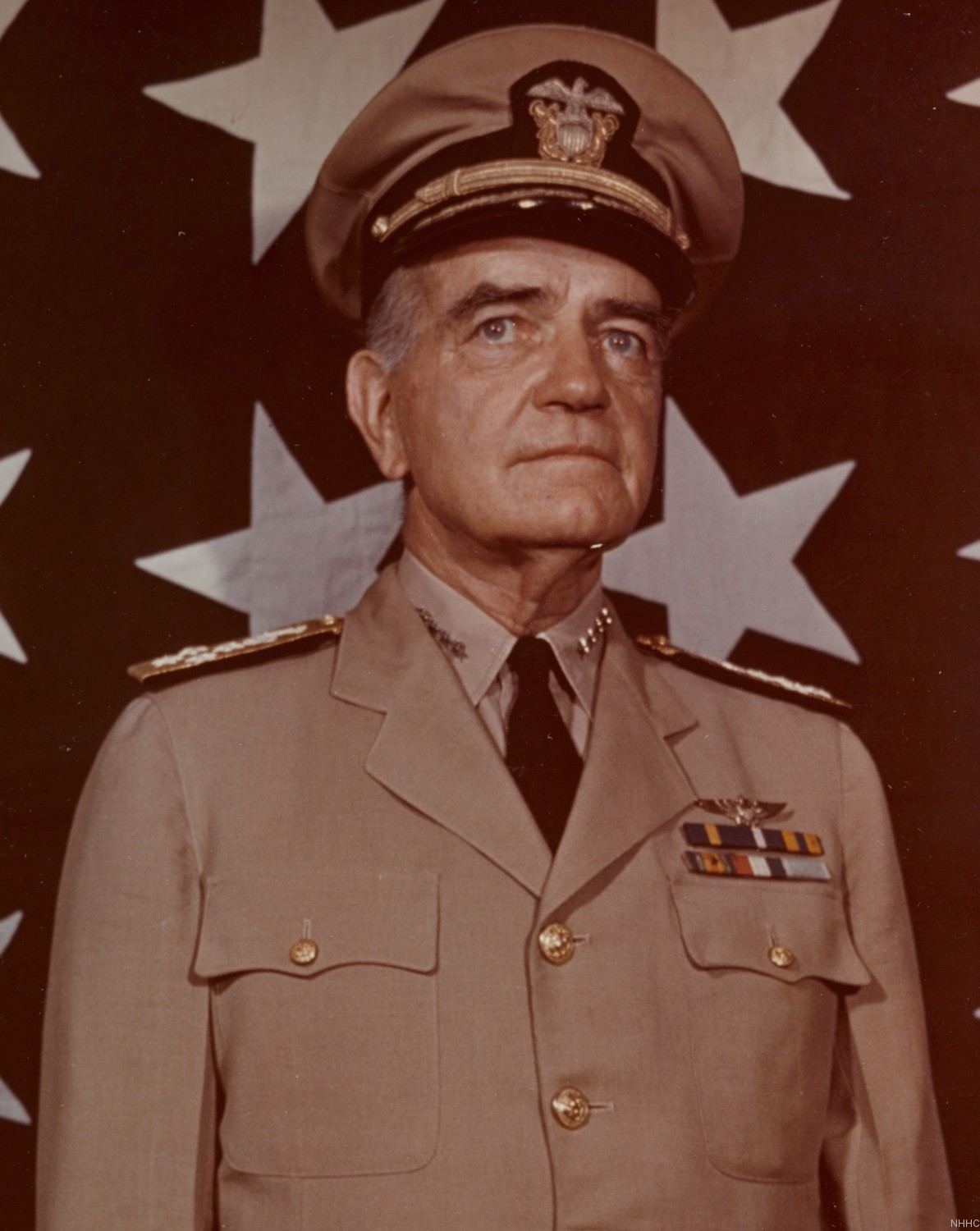
 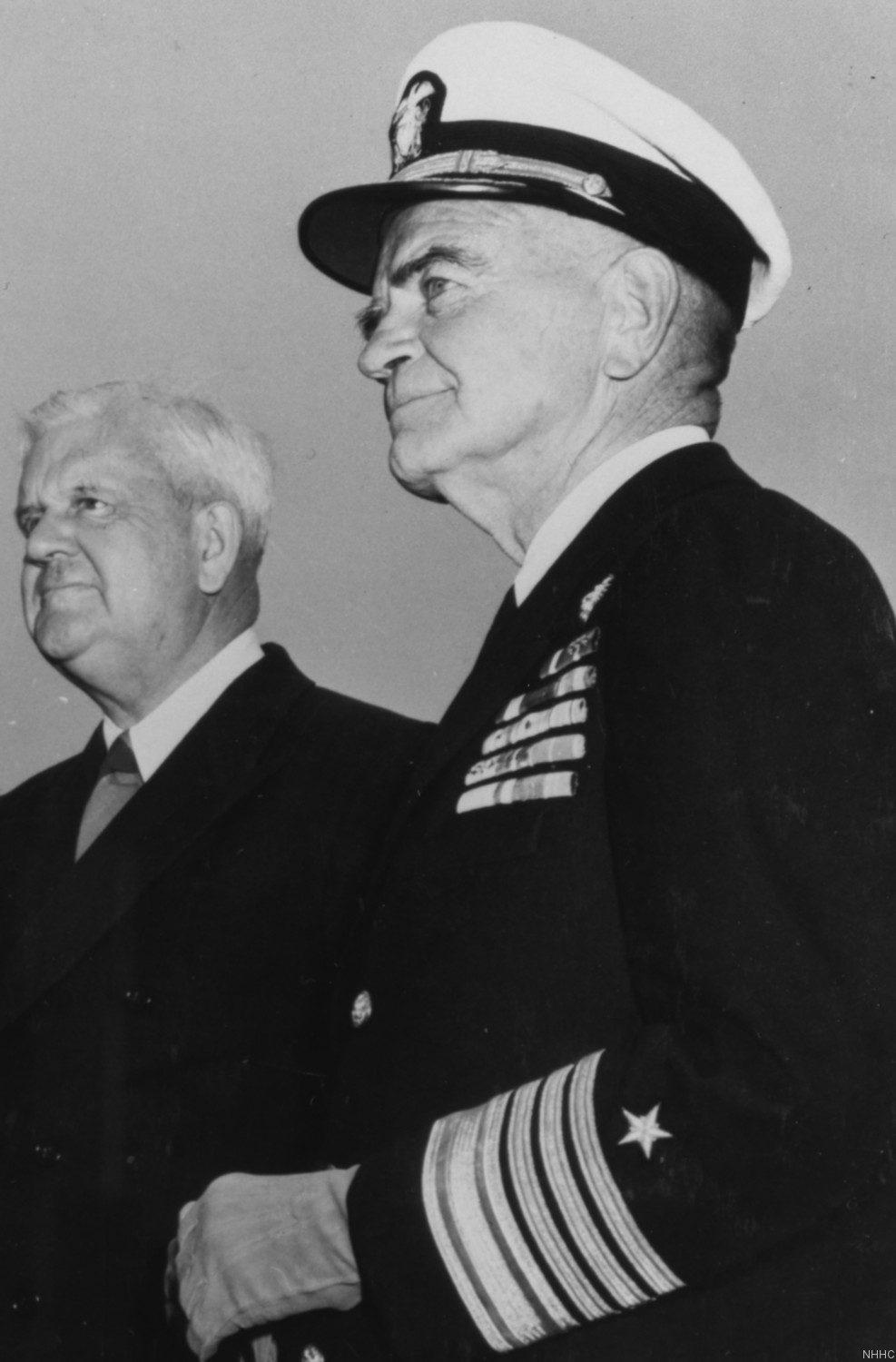
 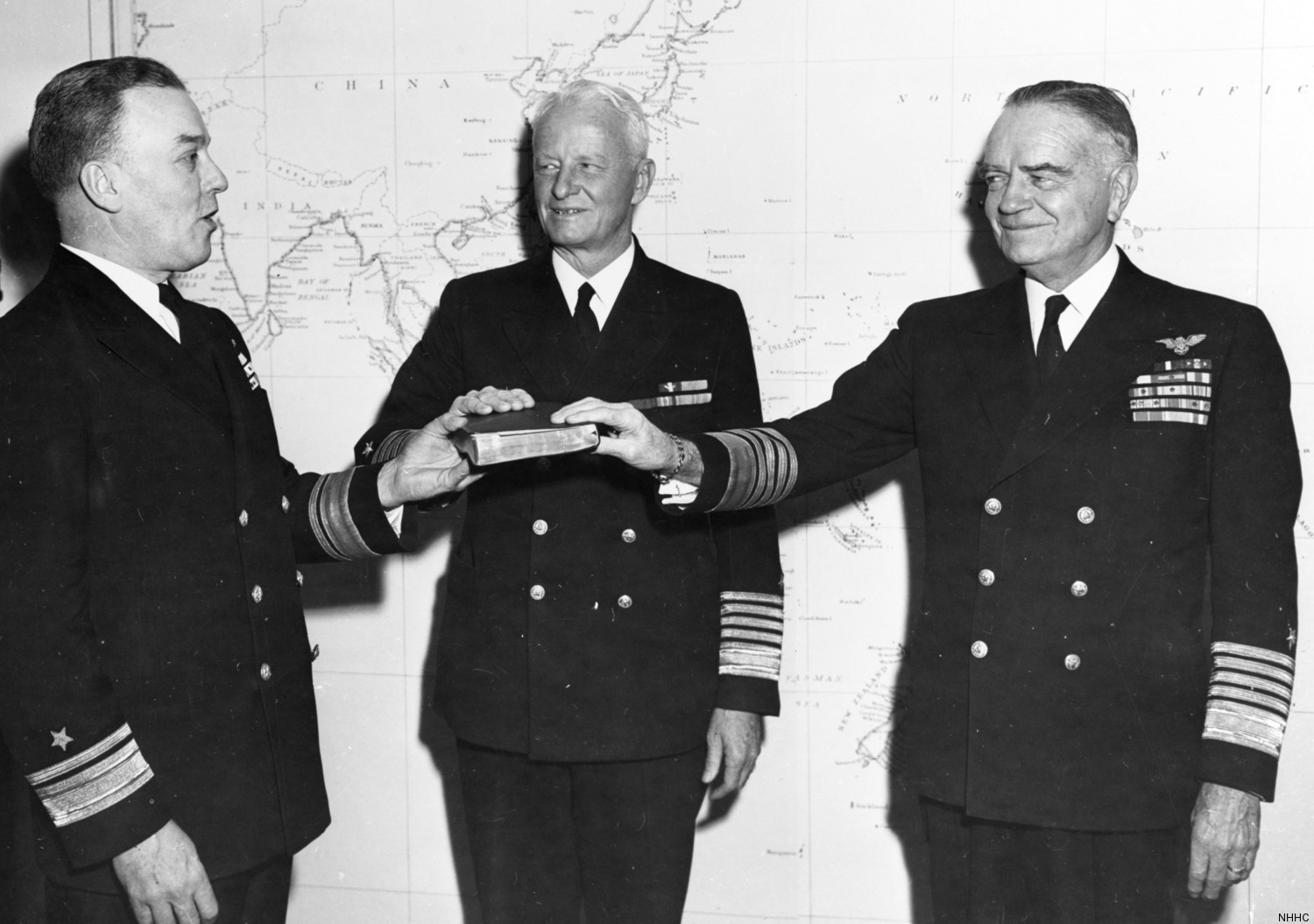 Fleet Admiral Chester W. Nimitz and Fleet Admiral William F. Halsey, are sworn as permanent fleet admirals of the Navy by Rear Admiral Oswald S. Colclough, USN, Judge Advocate General of the Navy, representing the Secretary of Navy - May 13, 1946 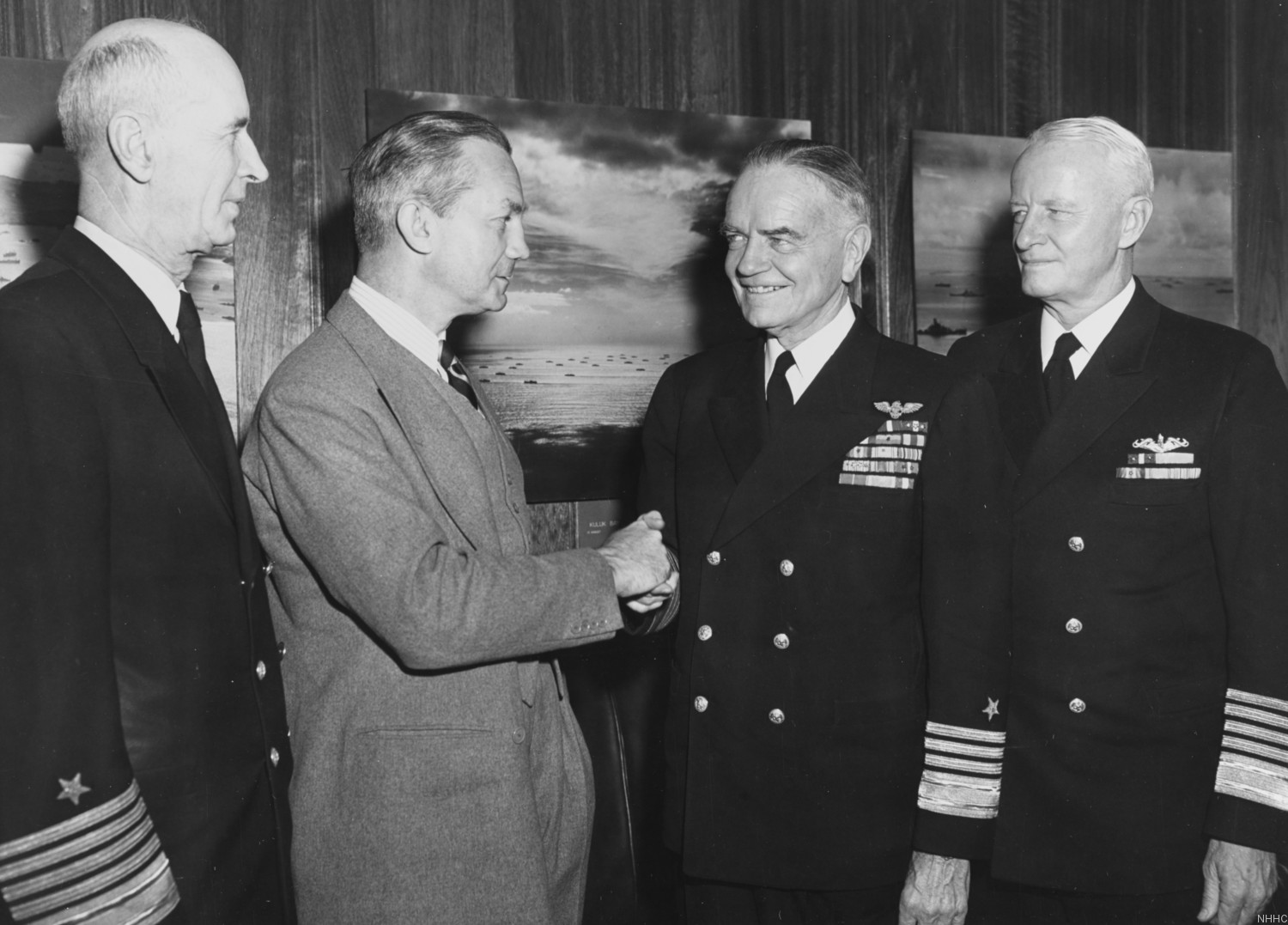 Fleet Admiral Ernest J. King, James B. Forrestal (Secretary of the Navy), Fleet Admiral William F. Halsey and Fleet Admiral Chester W. Nimitz during Halsey's commission as a five-star admiral - December 1945  Admiral William F. Halsey is presented with a Gold Star in lieu of his fourth Distinguished Service Medal by Fleet Admiral Chester W. Nimitz, aboard USS Missouri (BB 63) at Pearl Harbor, Hawaii, 28 September 1945  Admiral William F. Halsey welcomes Fleet Admiral Chester W. Nimitz aboard USS South Dakota (BB 57) - Tokyo Bay - August 29, 1945 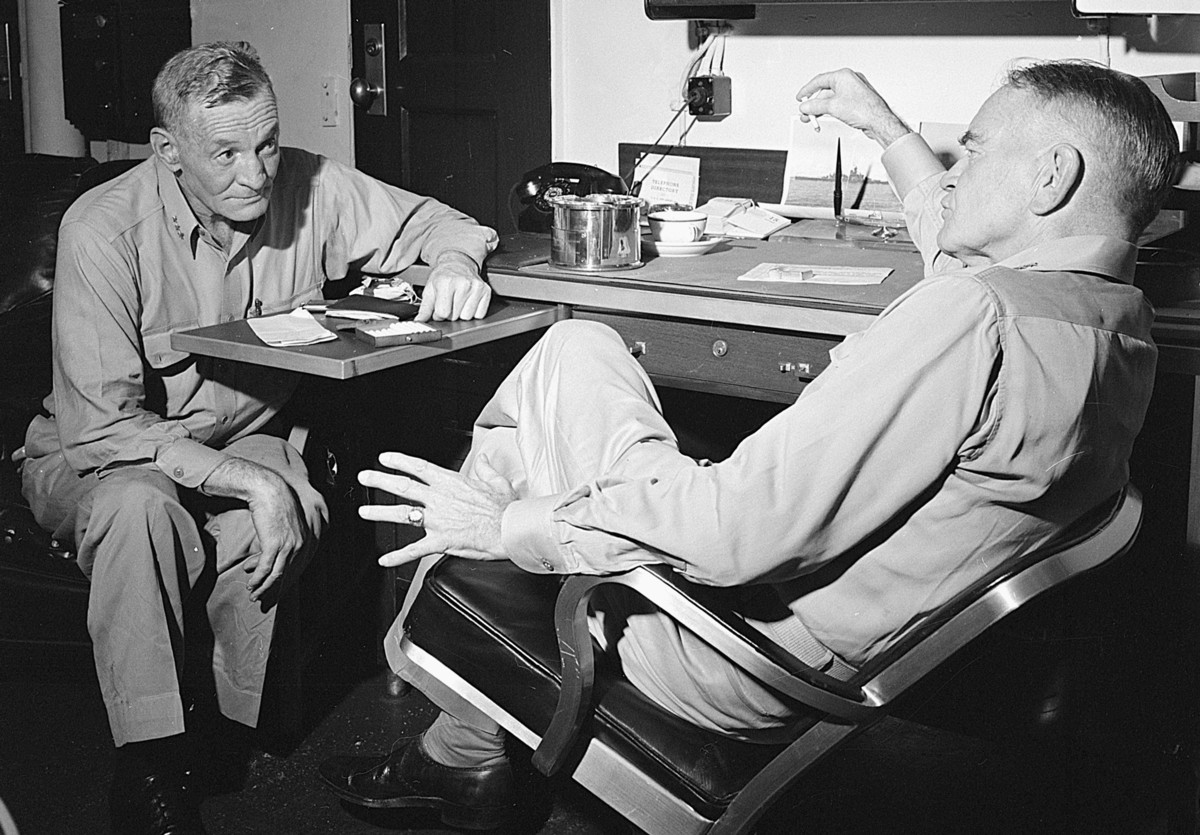 Admiral William F. Halsey confers with Vice Admiral John S. McCain aboard USS New Jersey (BB 62) - December 1944  Admiral William F. Halsey with Secretary of the Navy James Forrestal - 1944 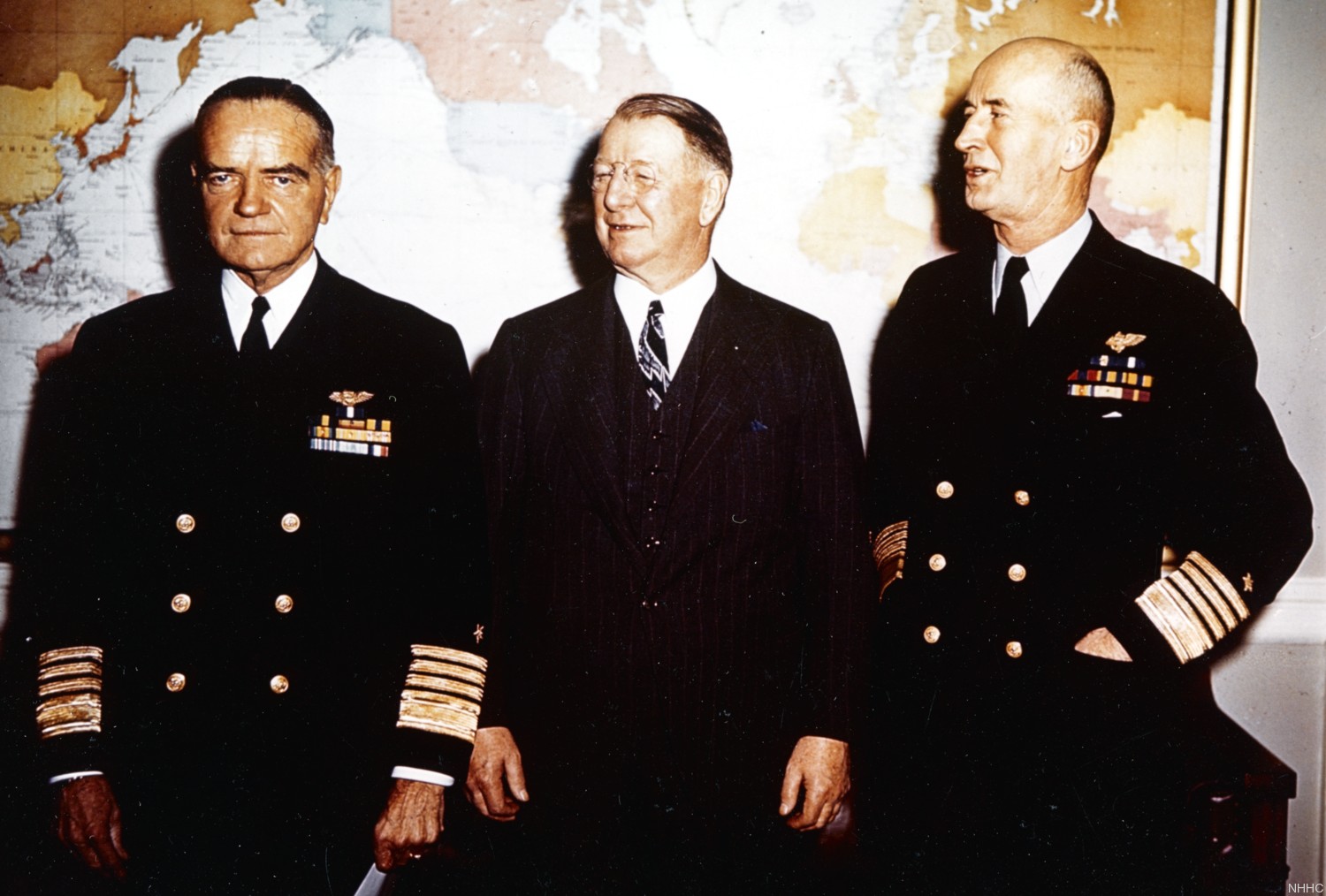 Admiral Halsey, Secretary of the Navy Frank Knox and Admiral Ernest J. King - January 1944  Admiral William F. Halsey and Vice Admiral John S. McCain, Sr. - January 1944  Vice Admiral William F. Halsey is sworn in as Commander, South Pacific Force - November 27, 1942  Vice Admiral William F. Halsey with his staff aboard USS Enterprise (CV 6) - 1941 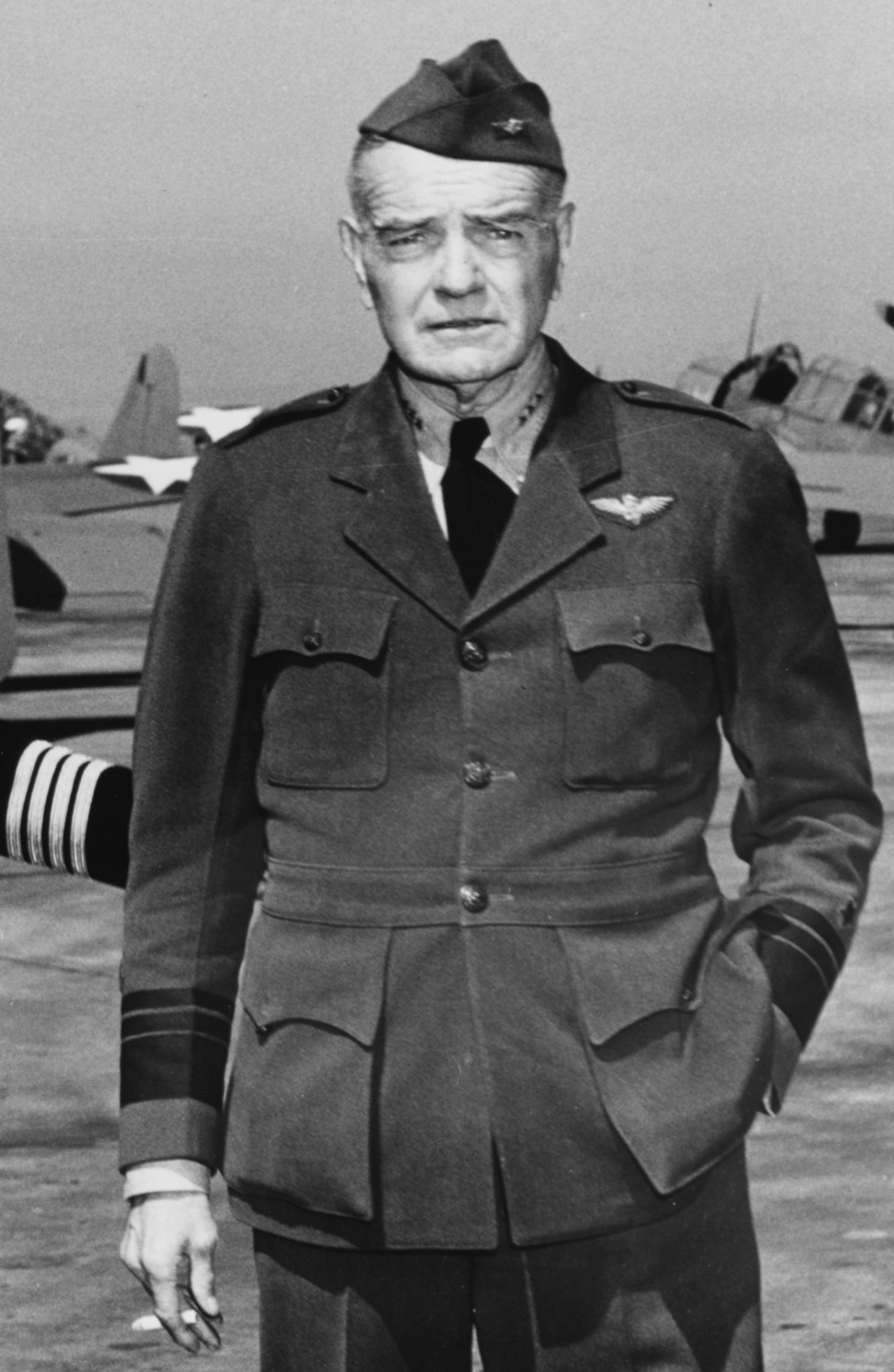
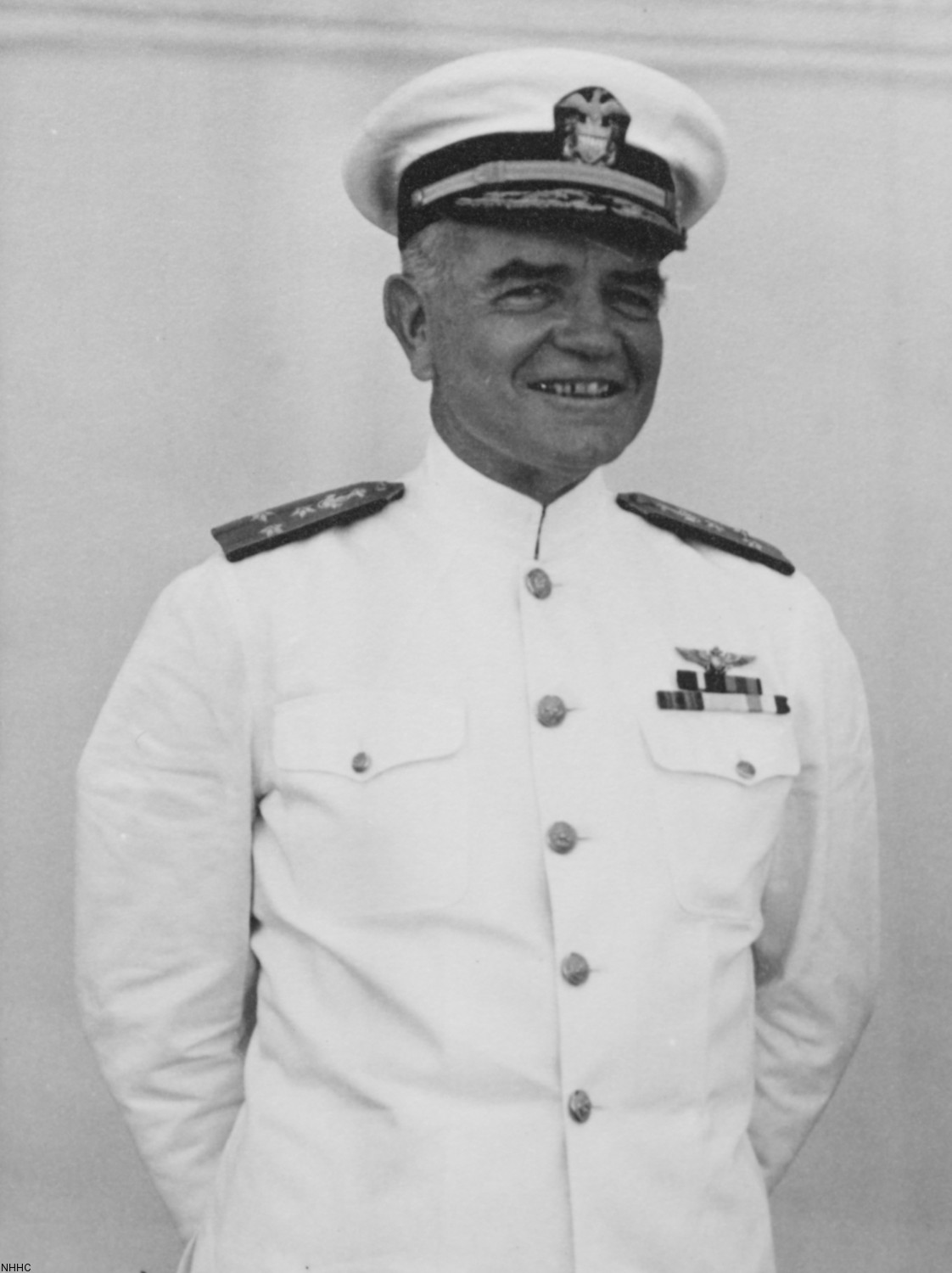 Vice Admiral William F. Halsey |
||
| patches + more | ||
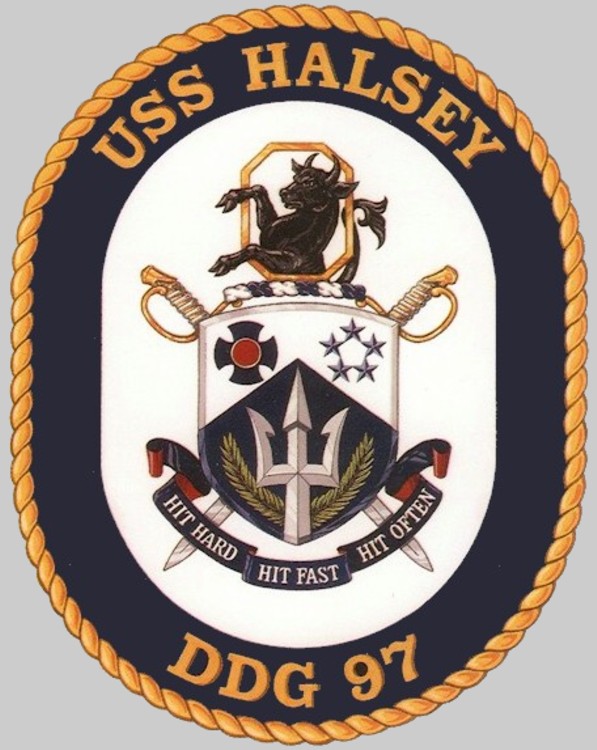 |
||
|
|
seaforces.org |
USN ships
start page | |